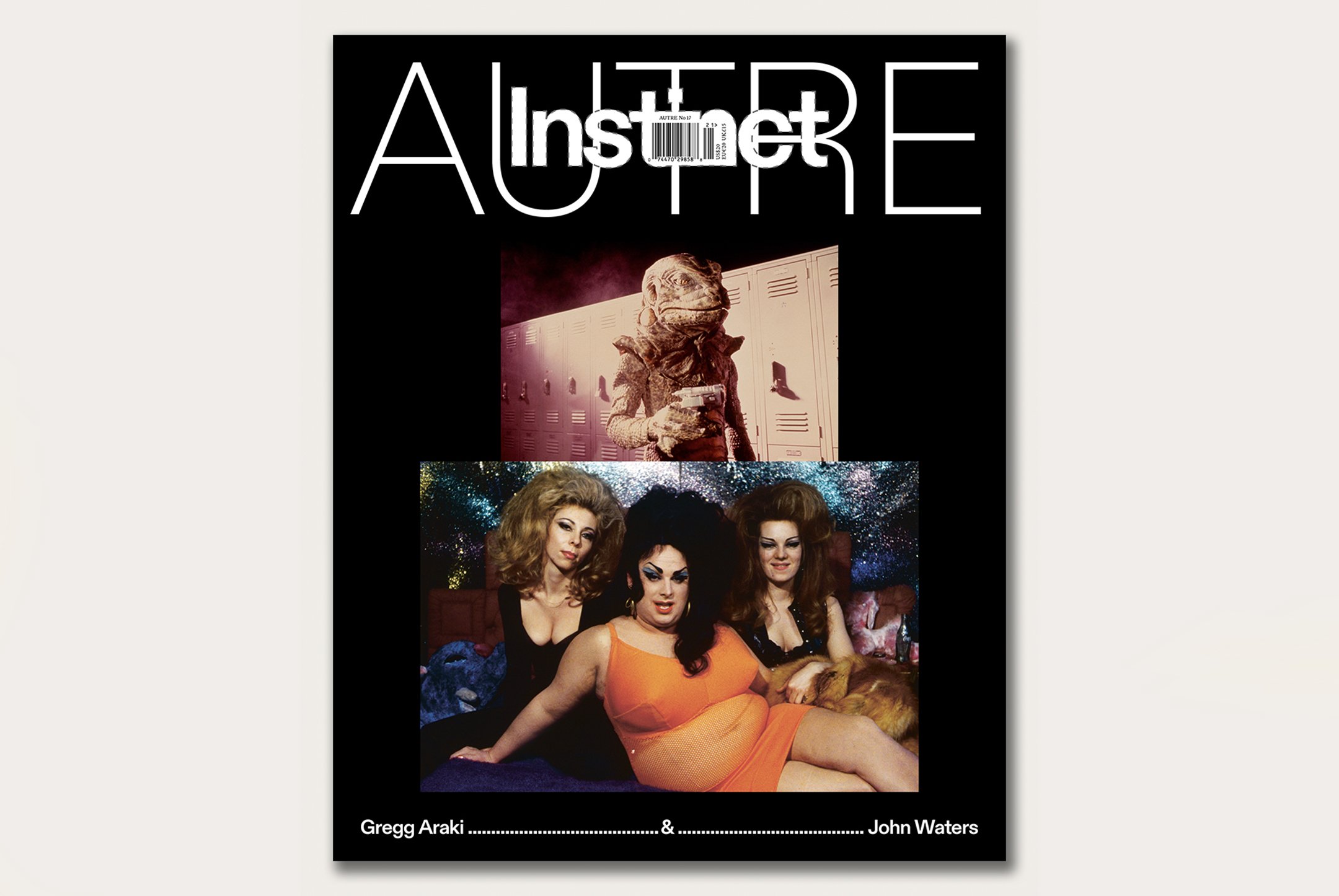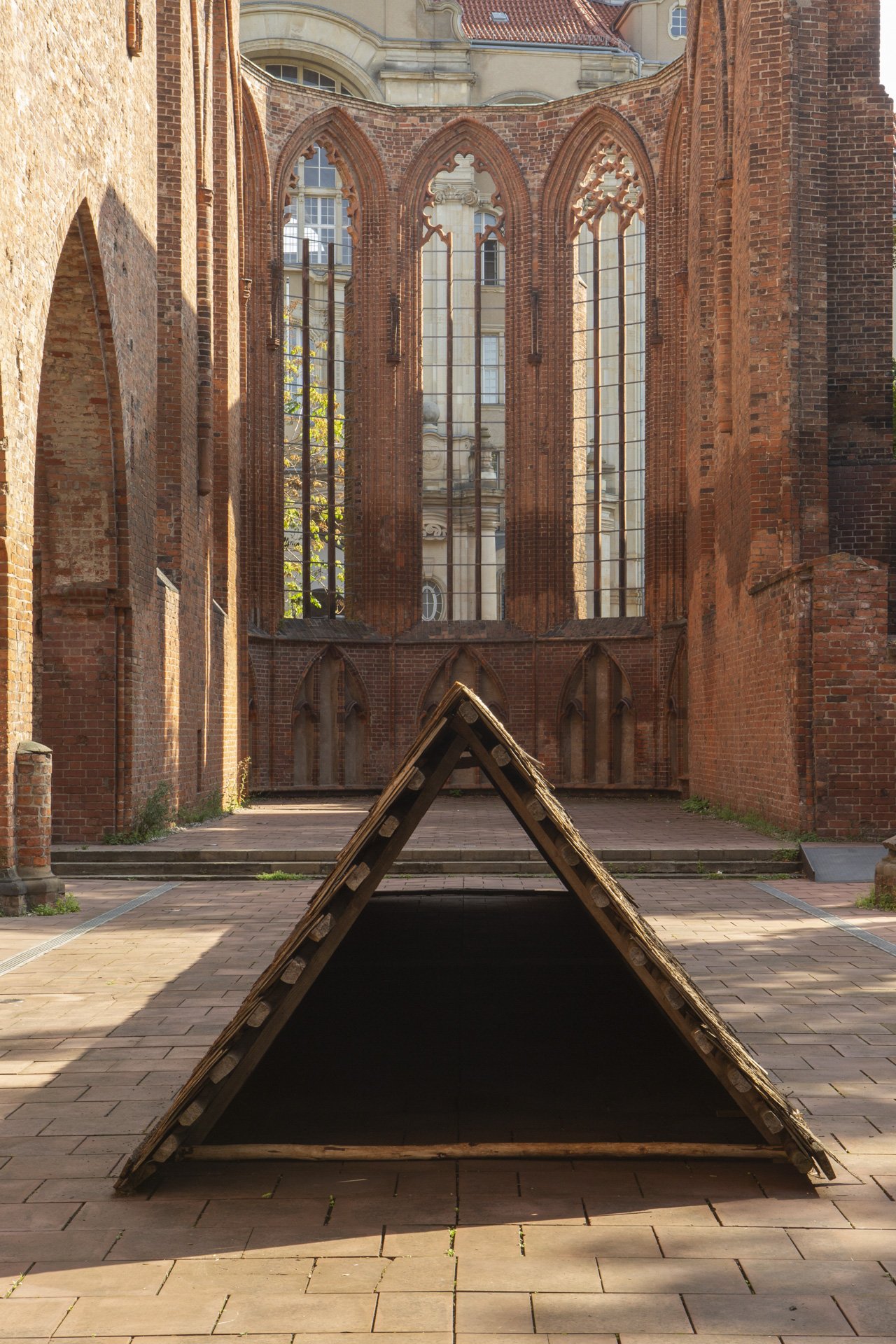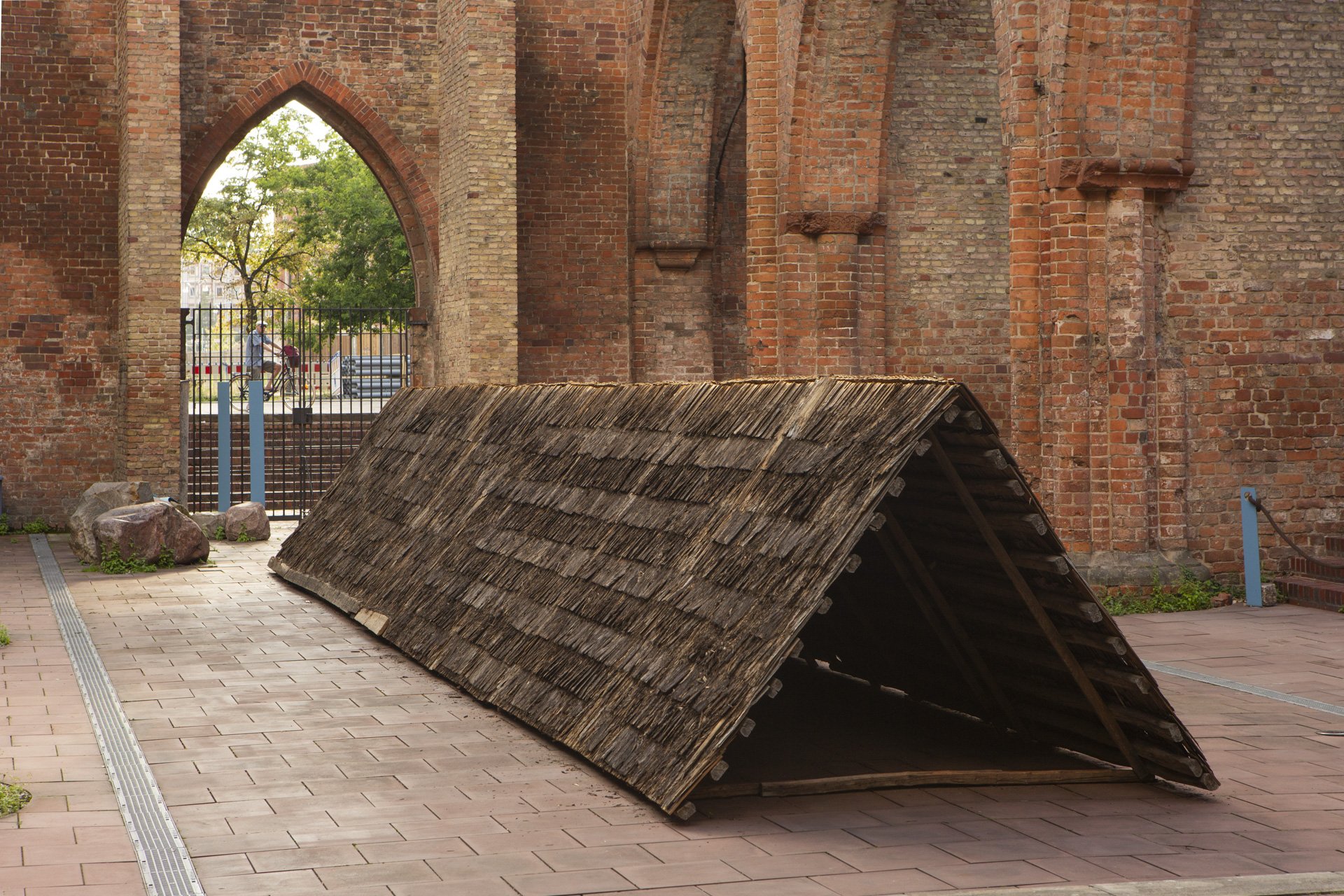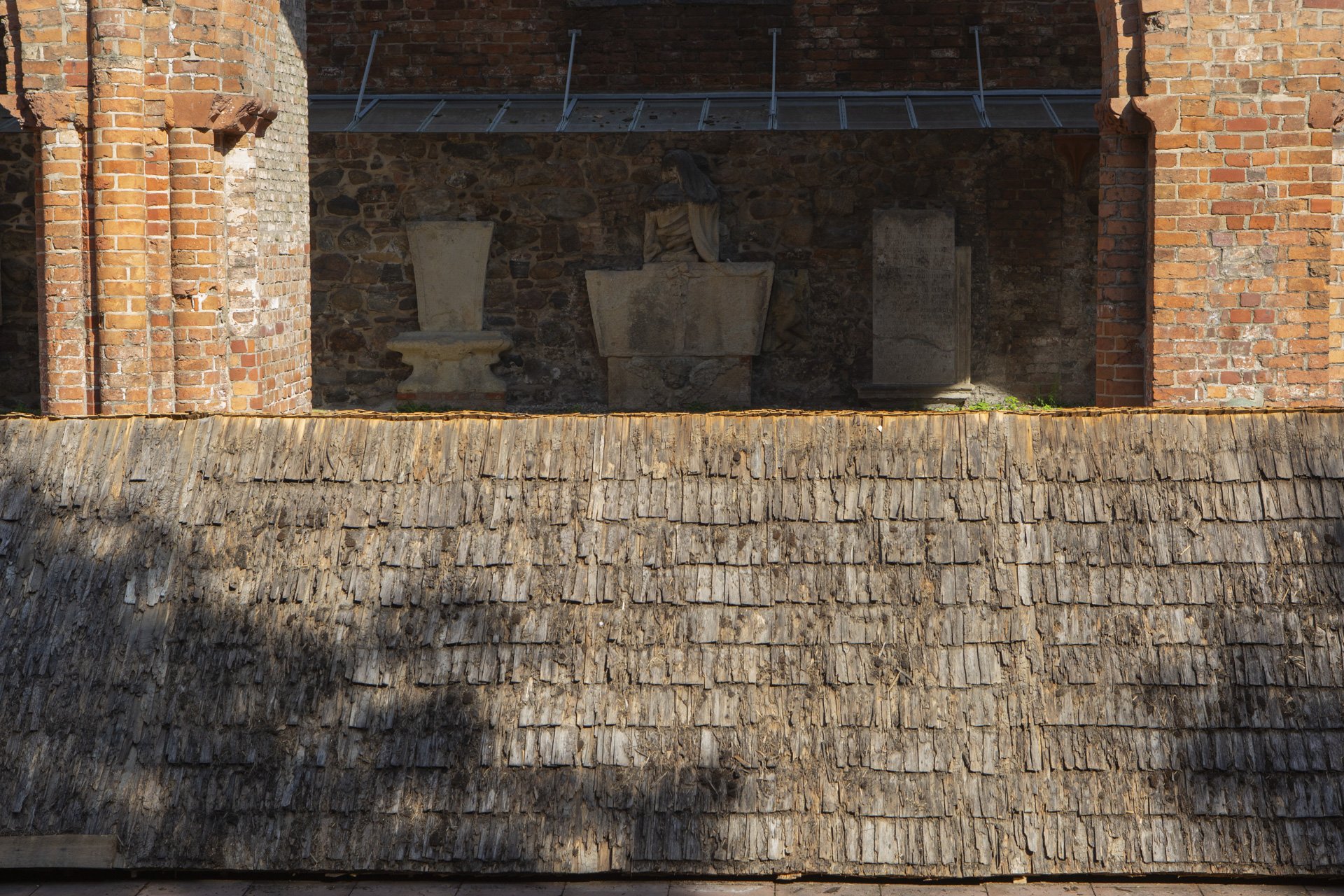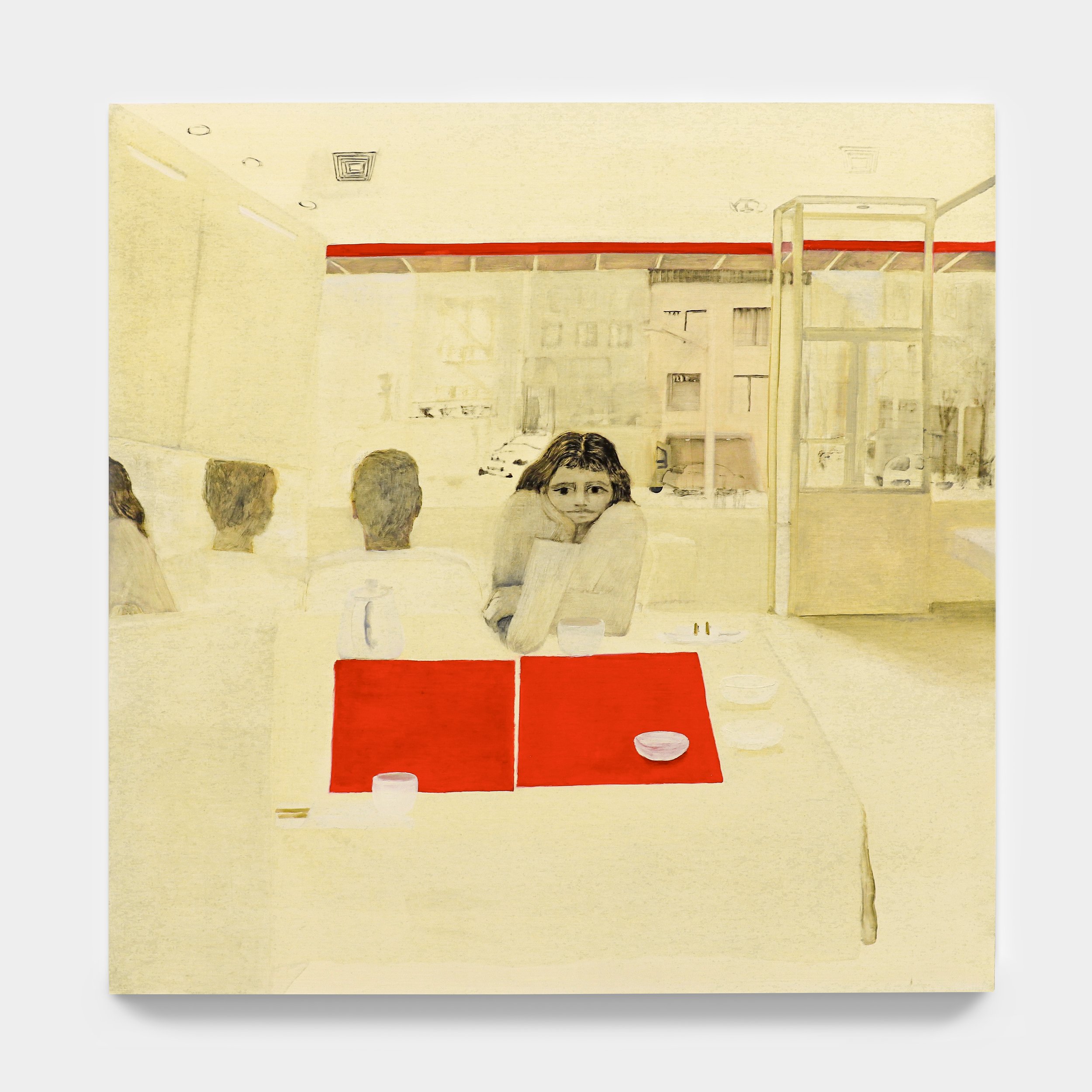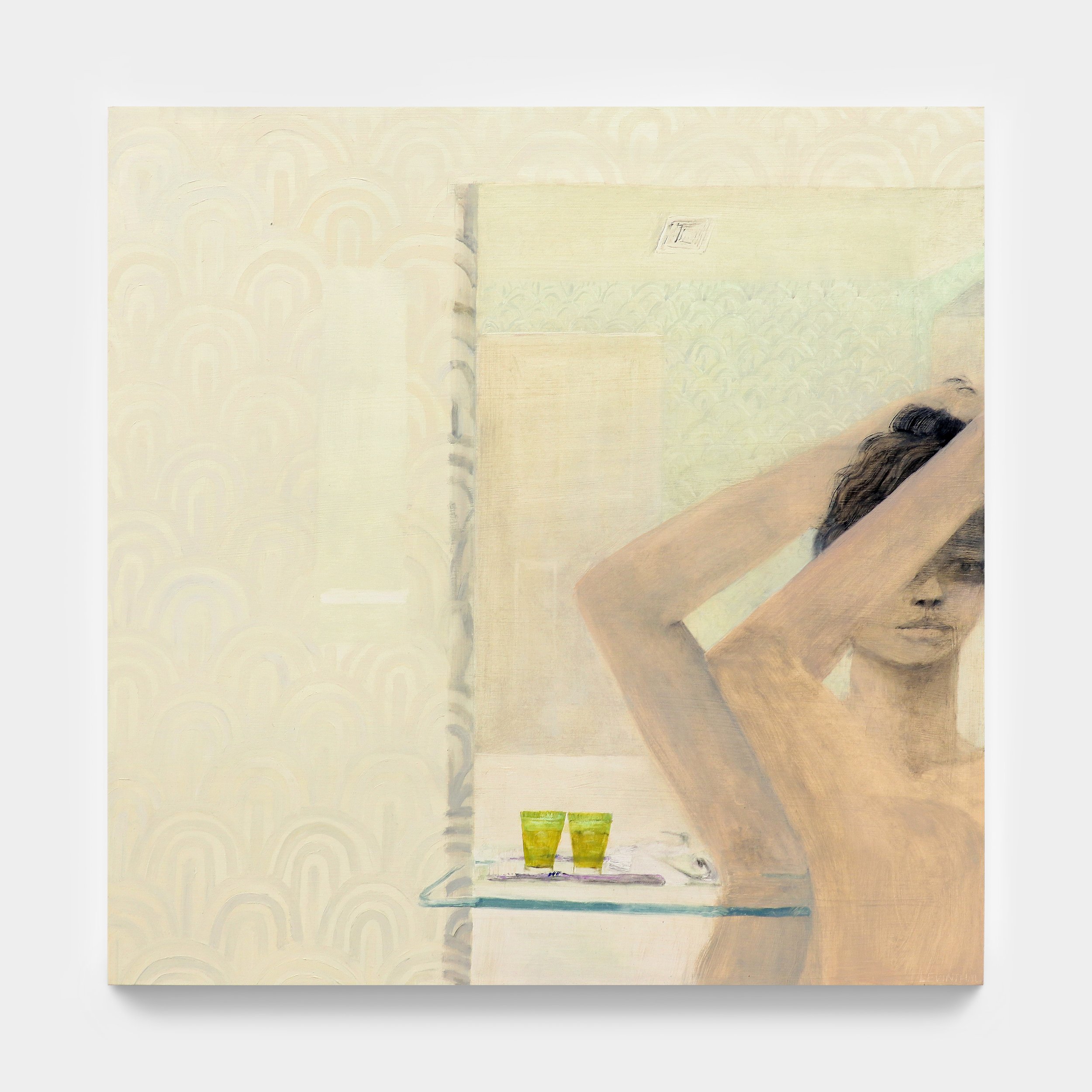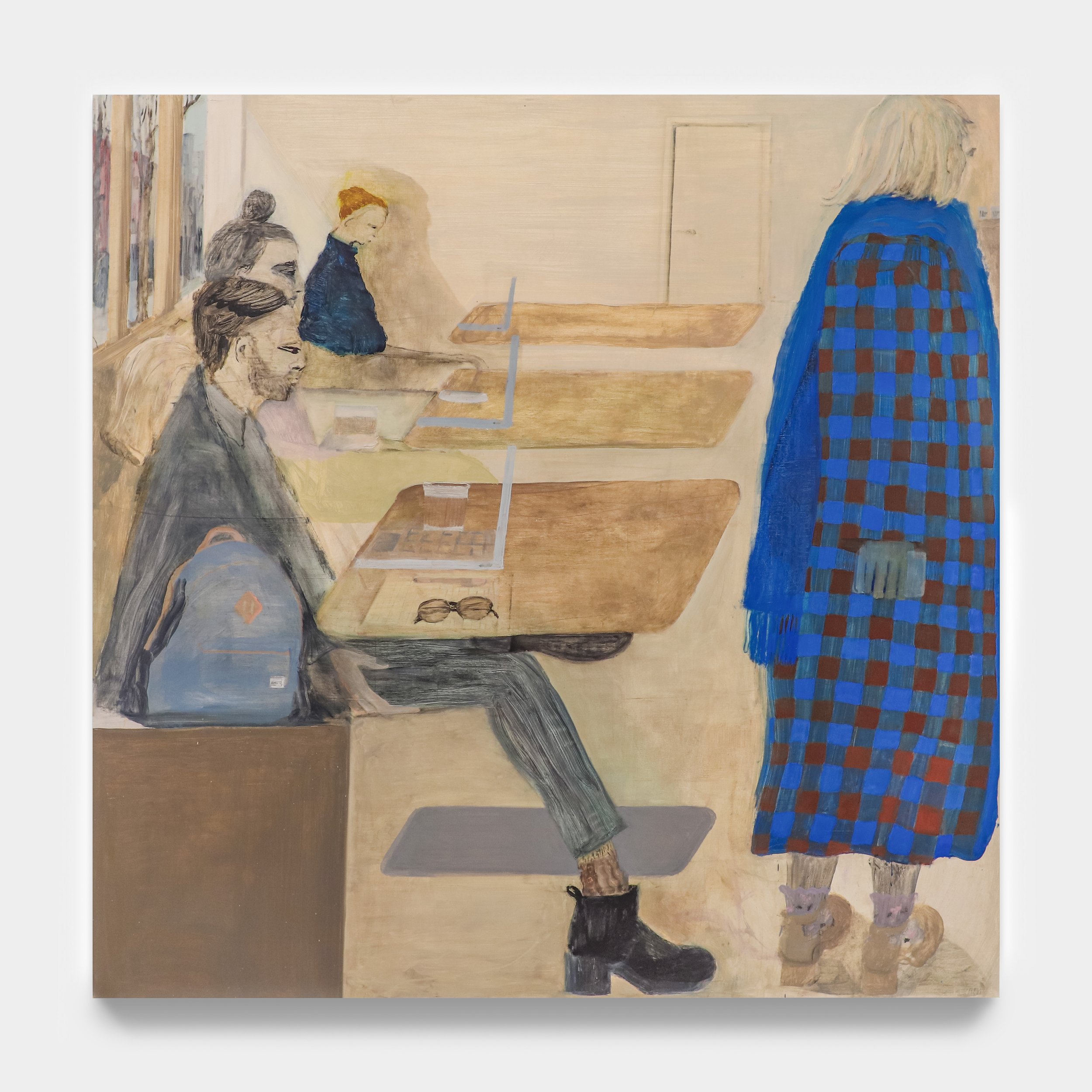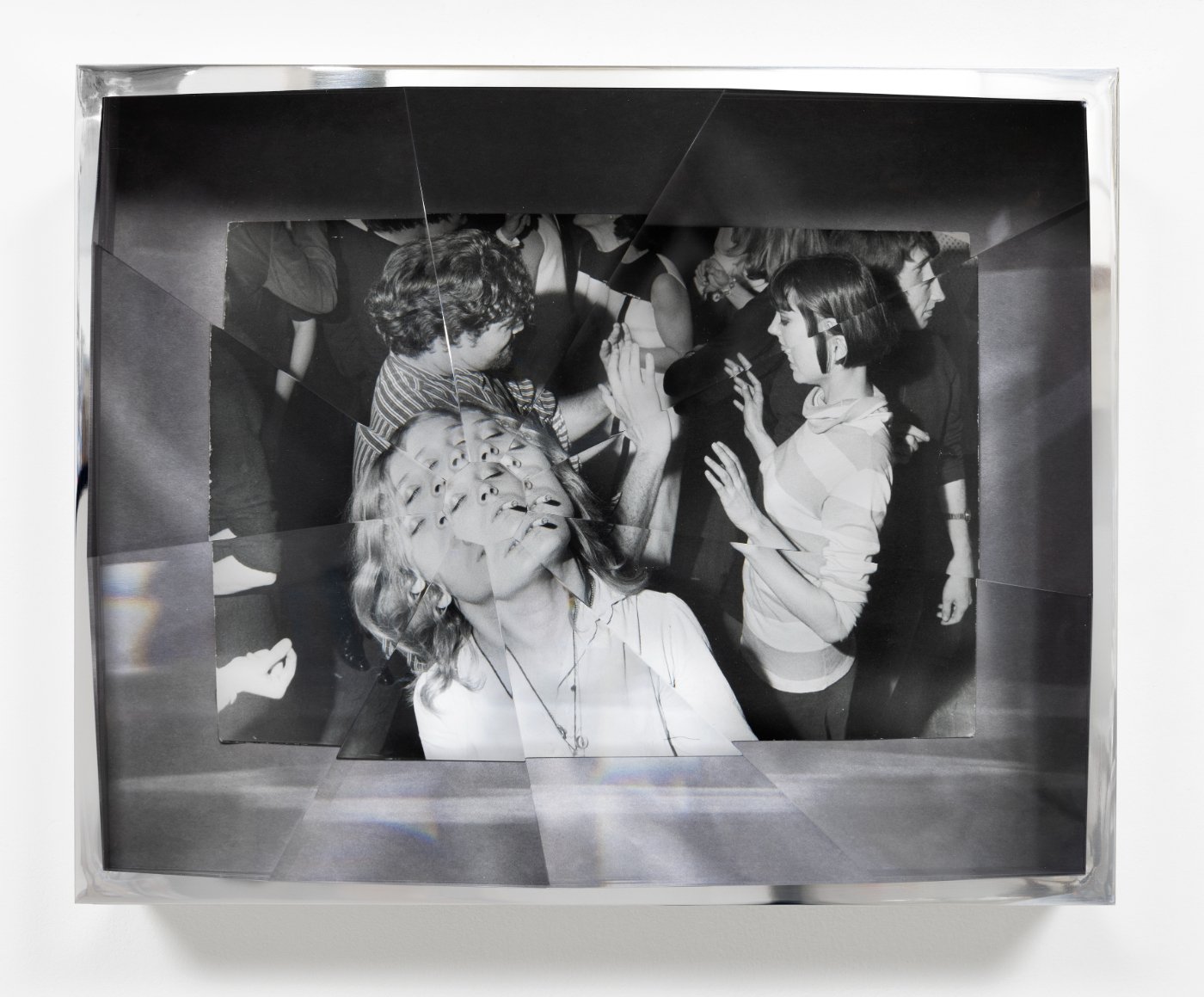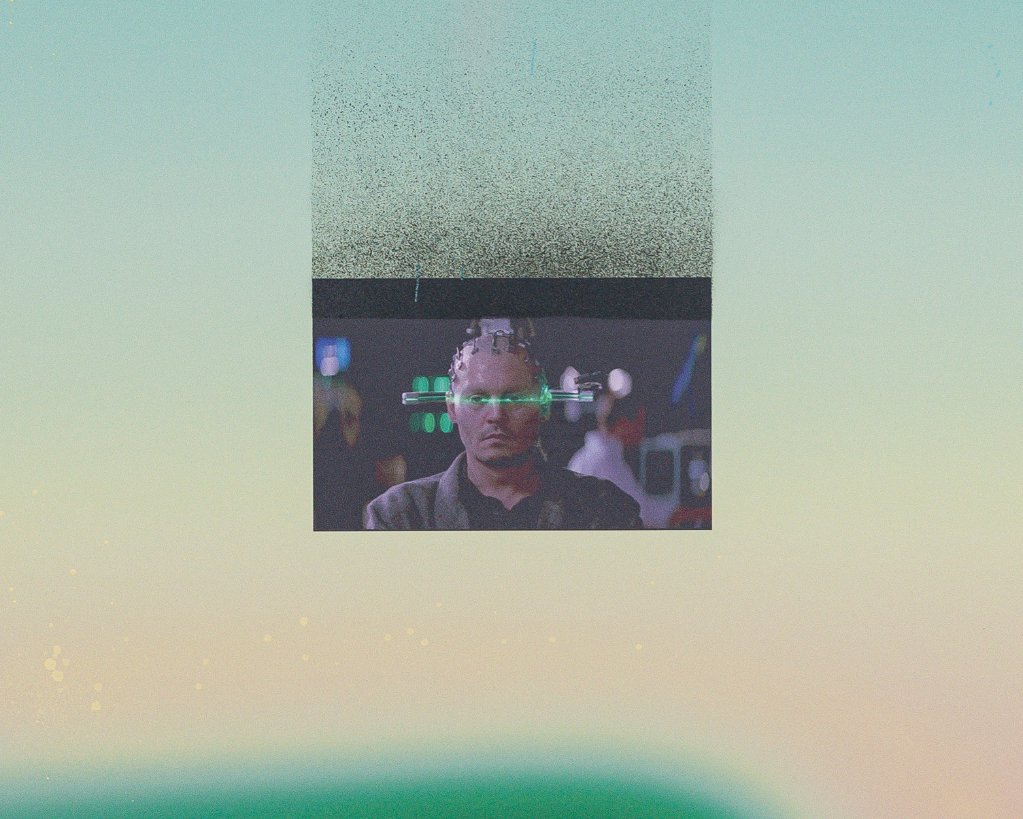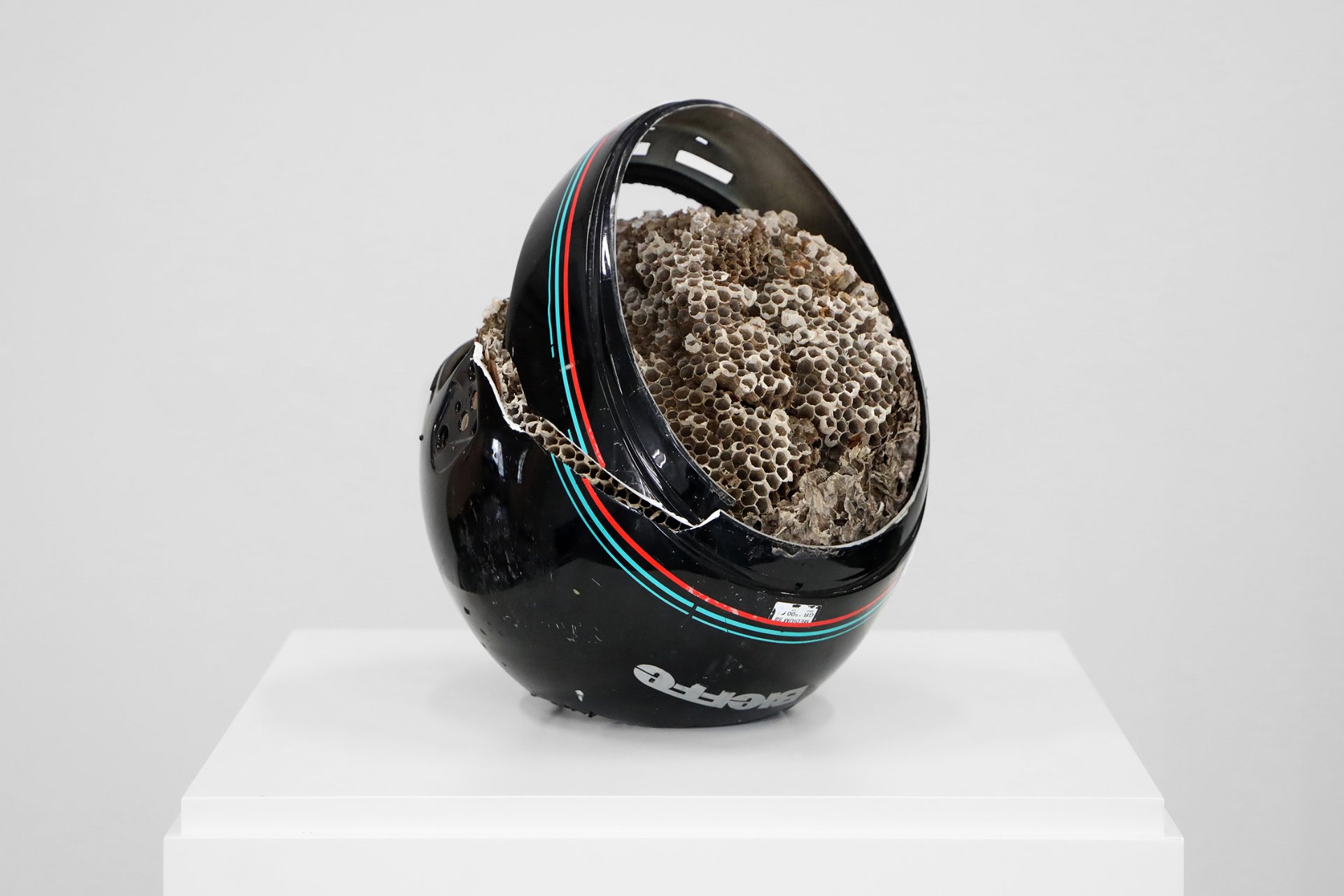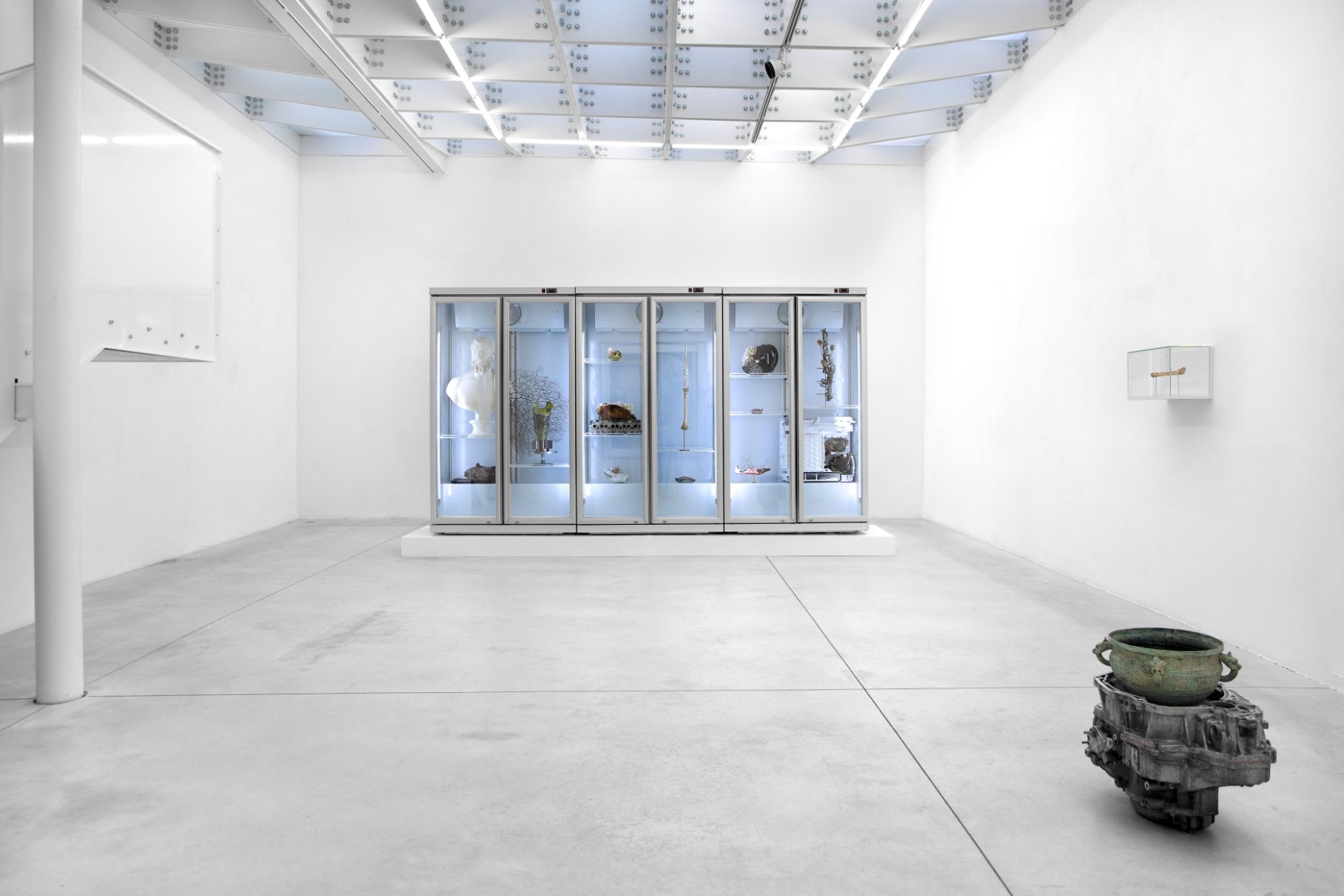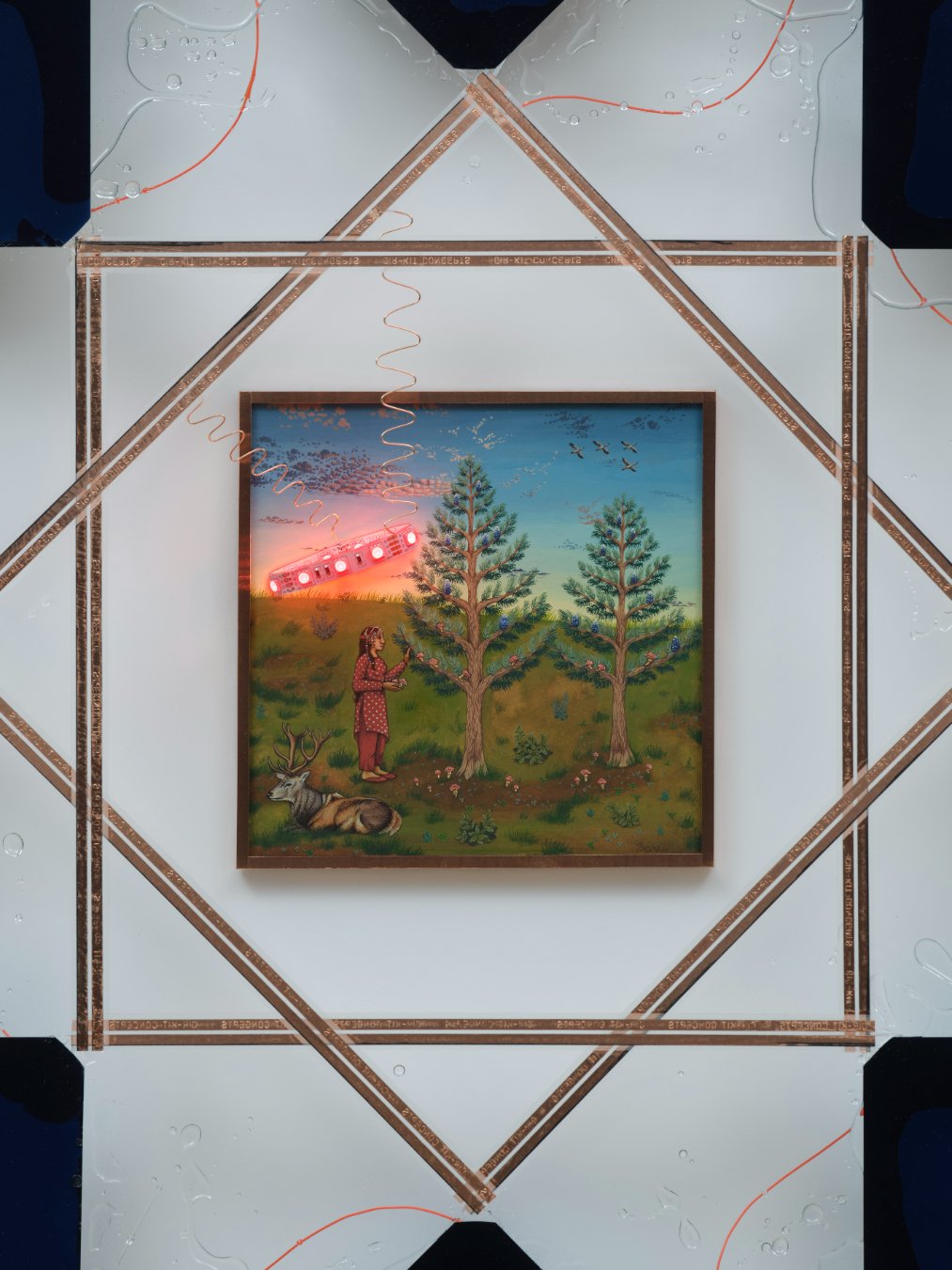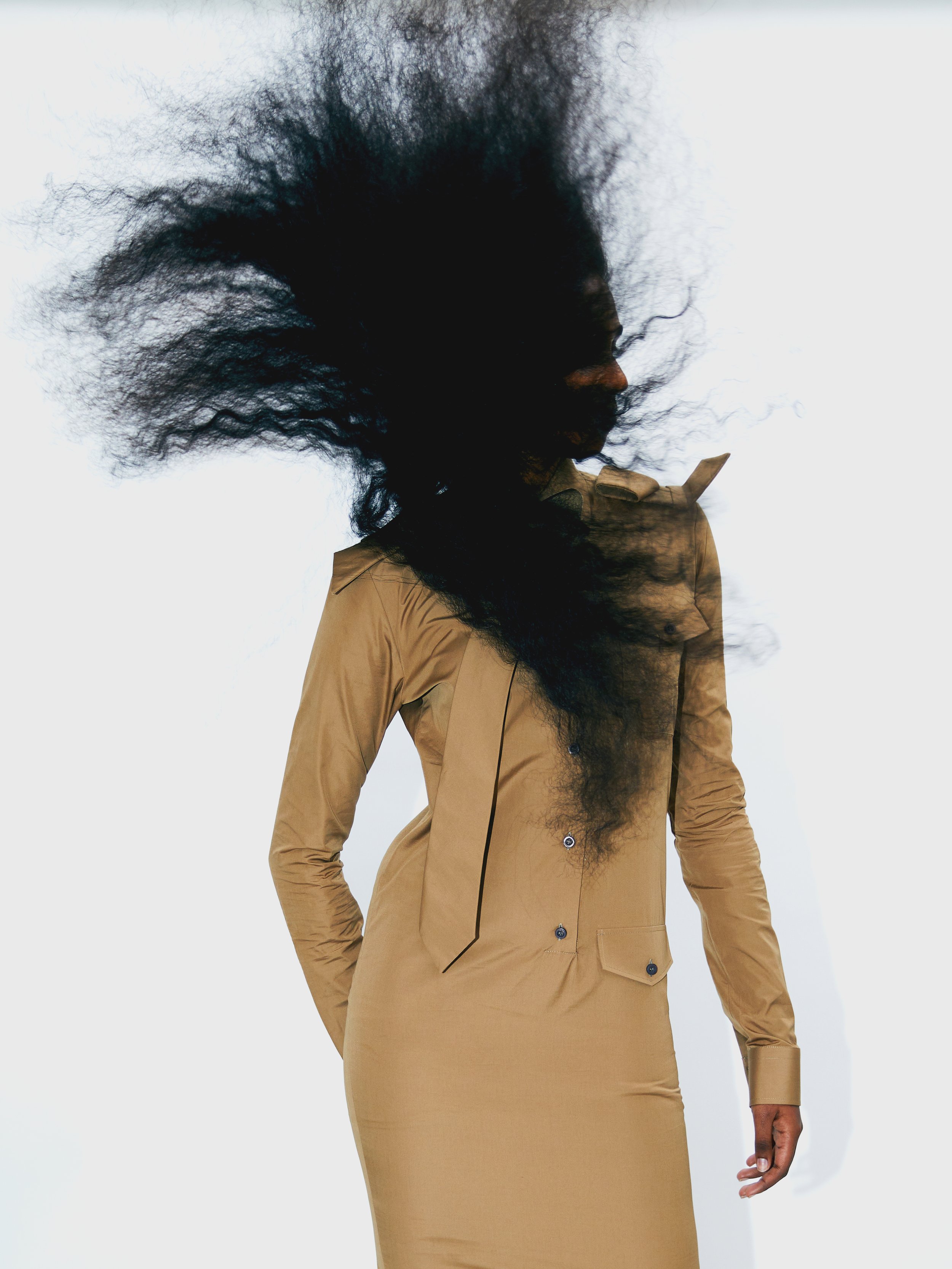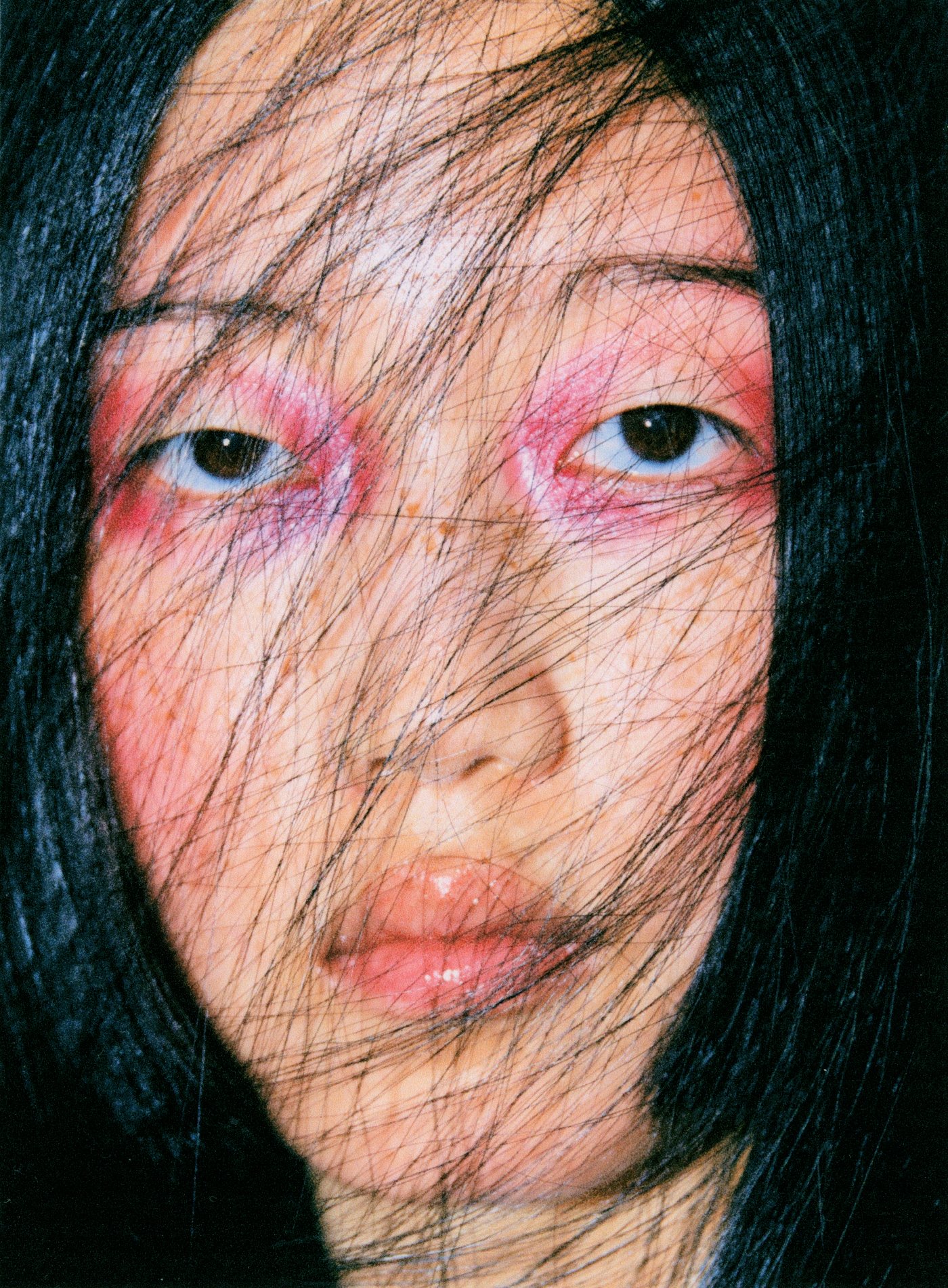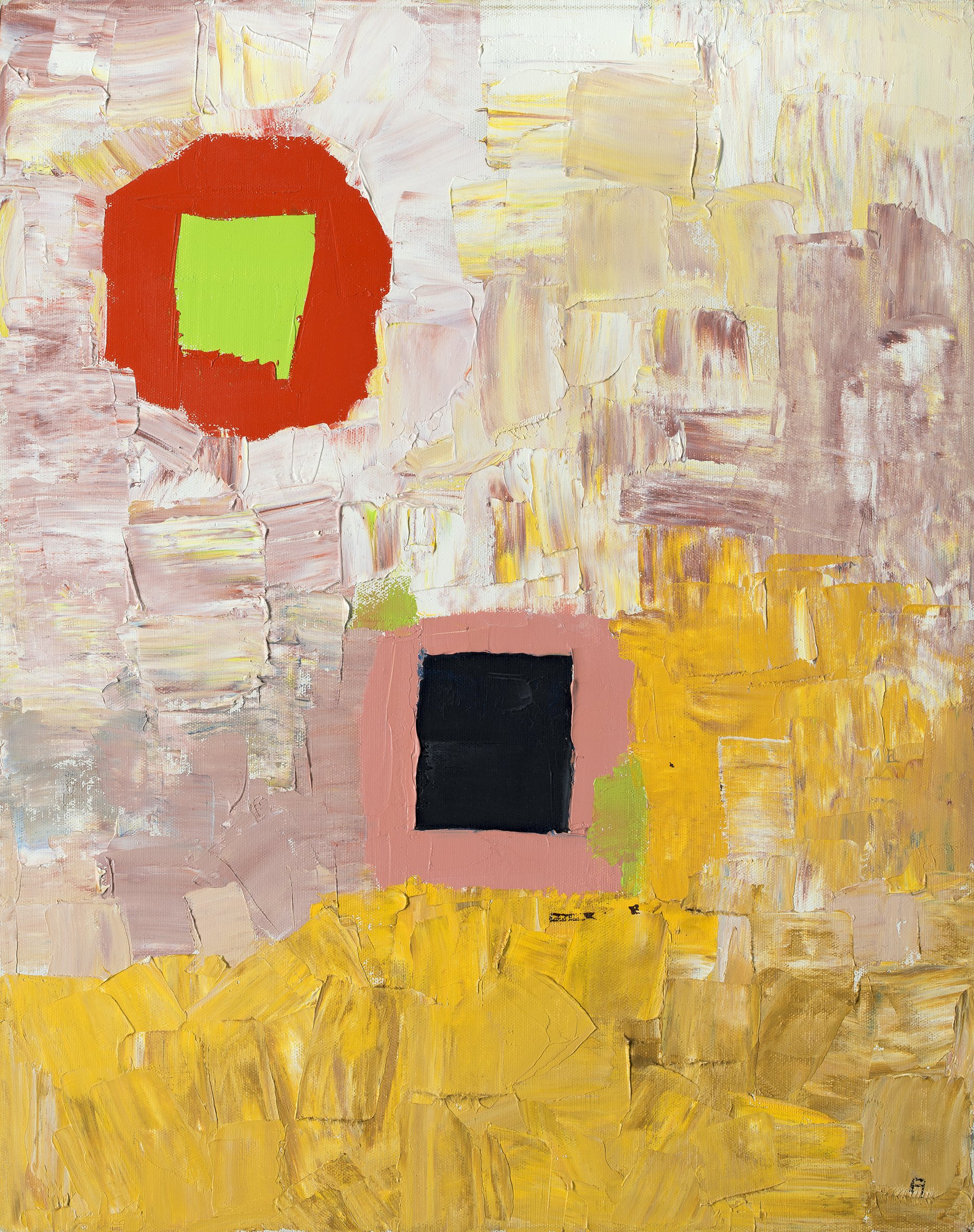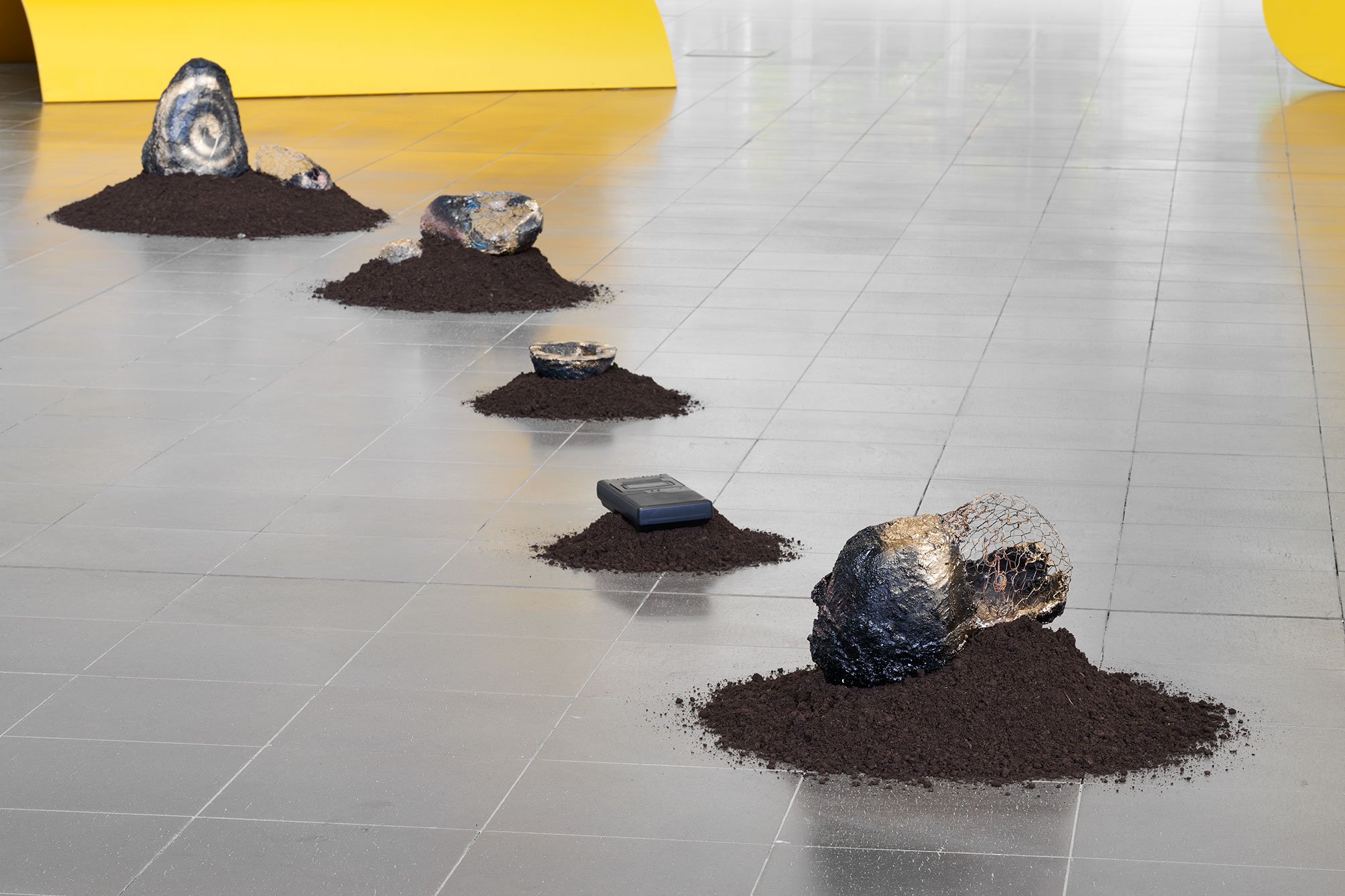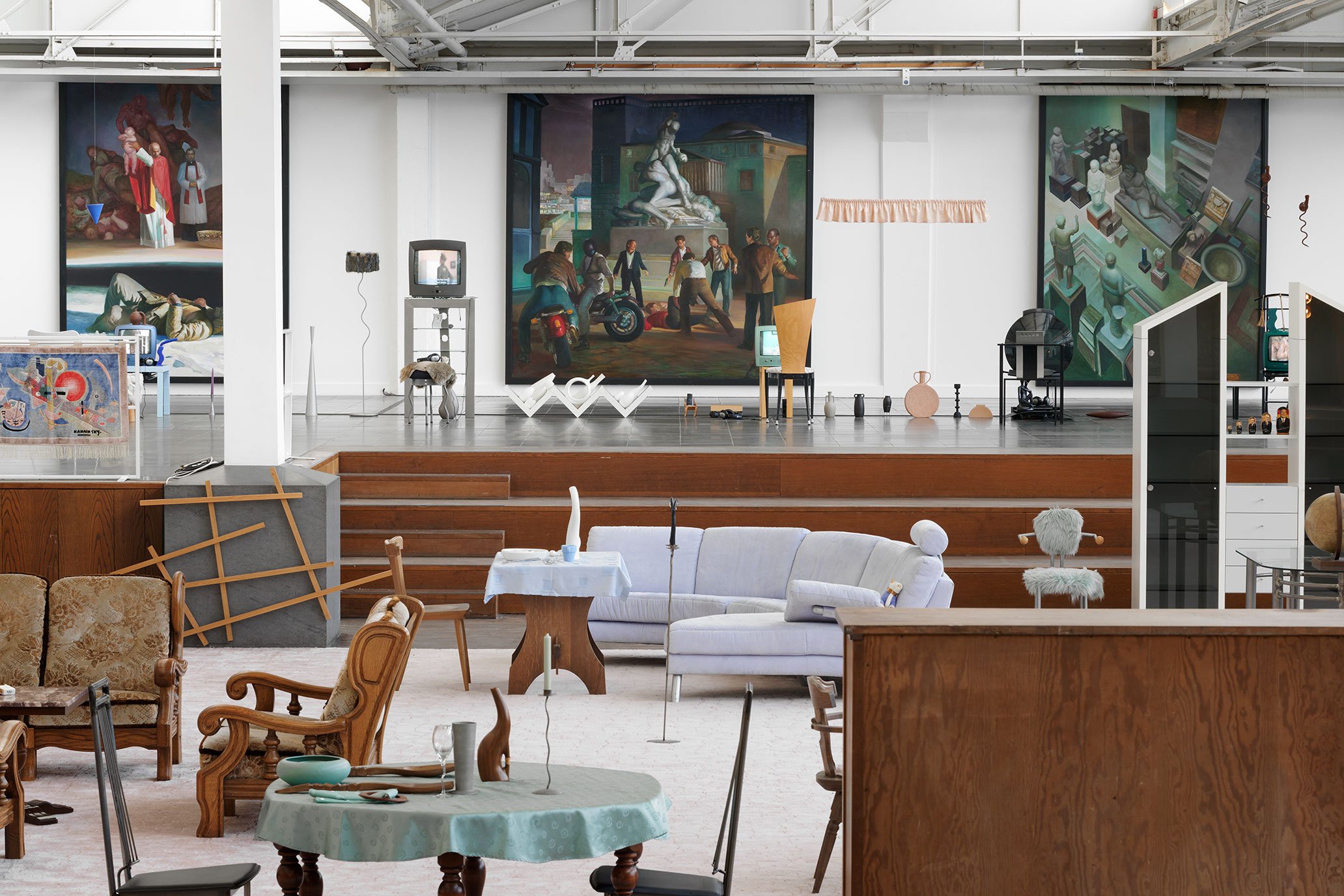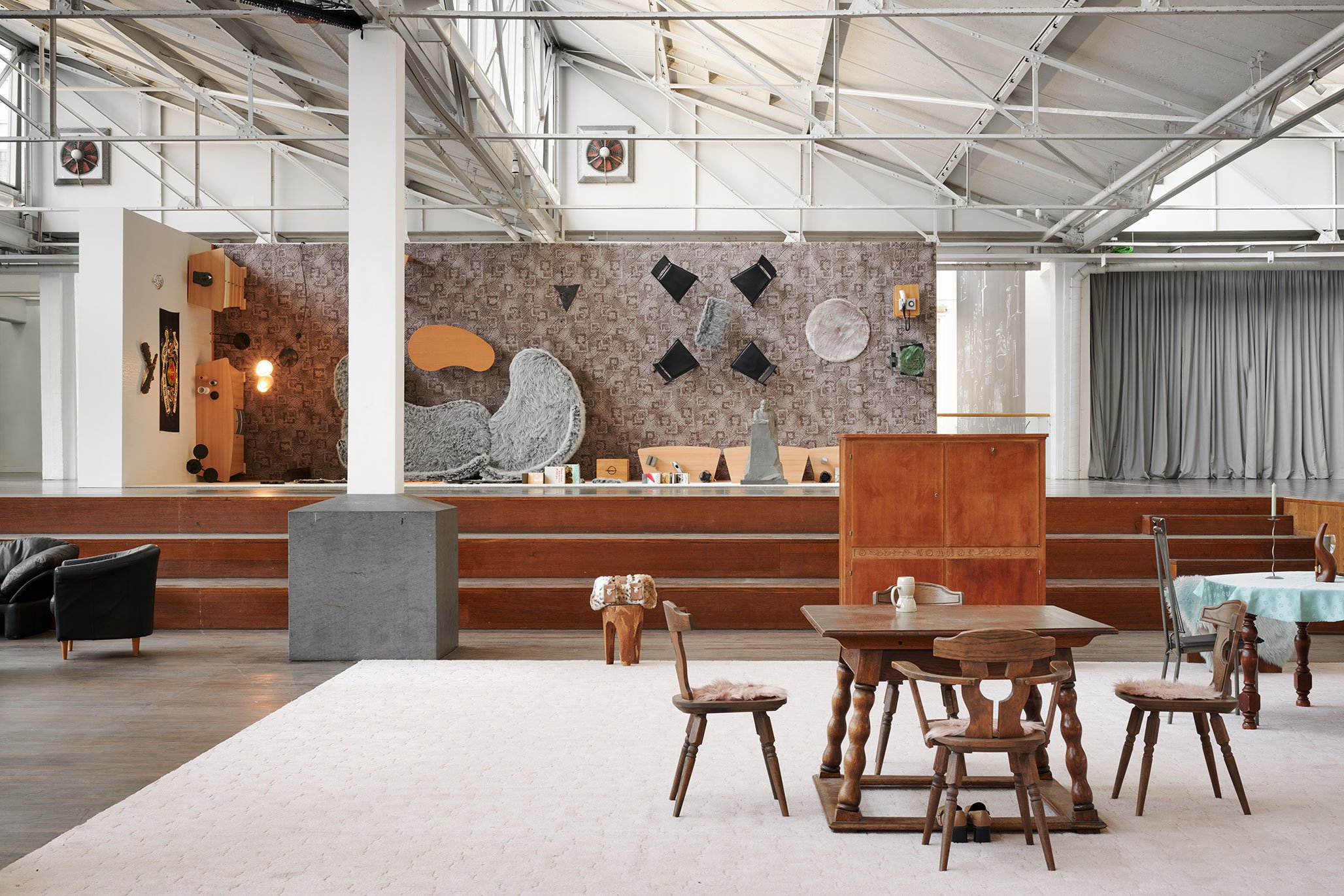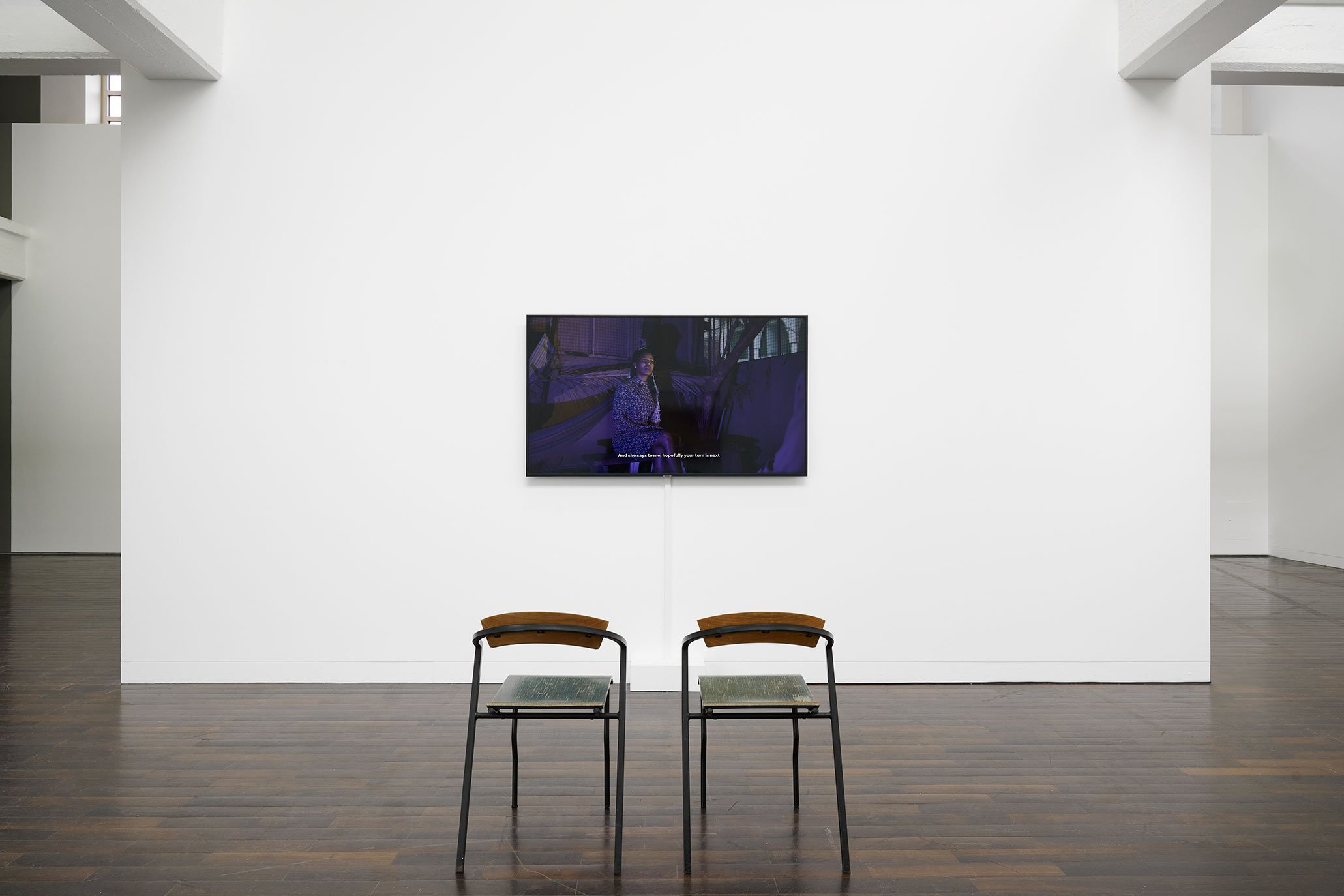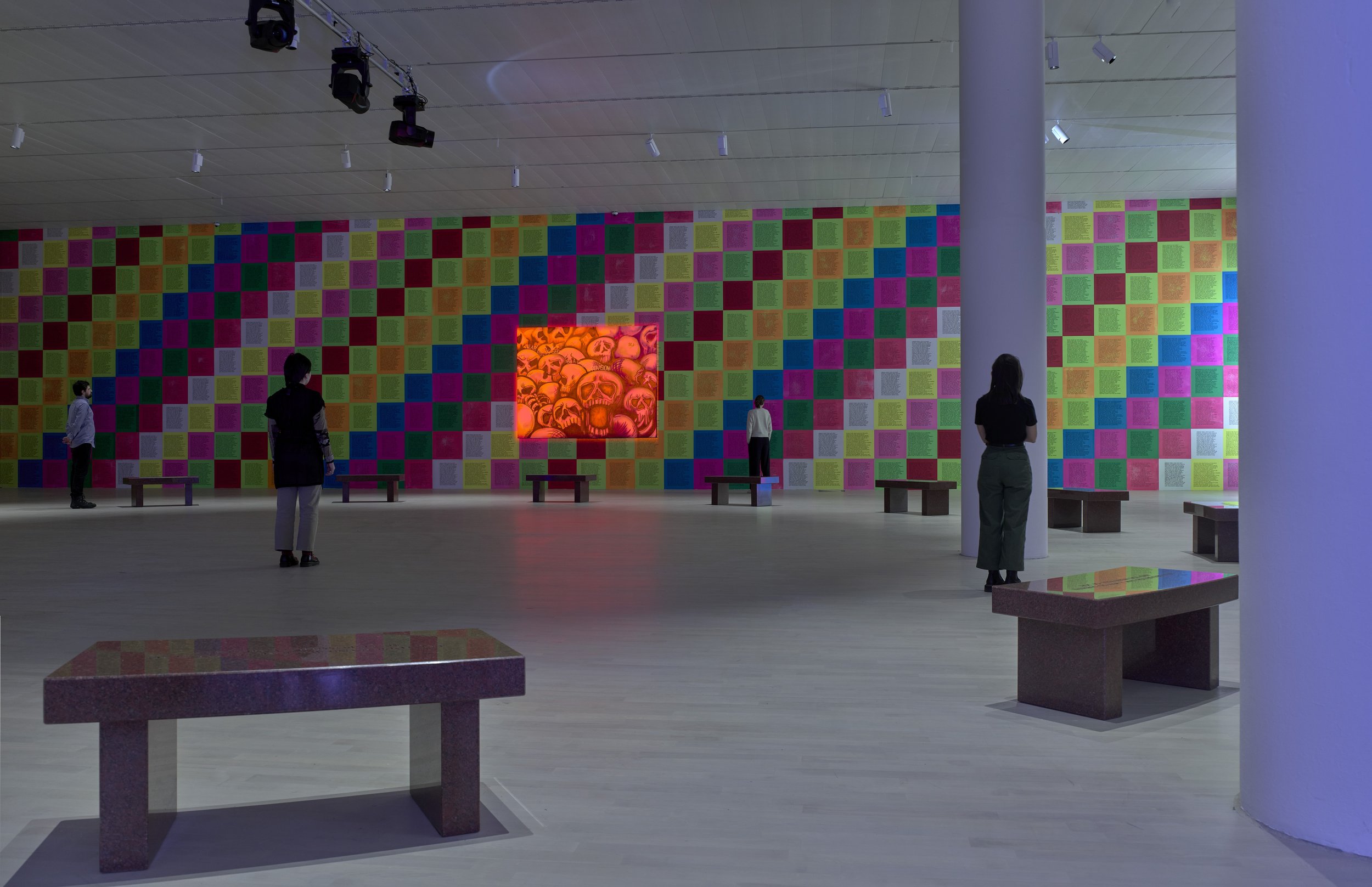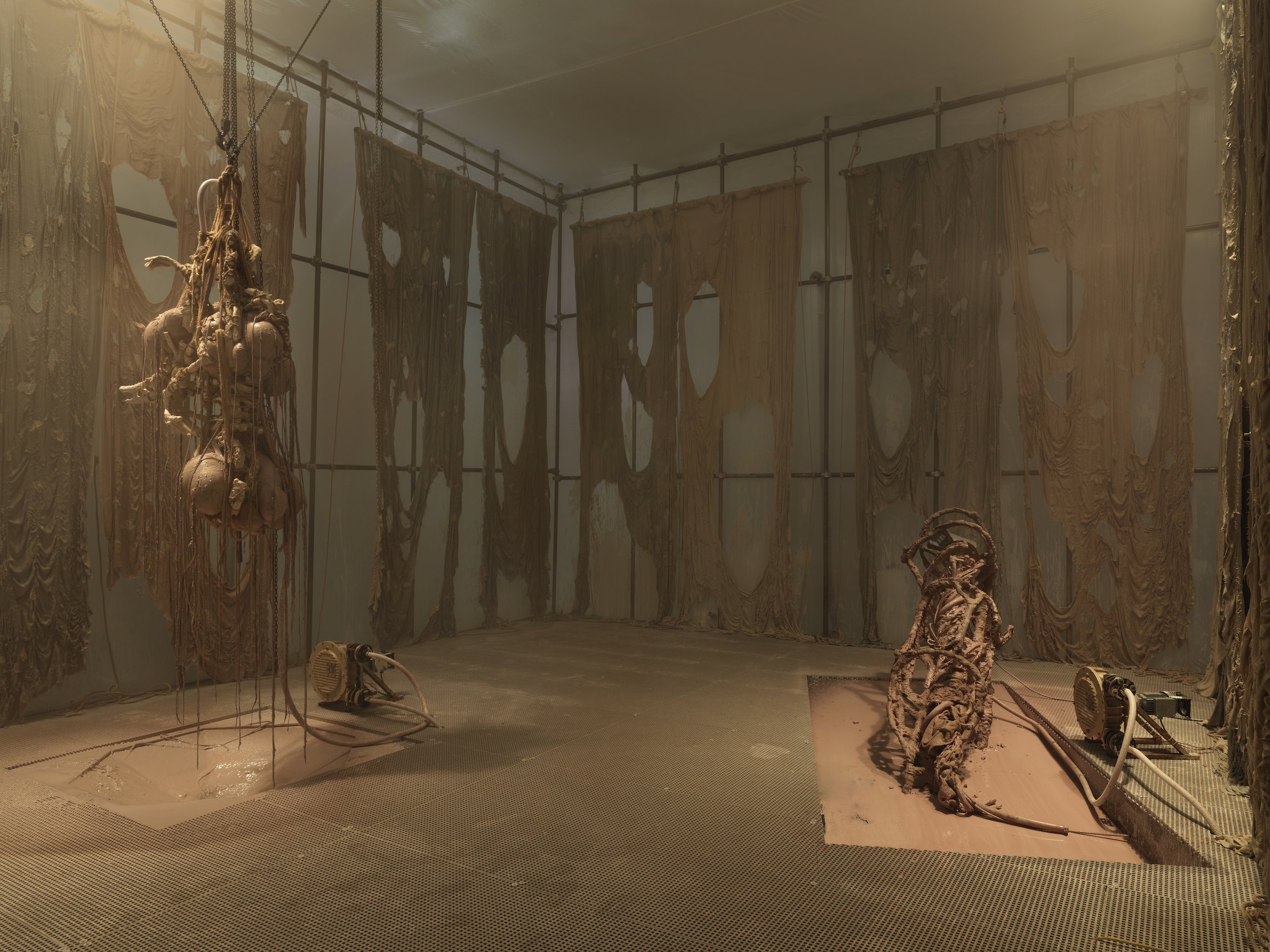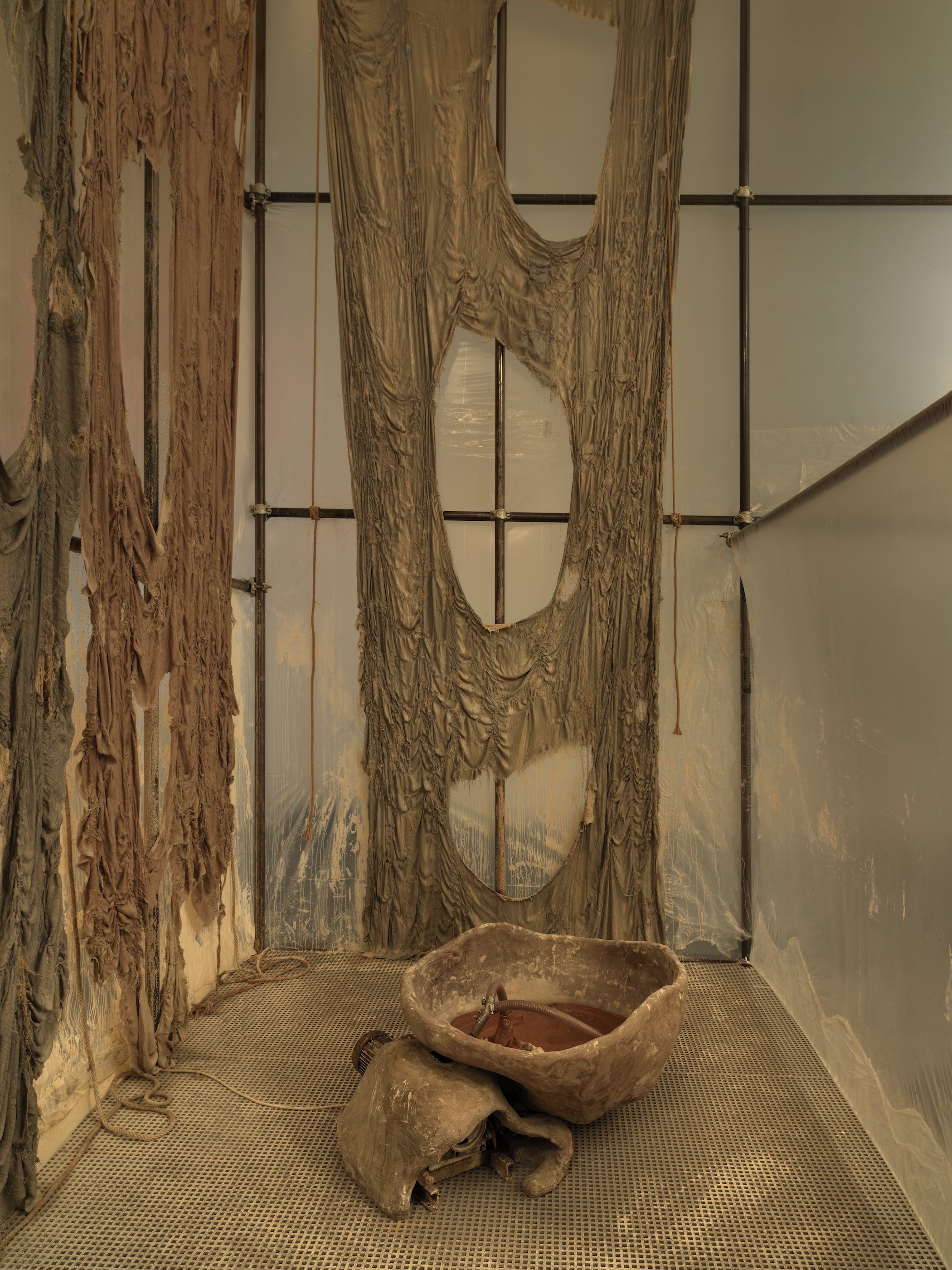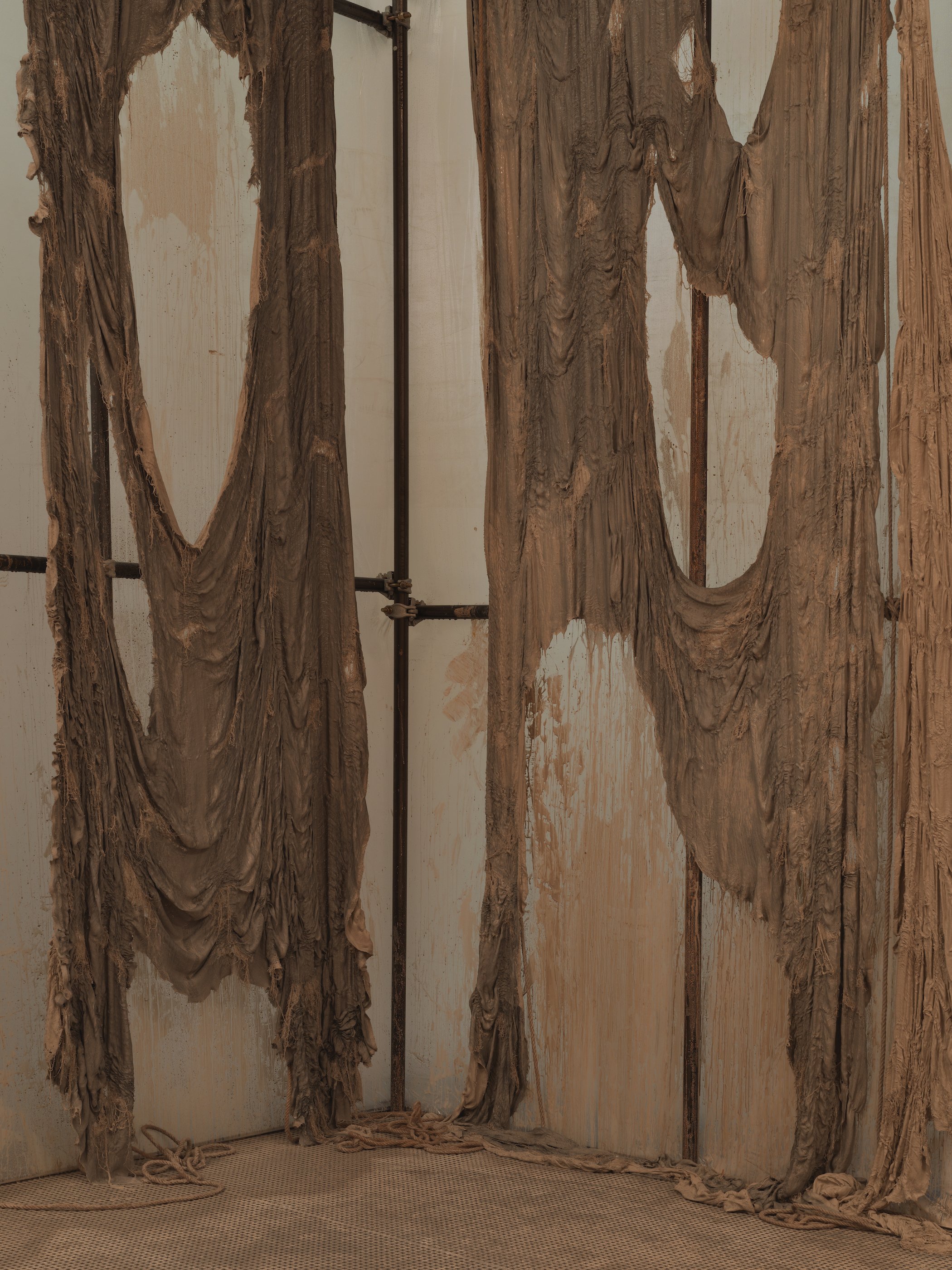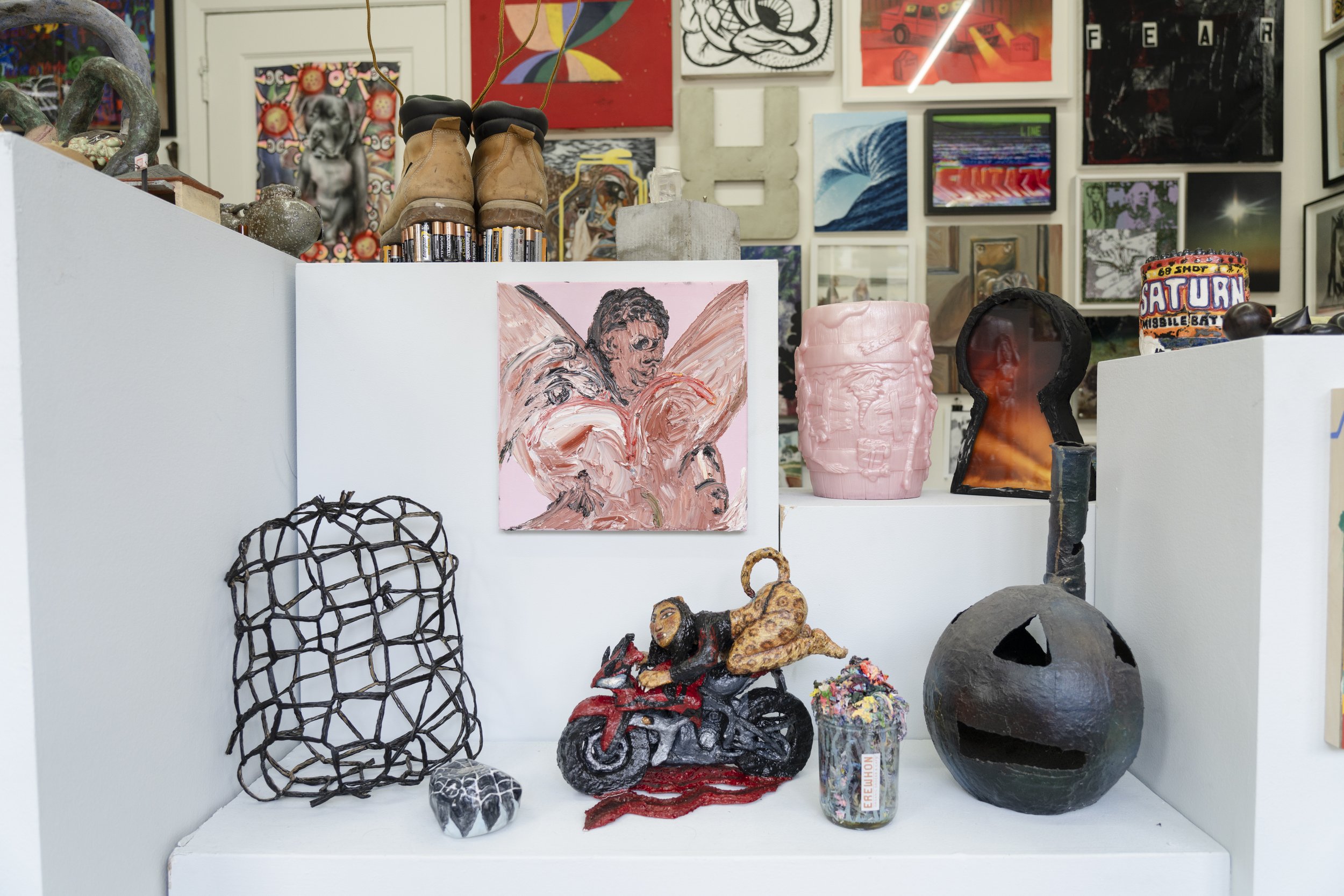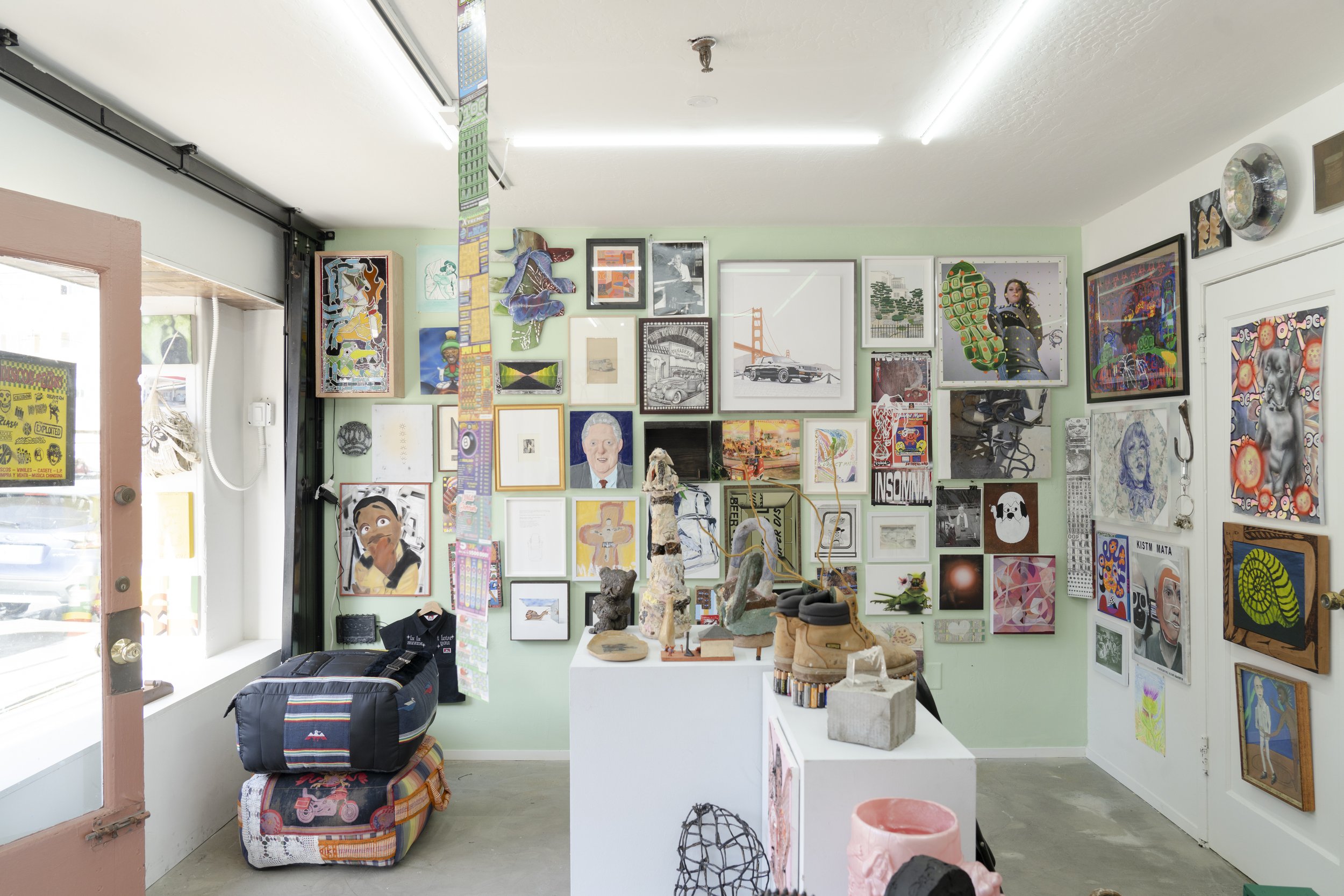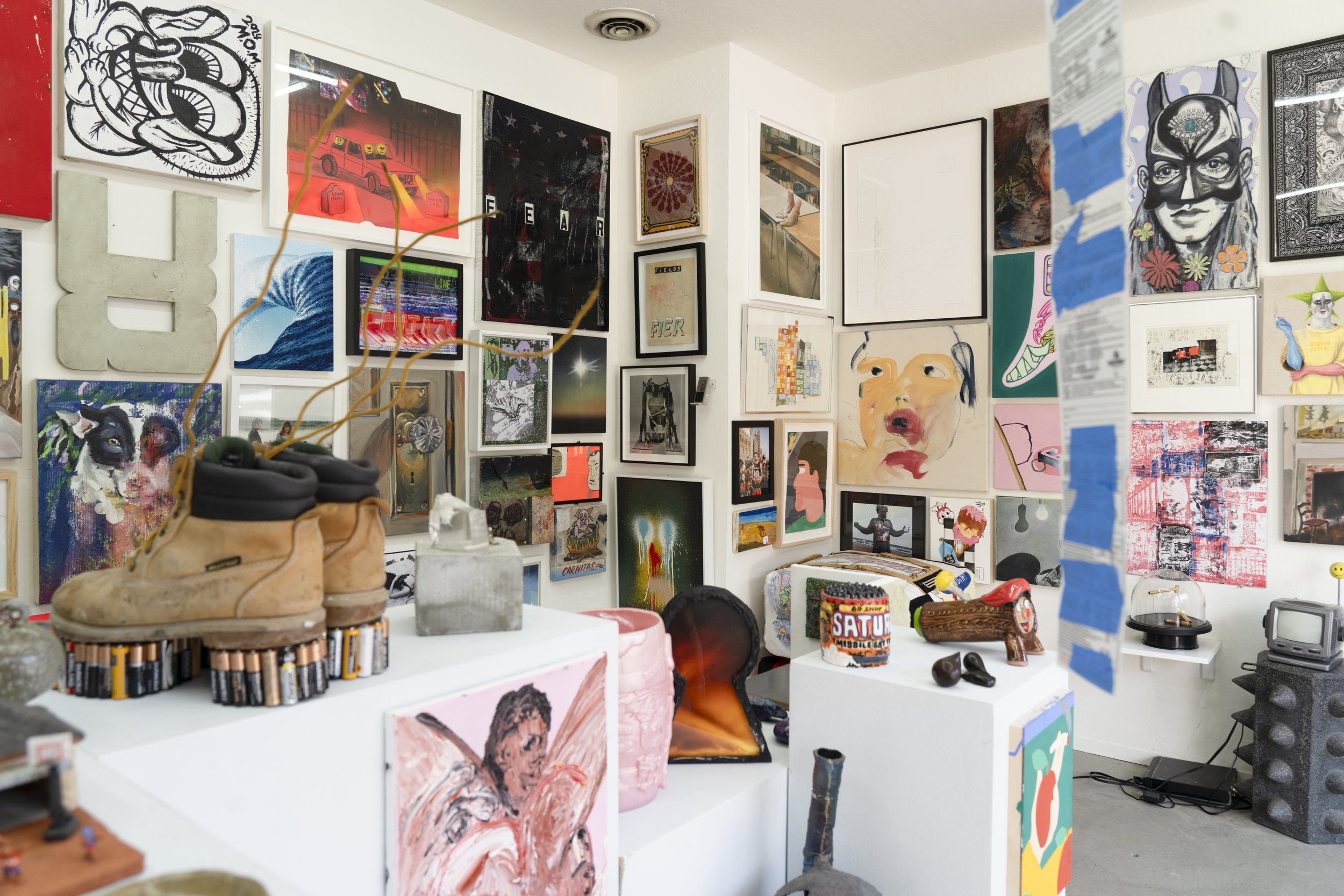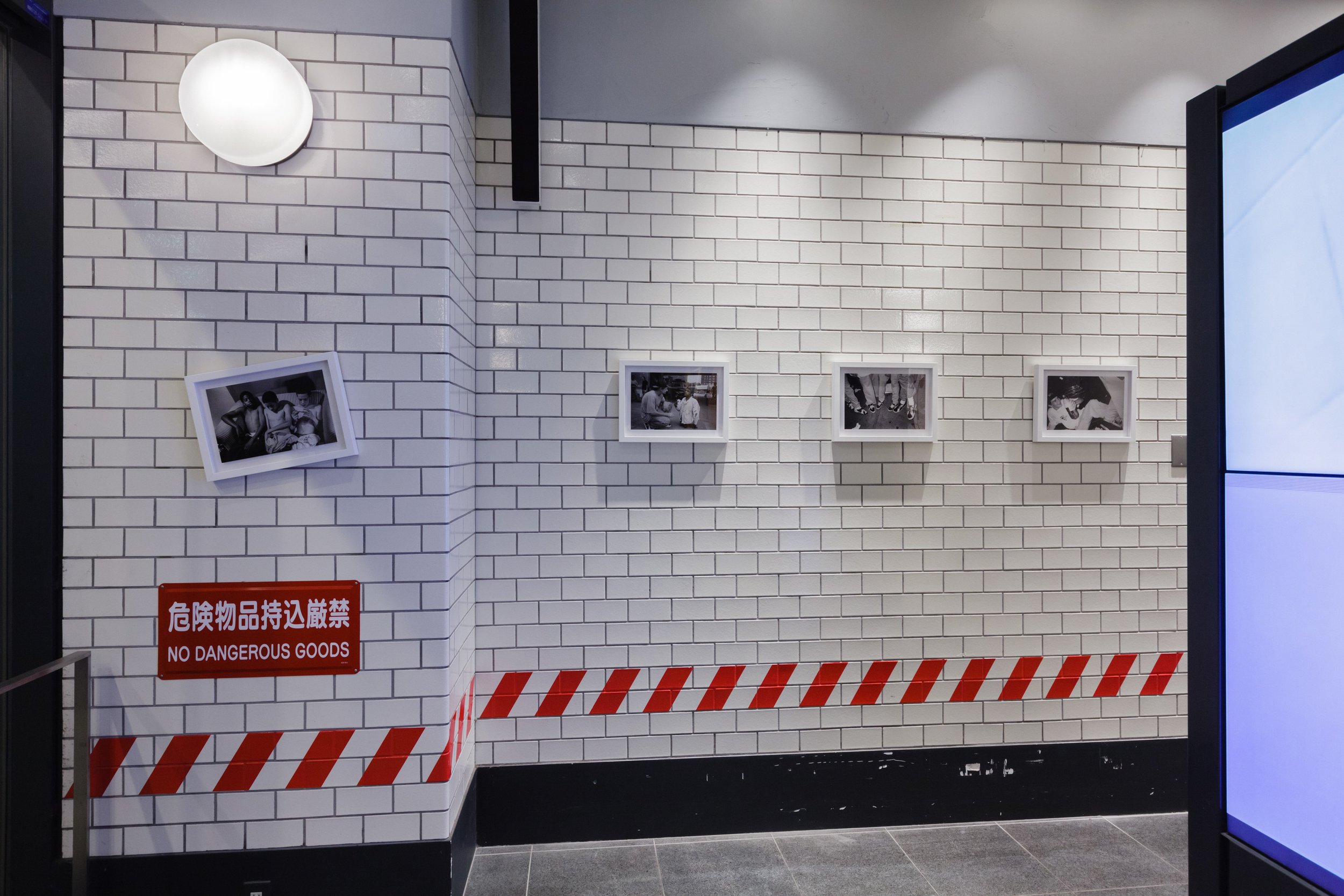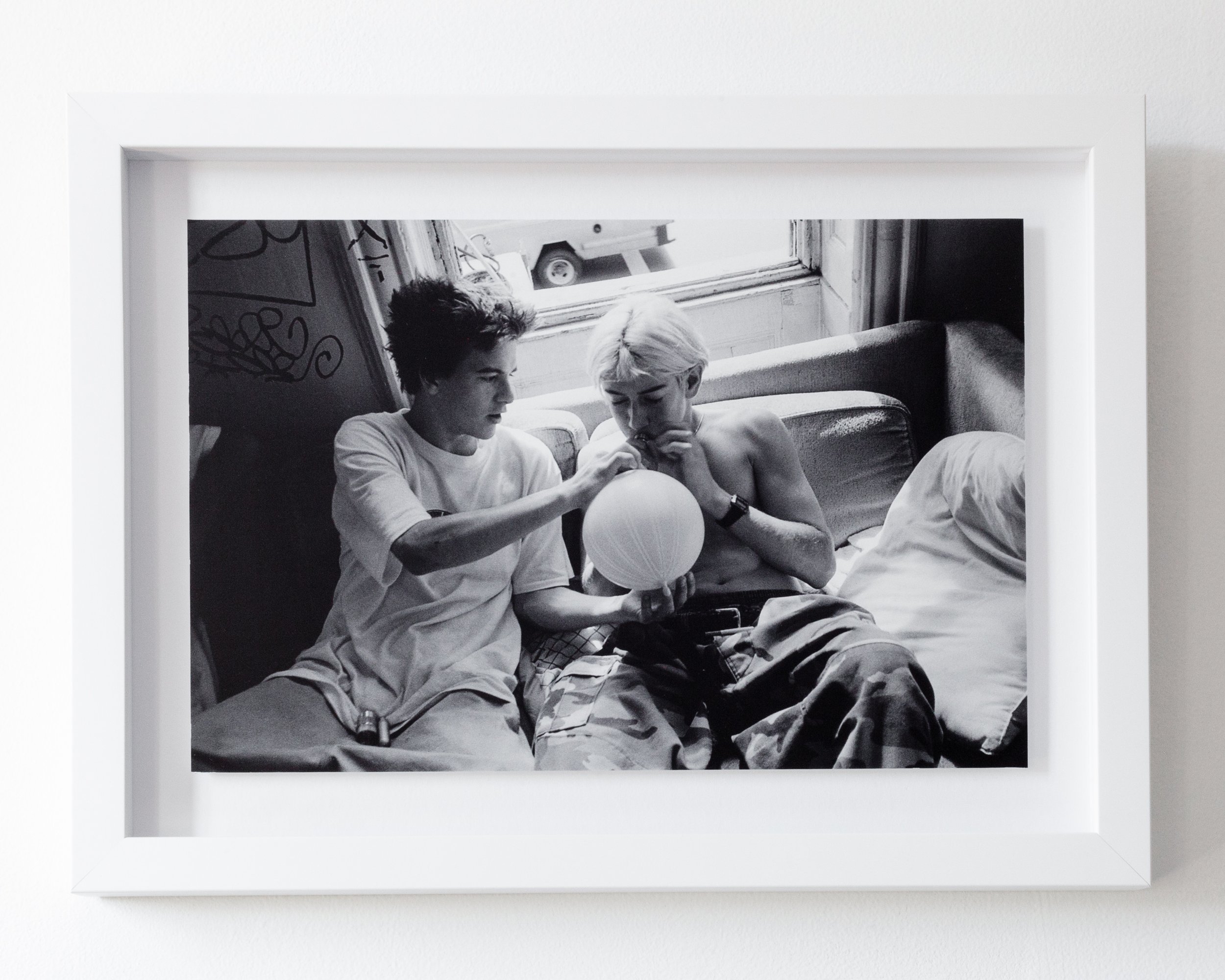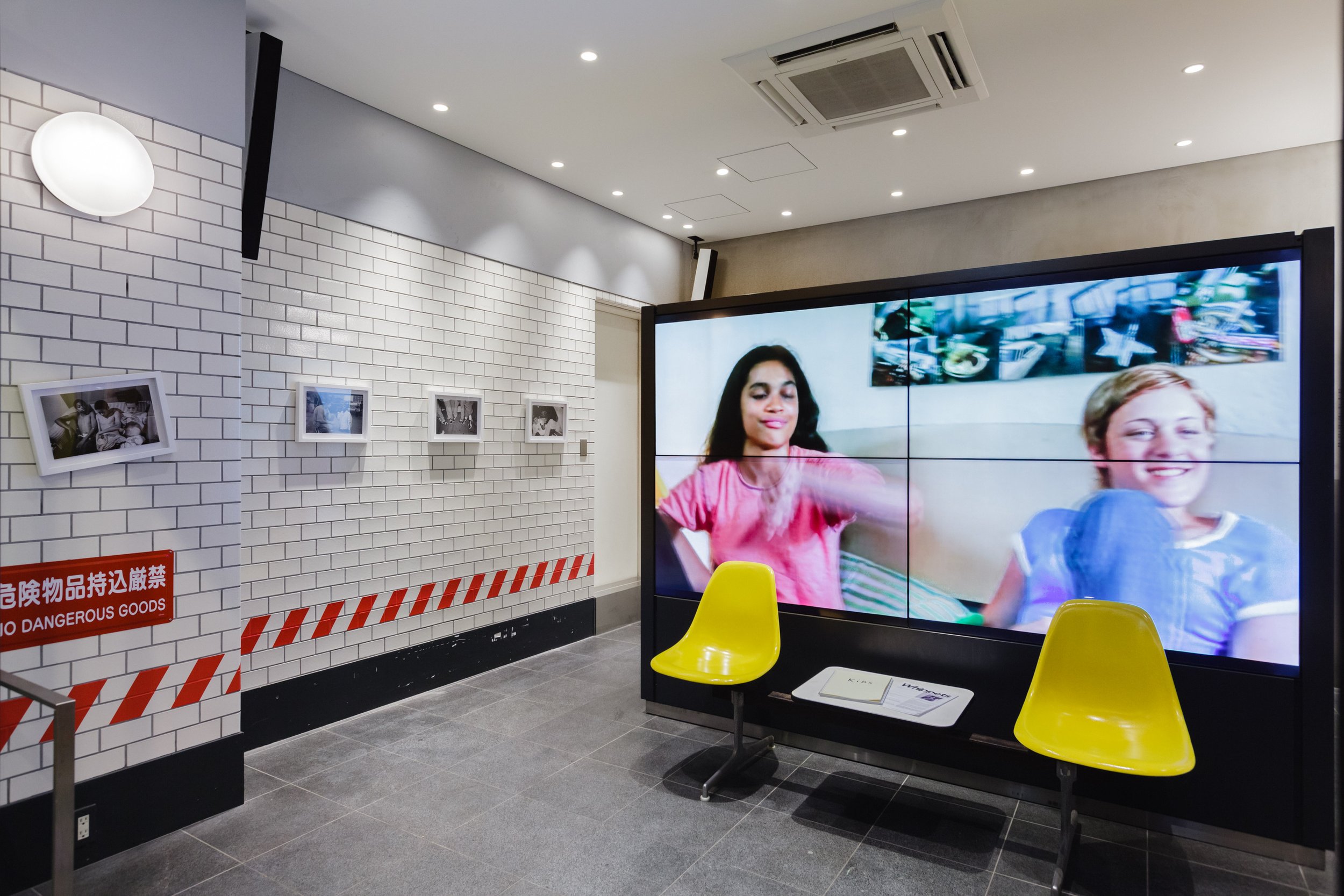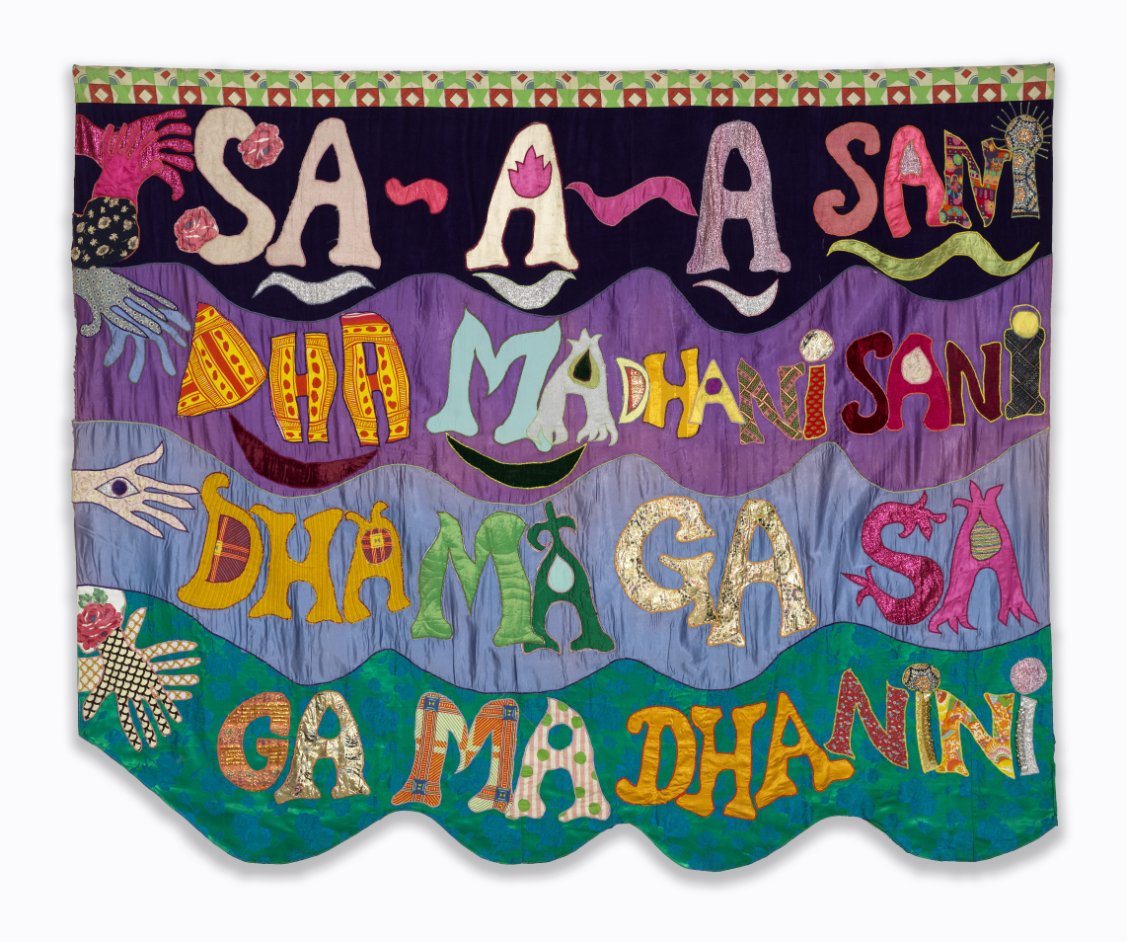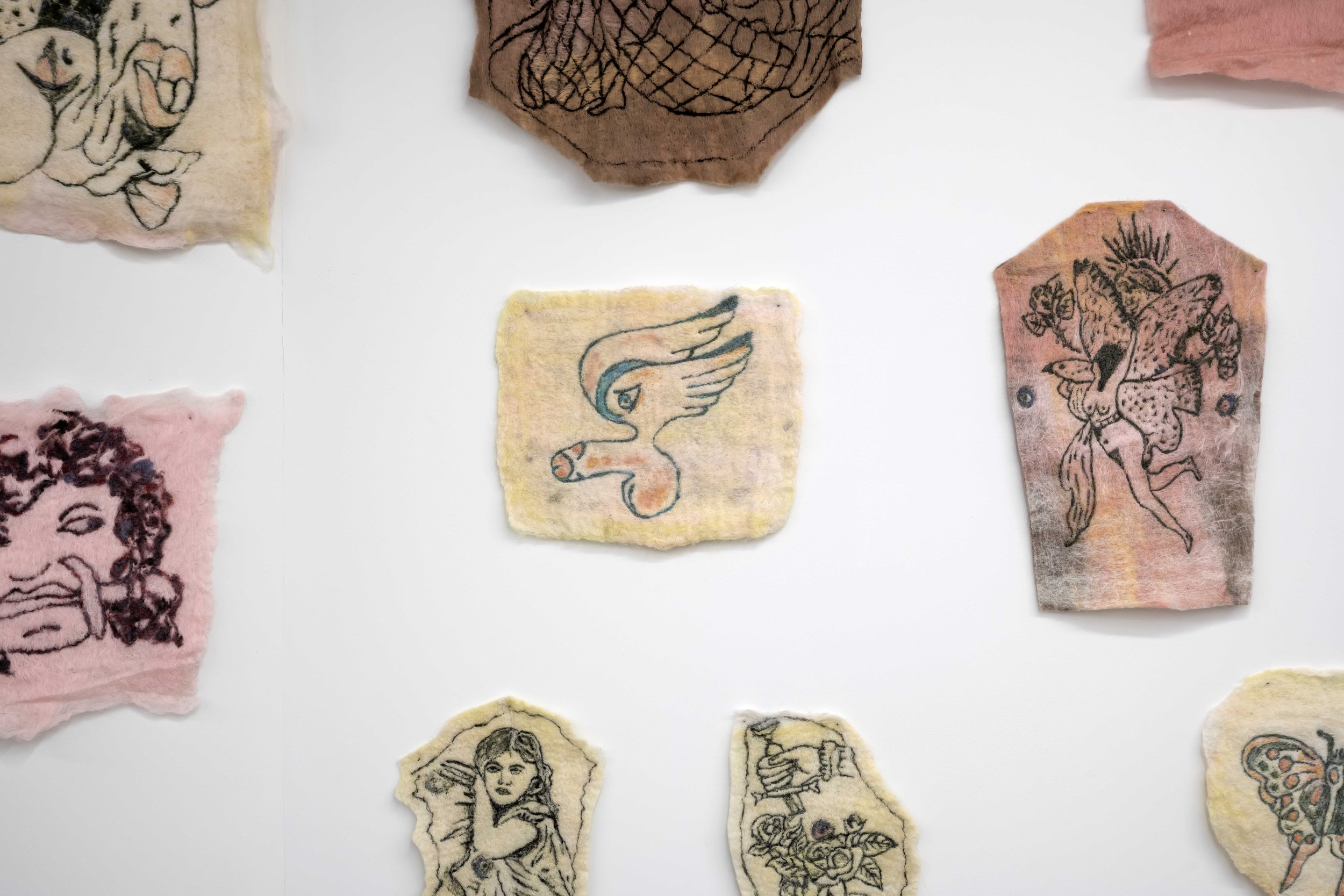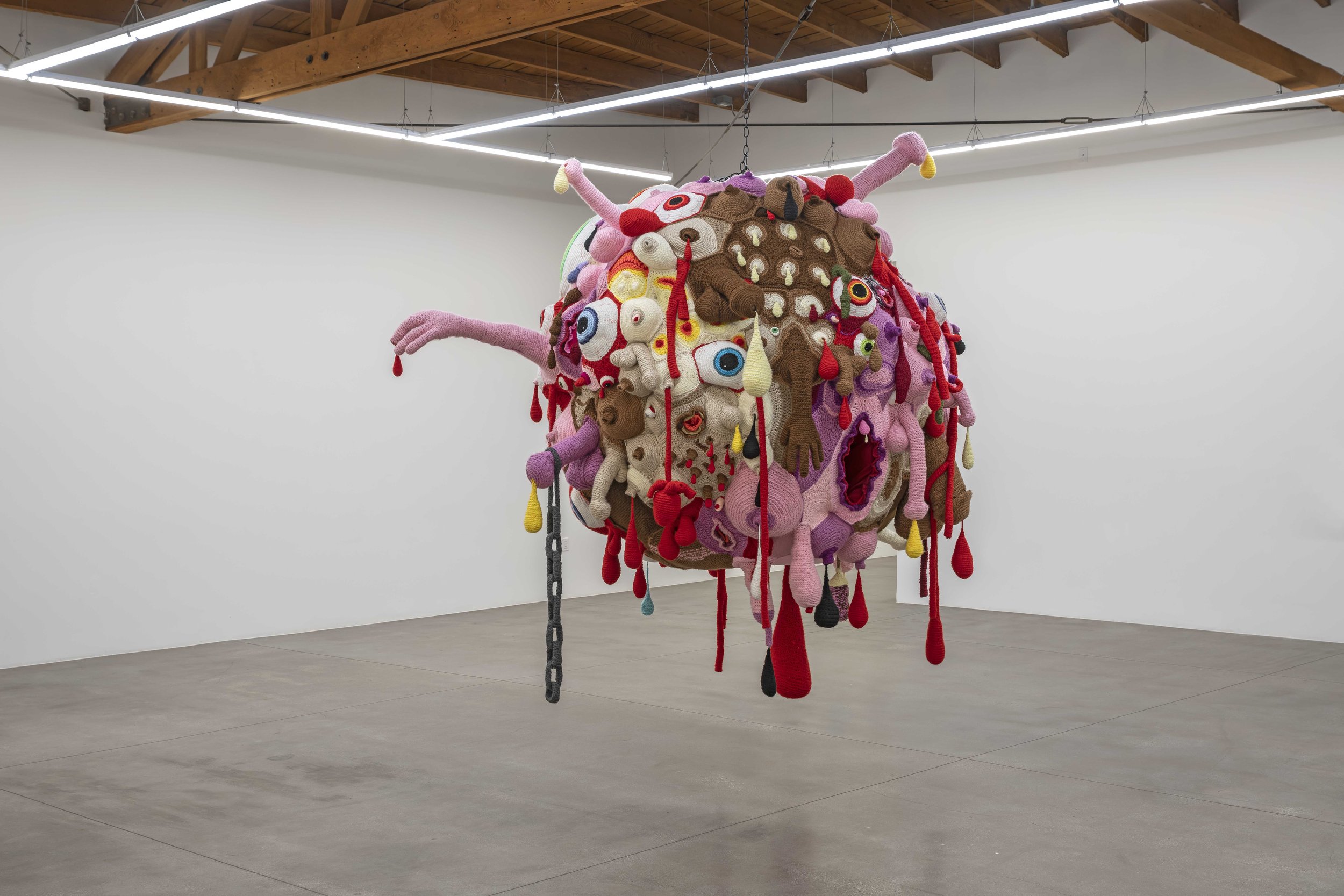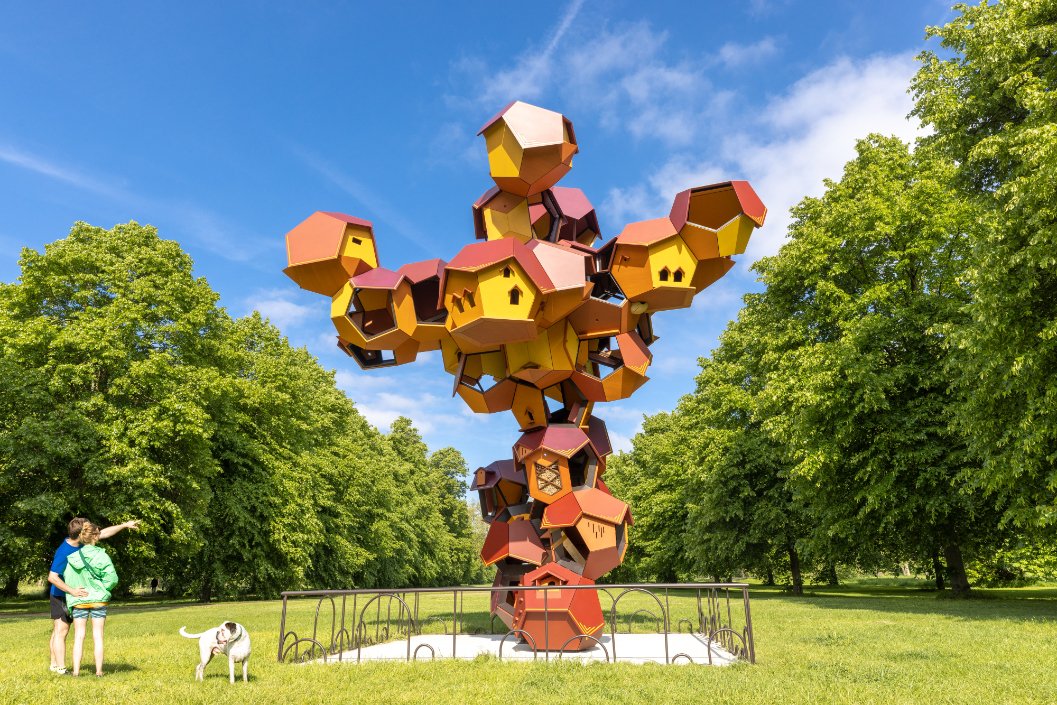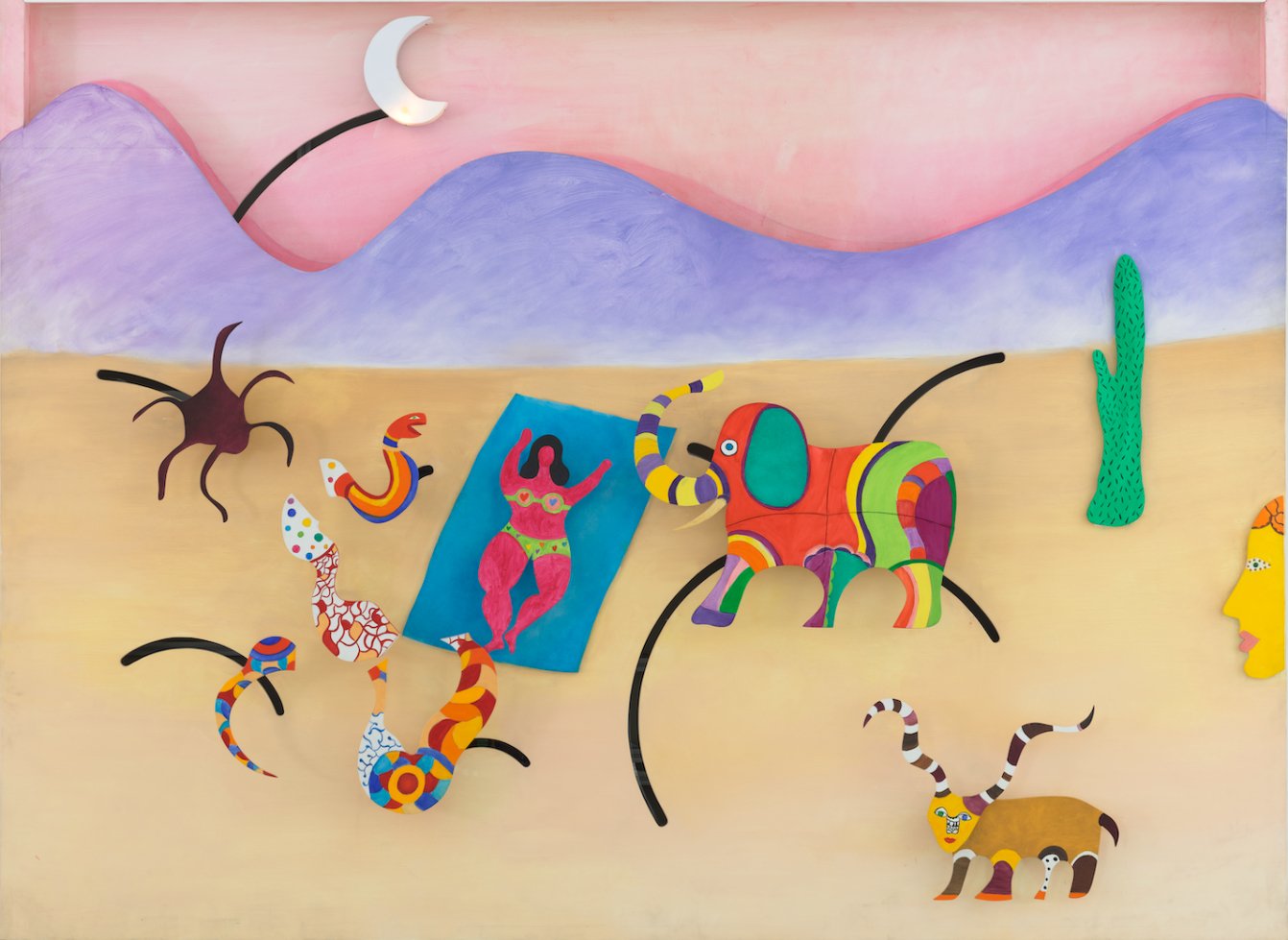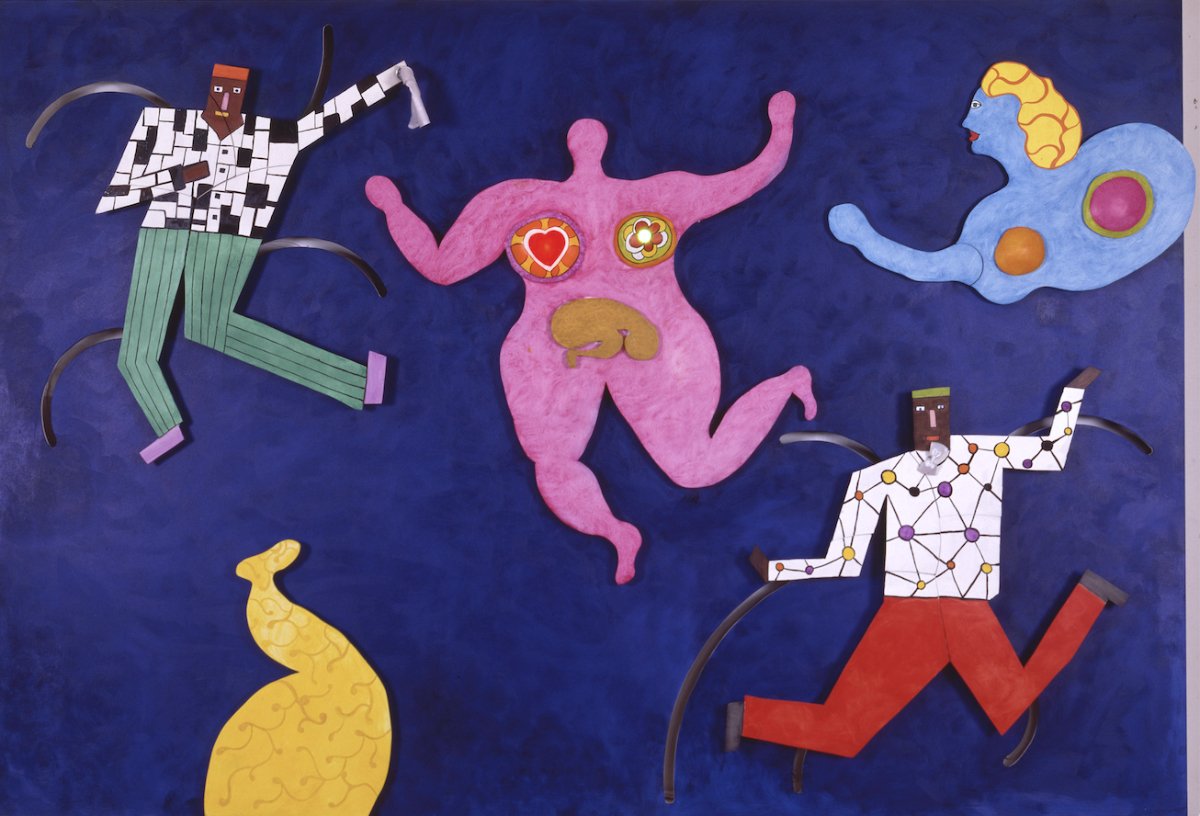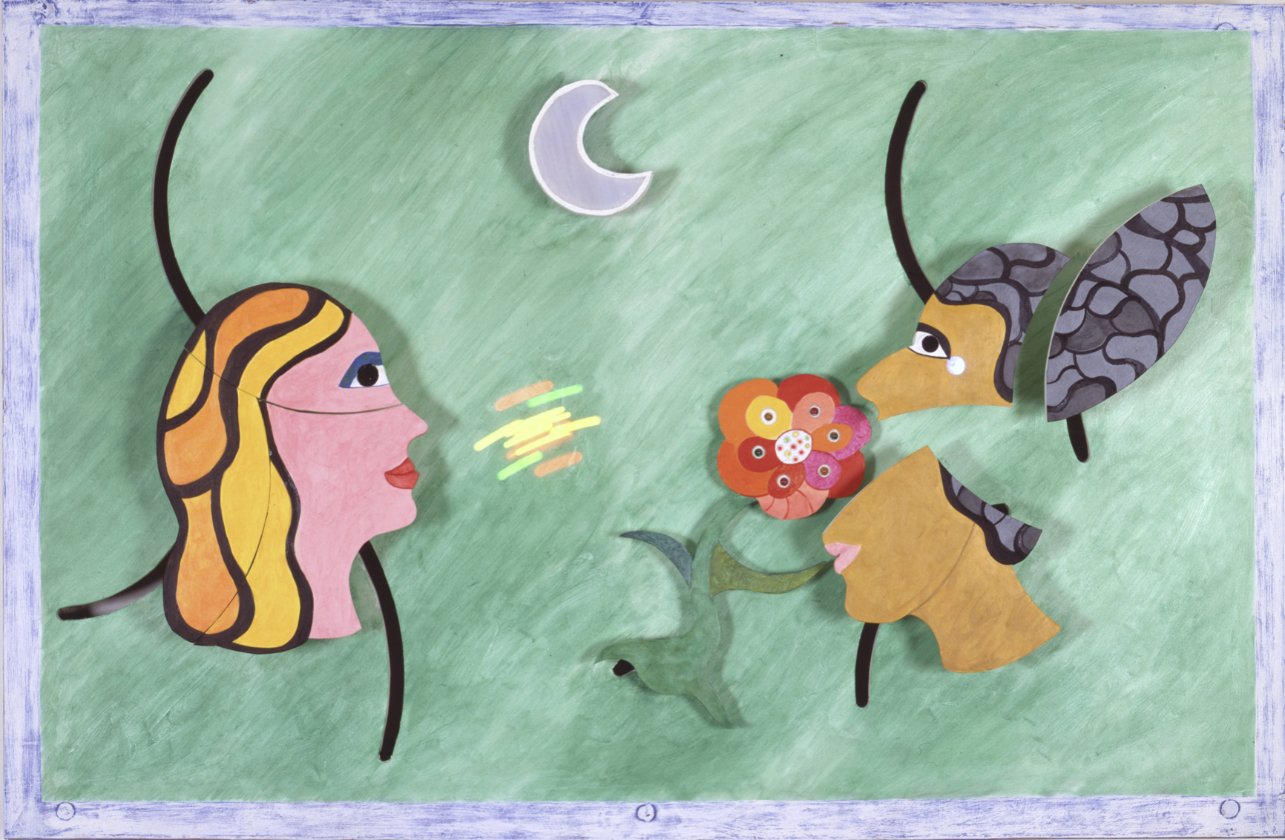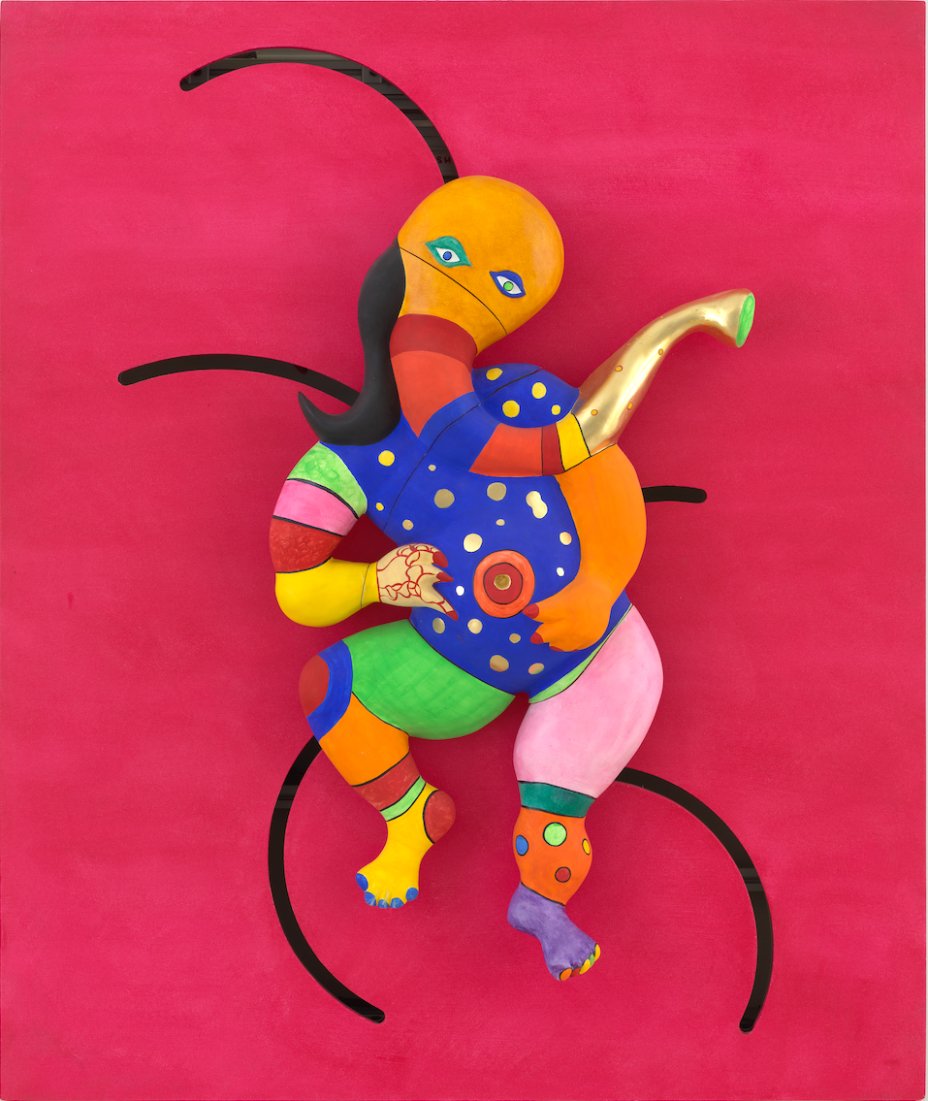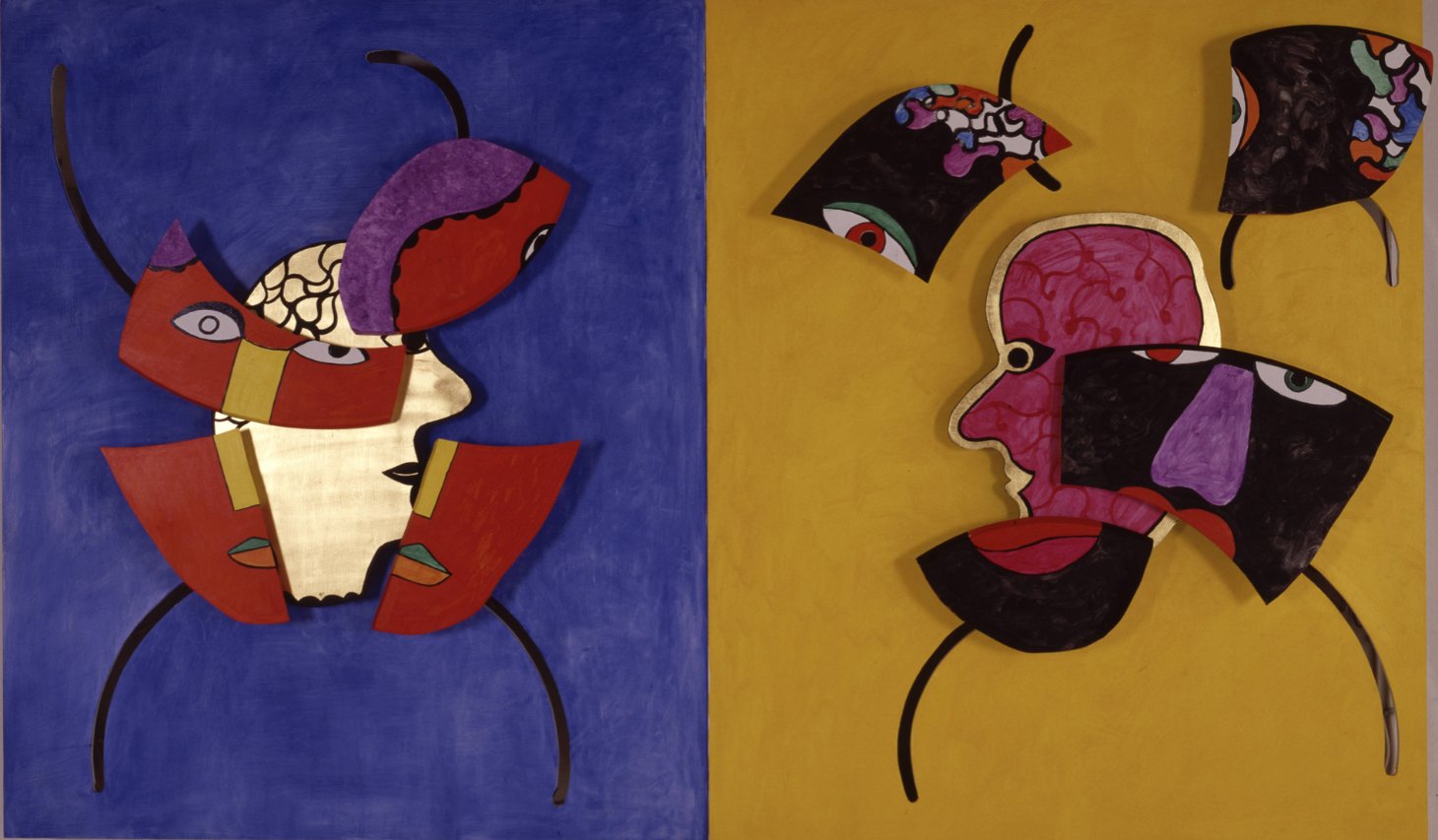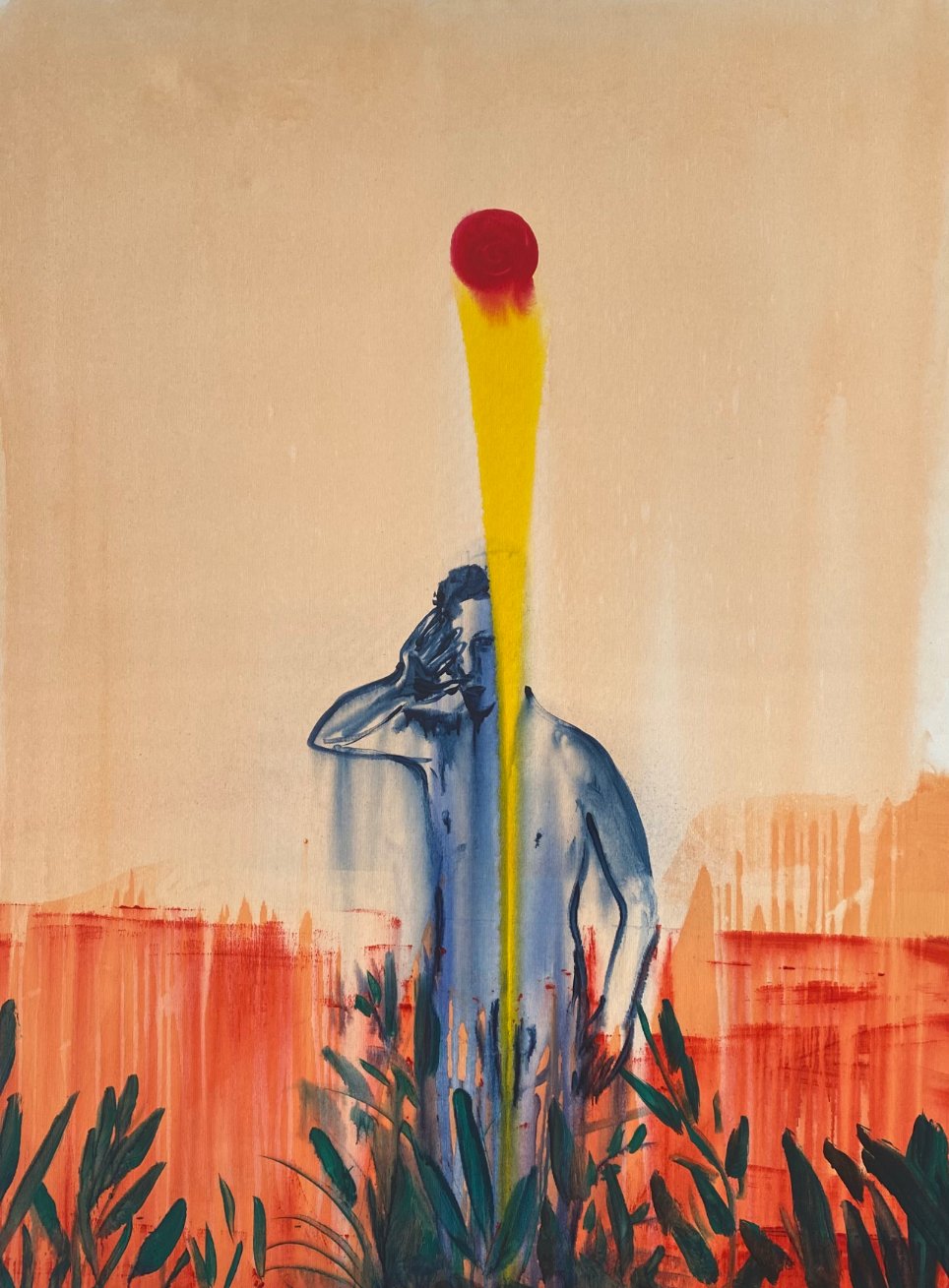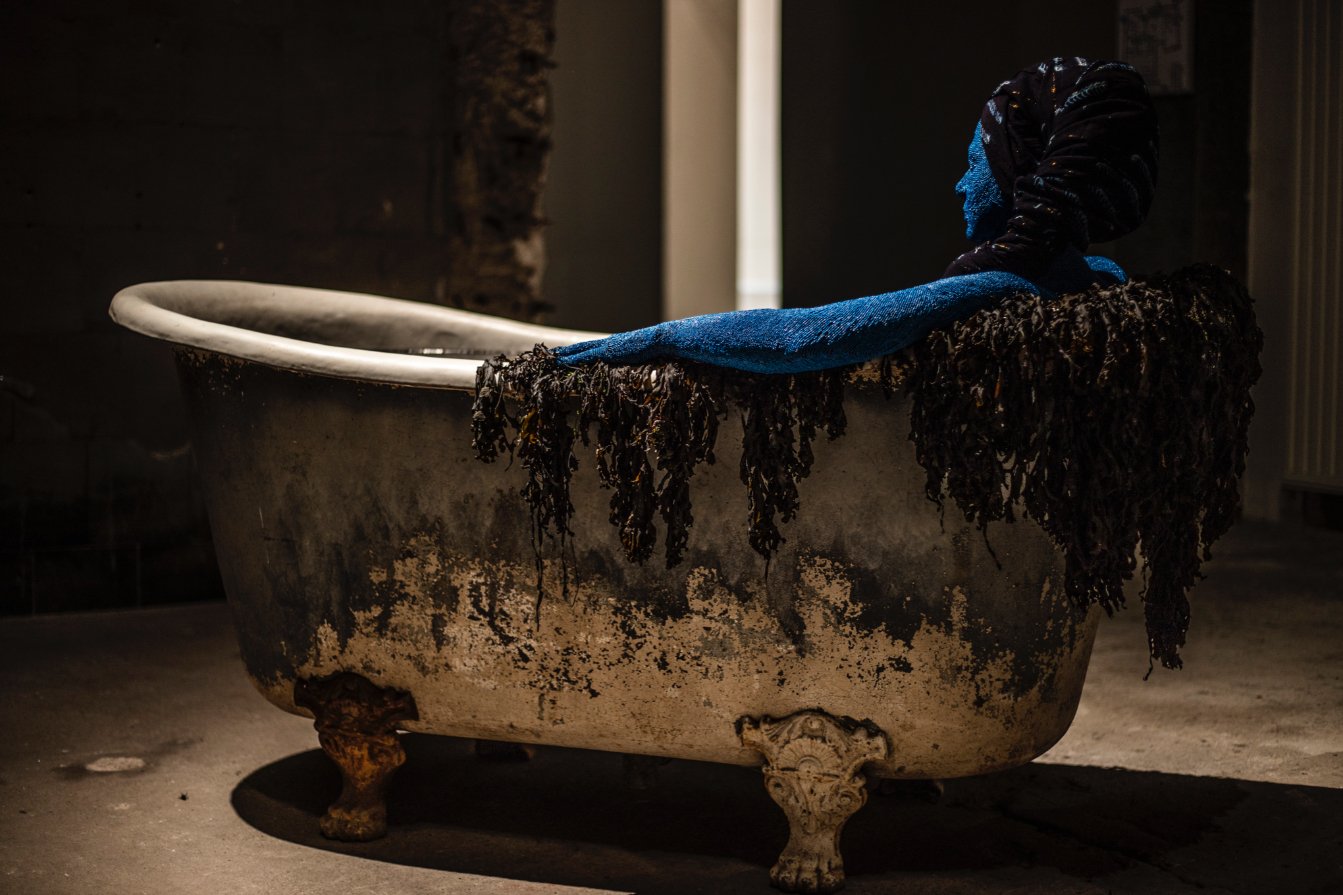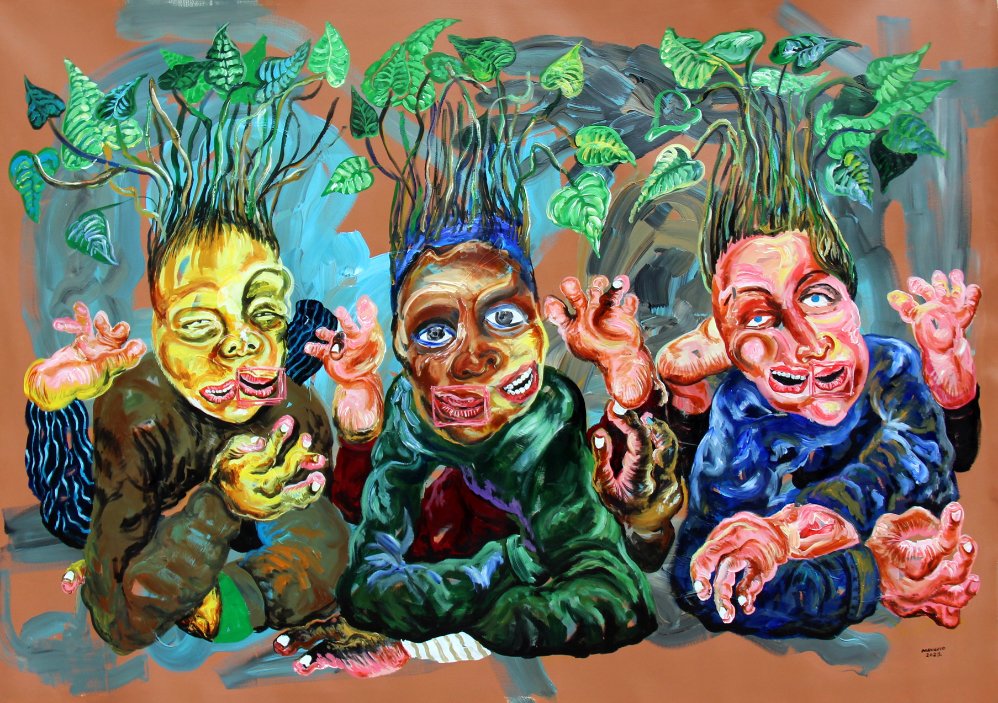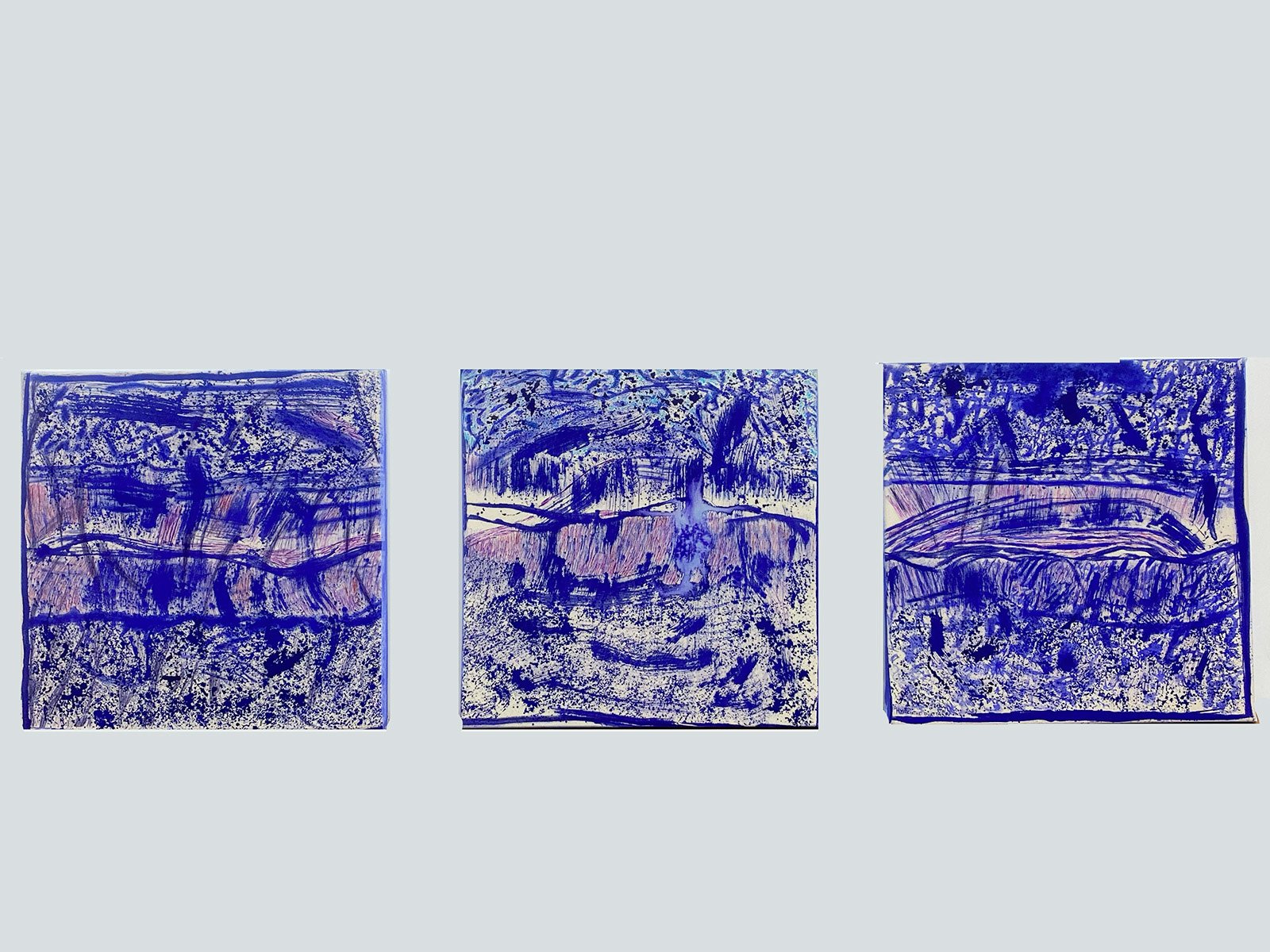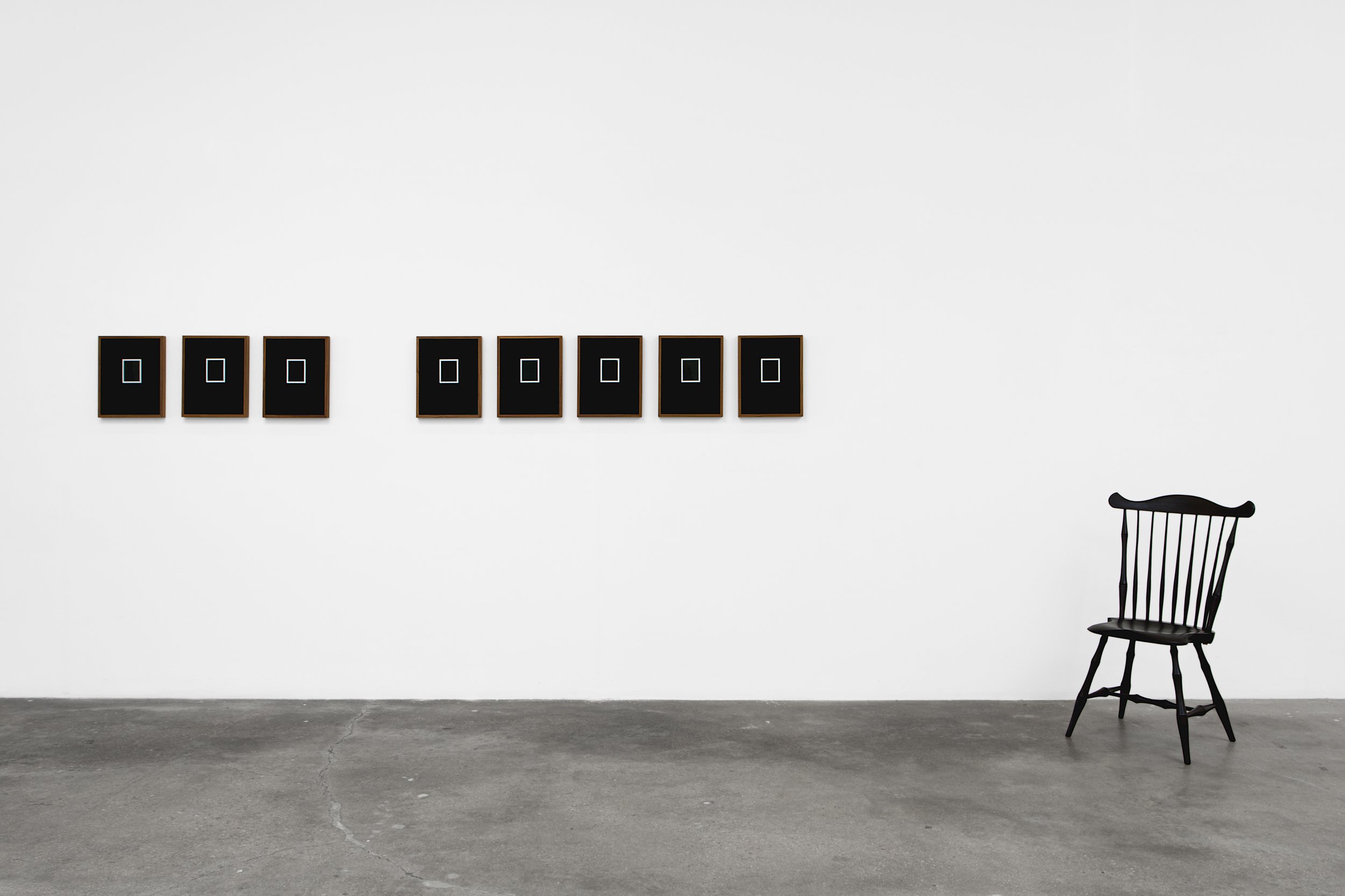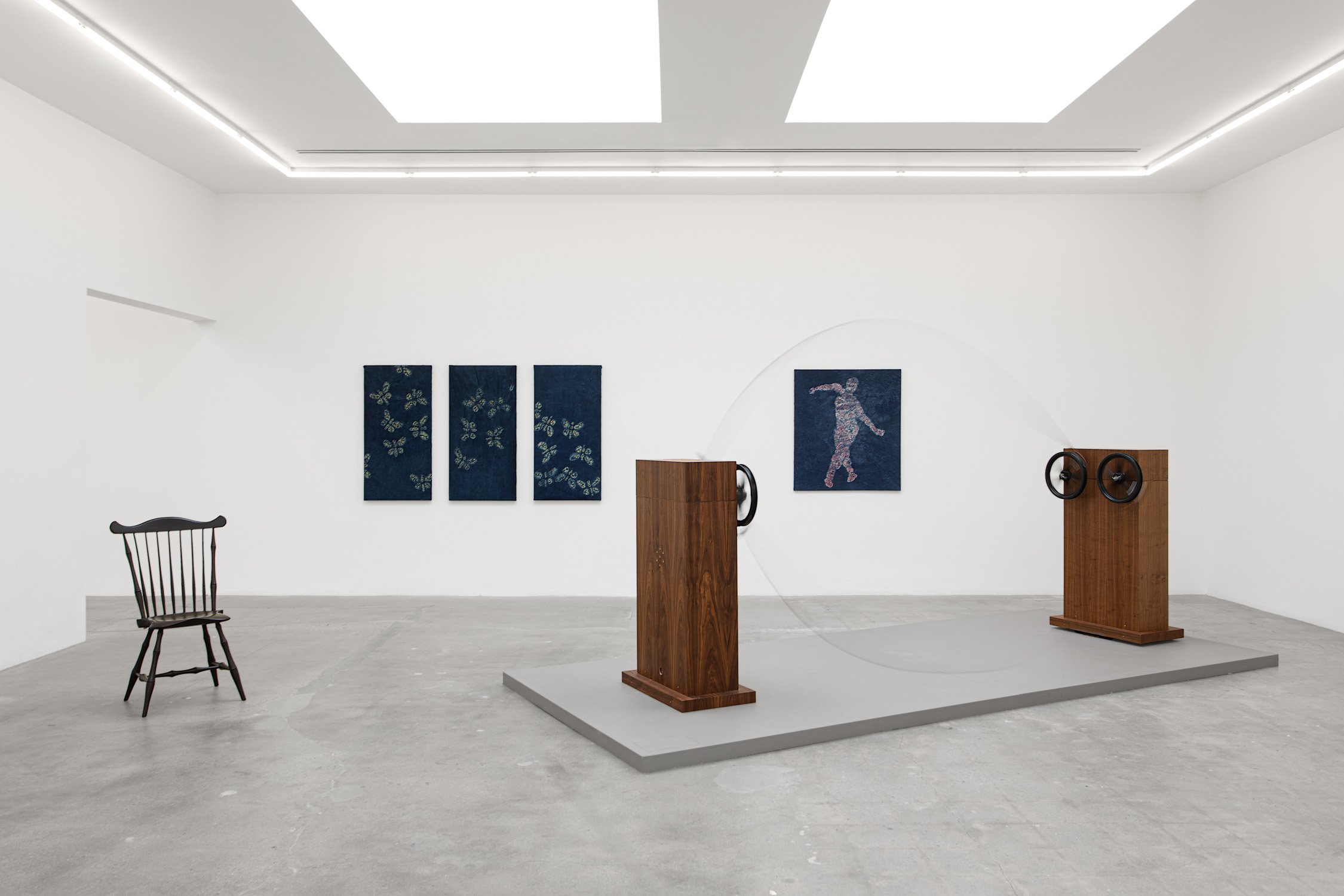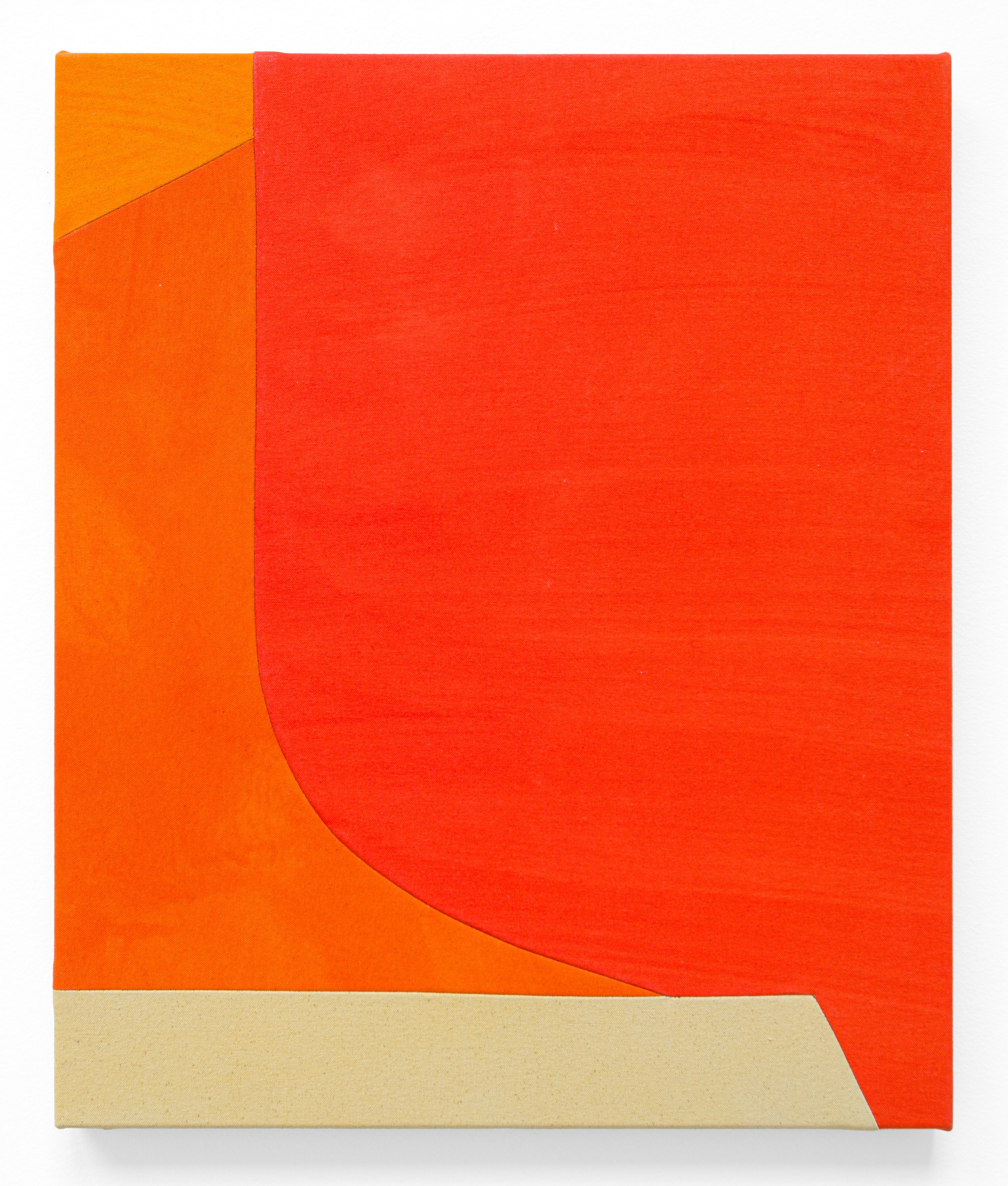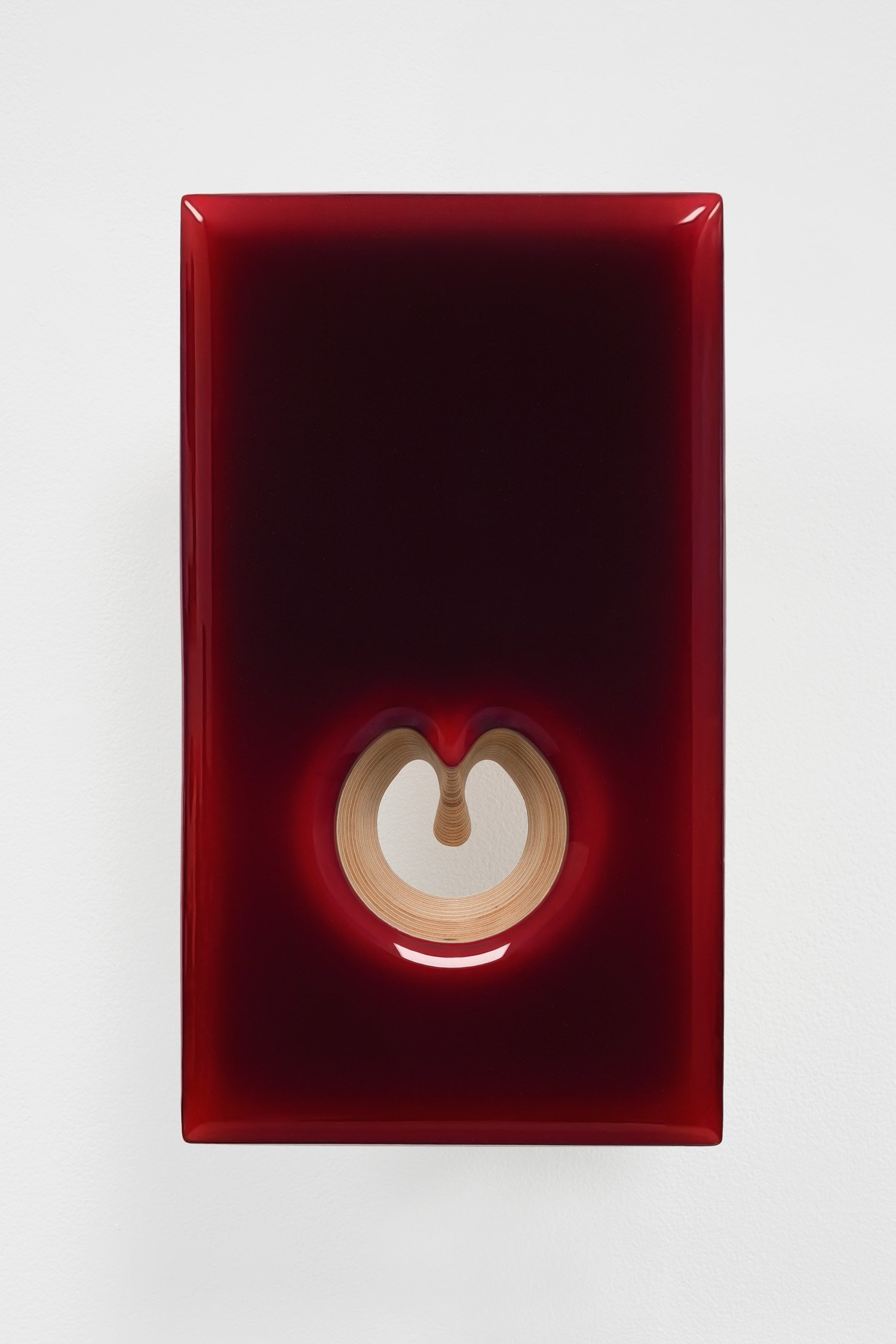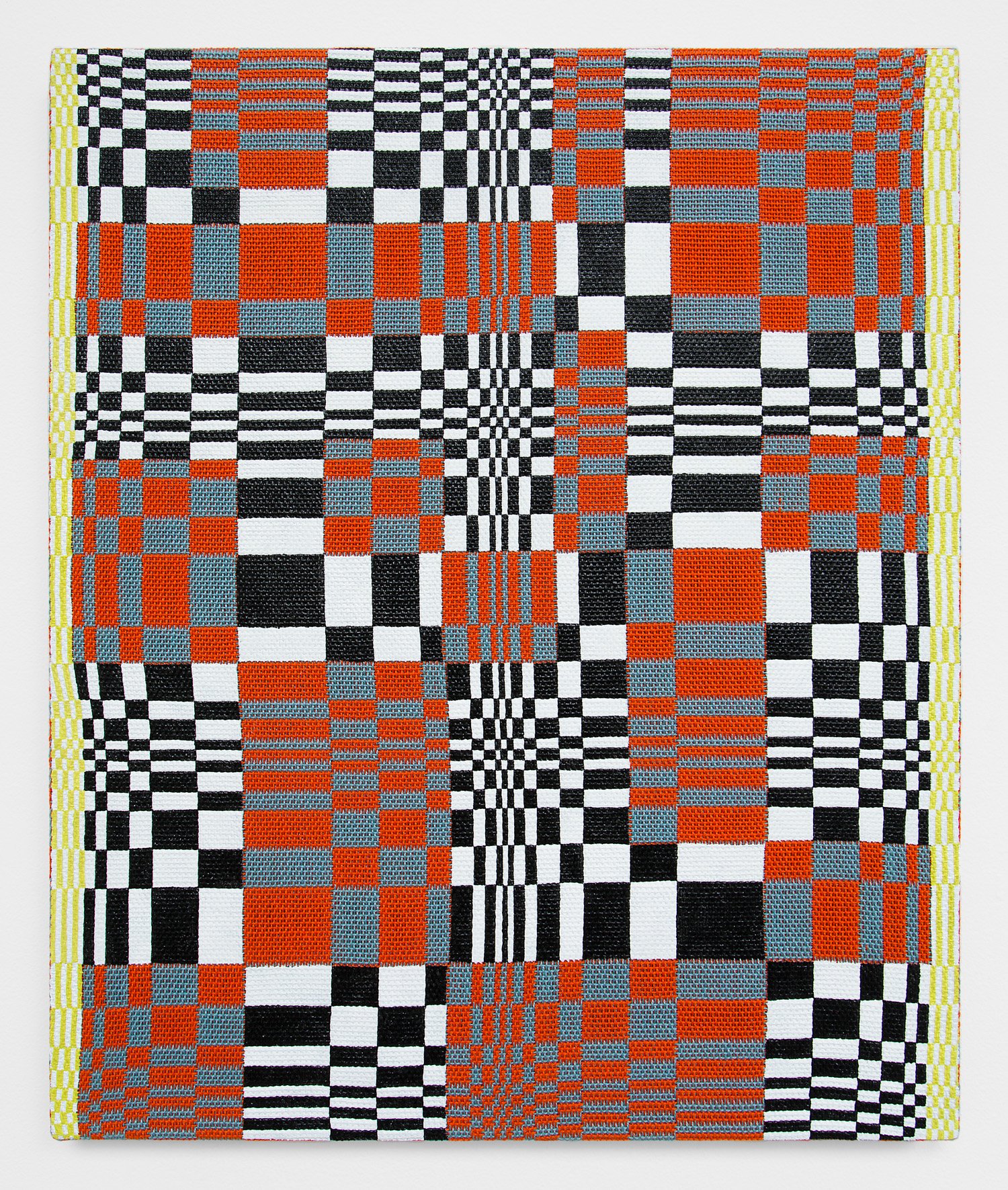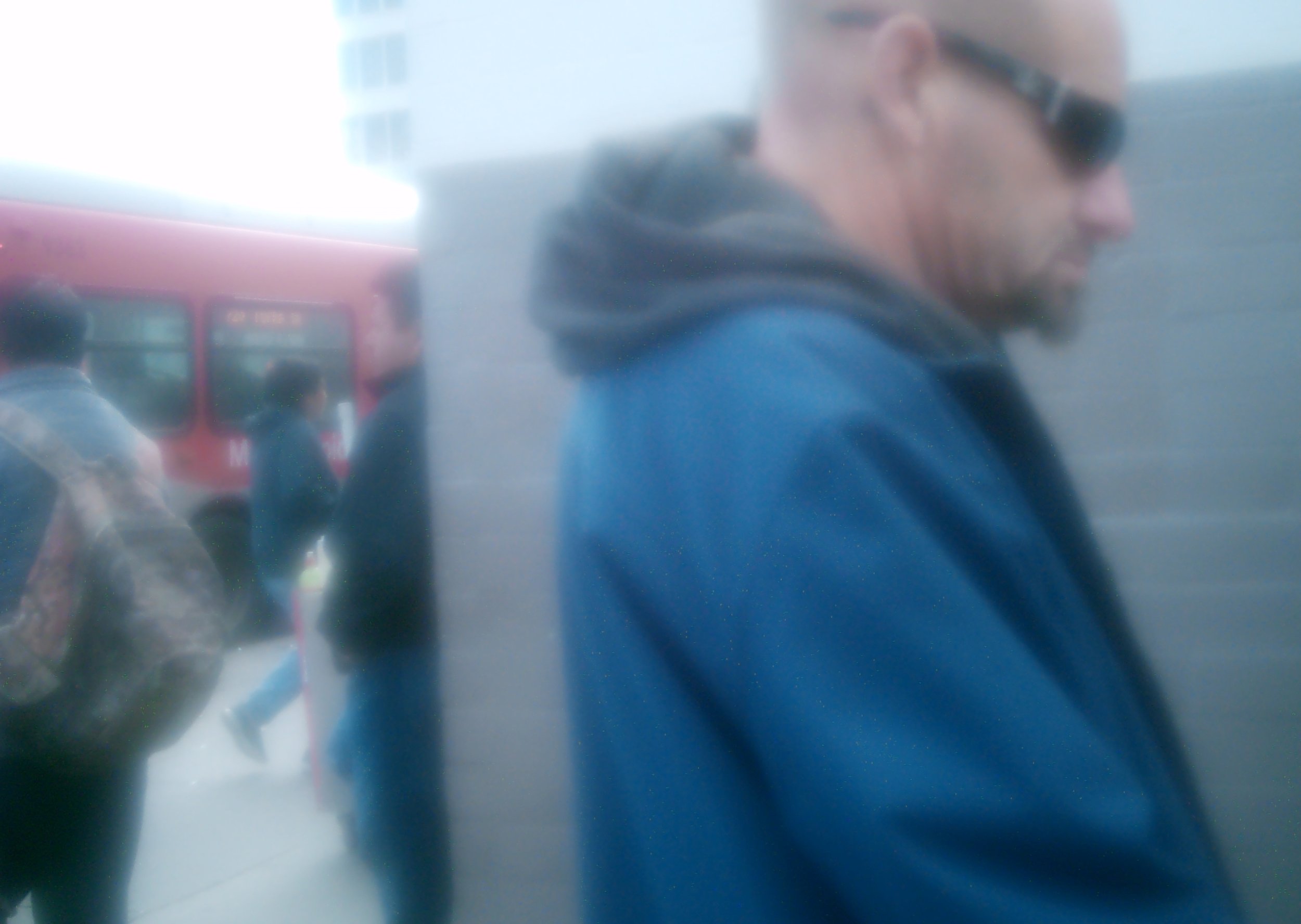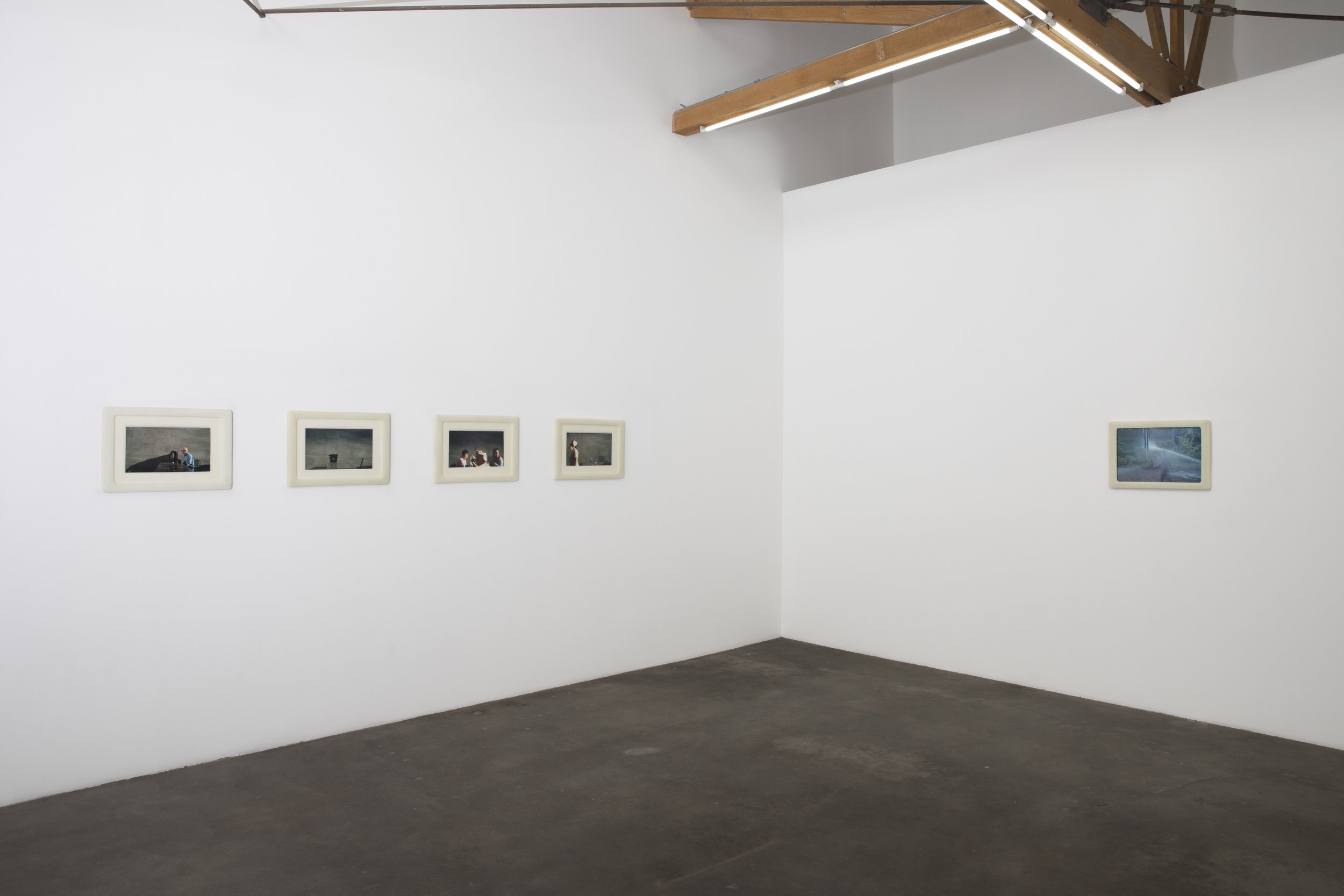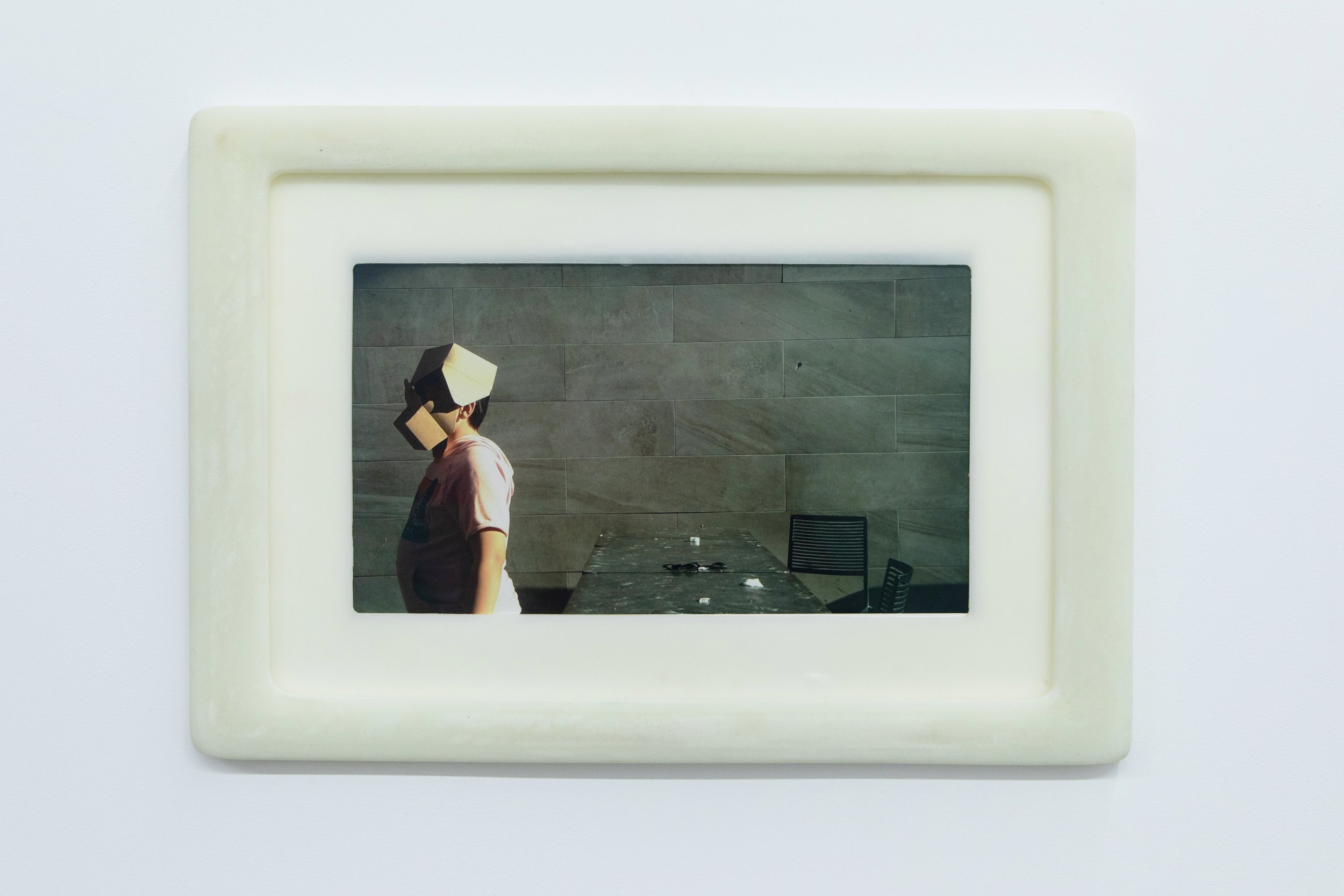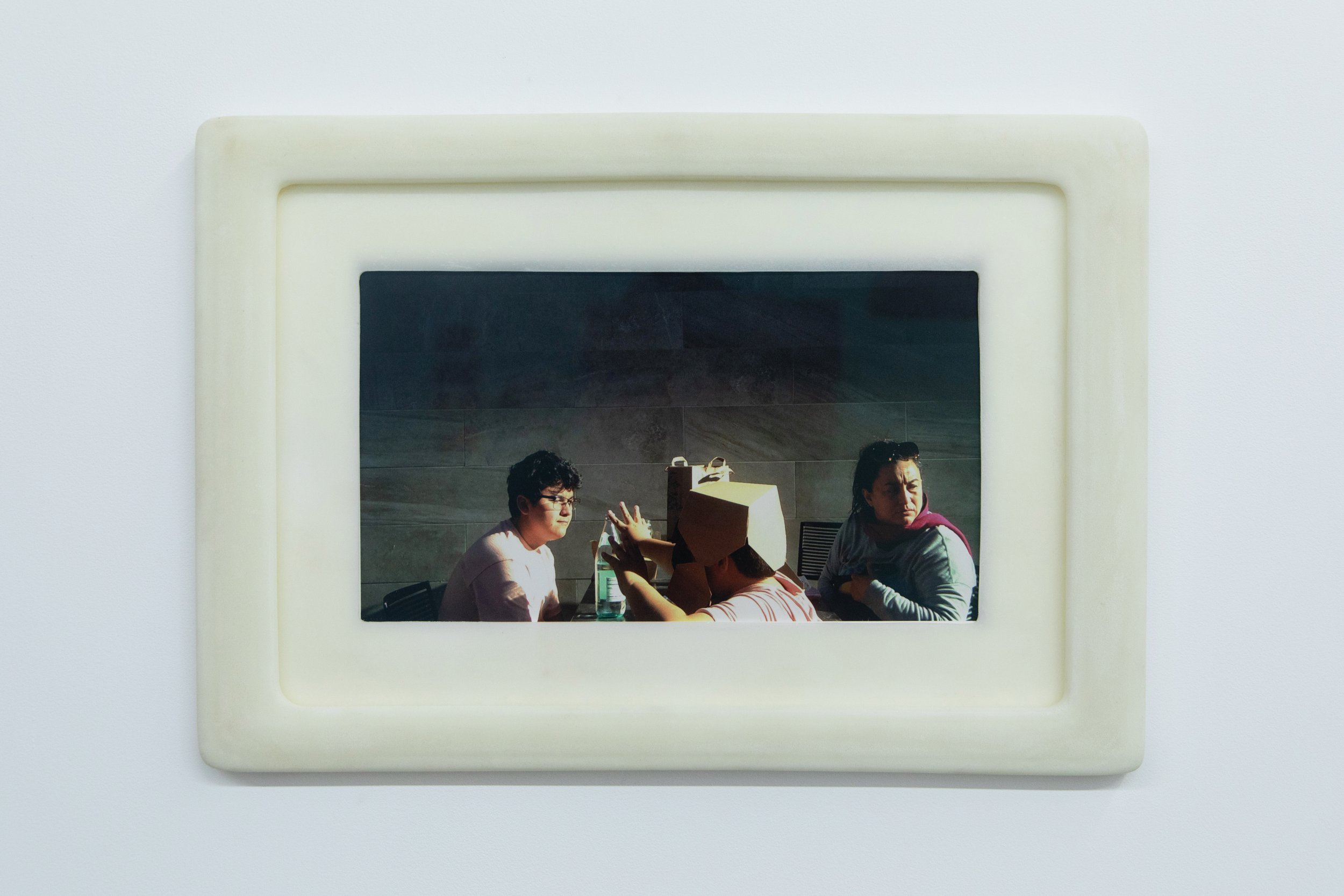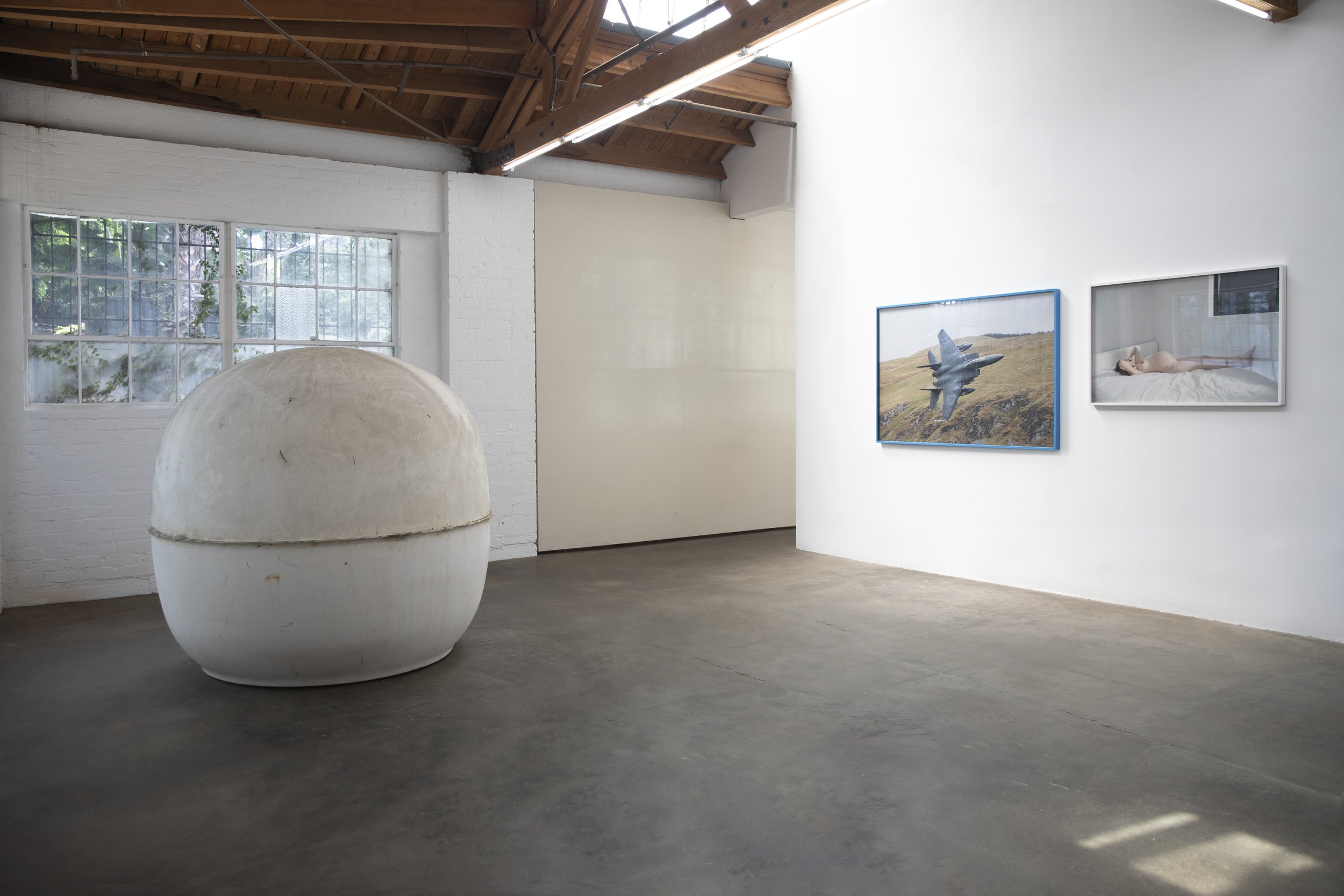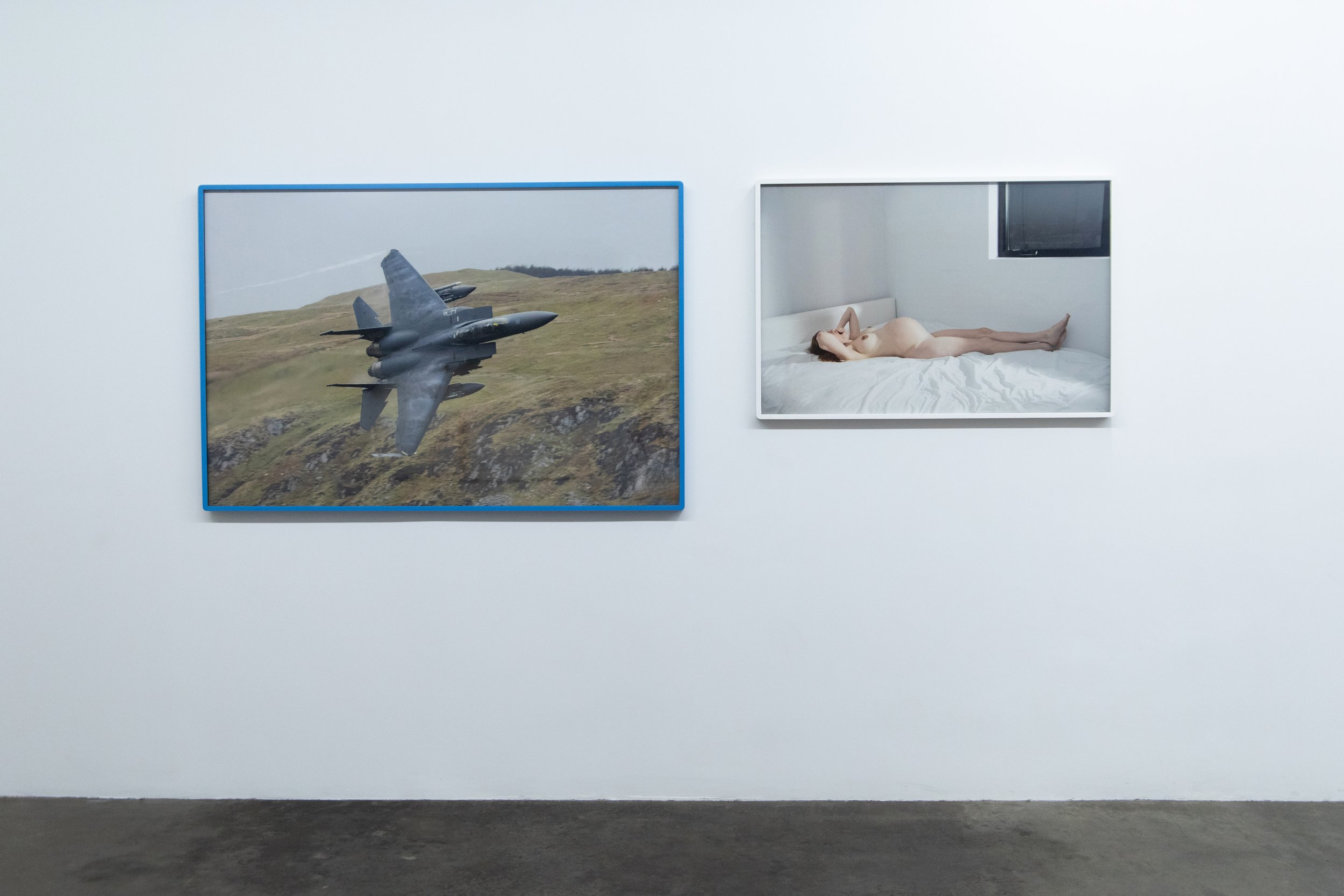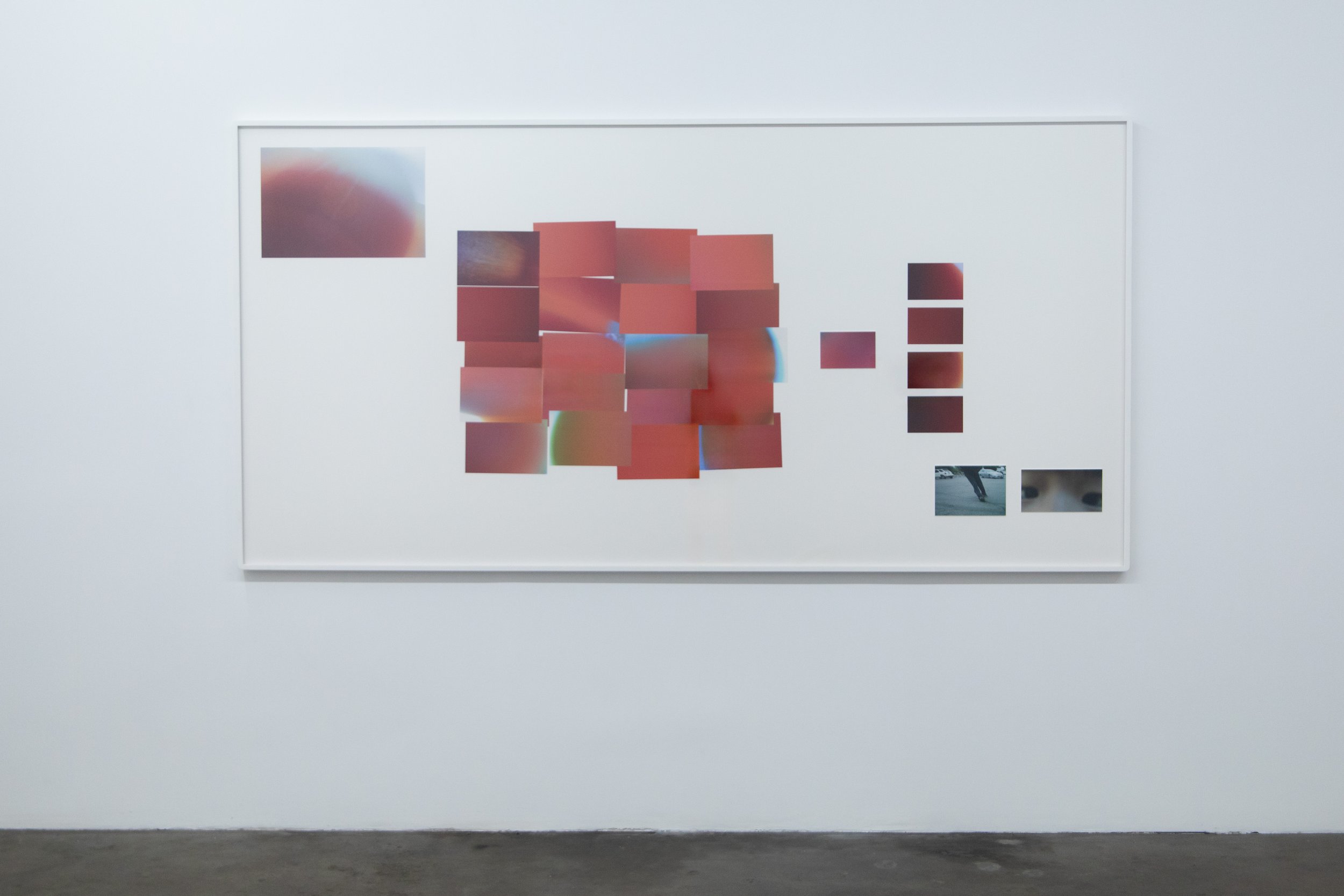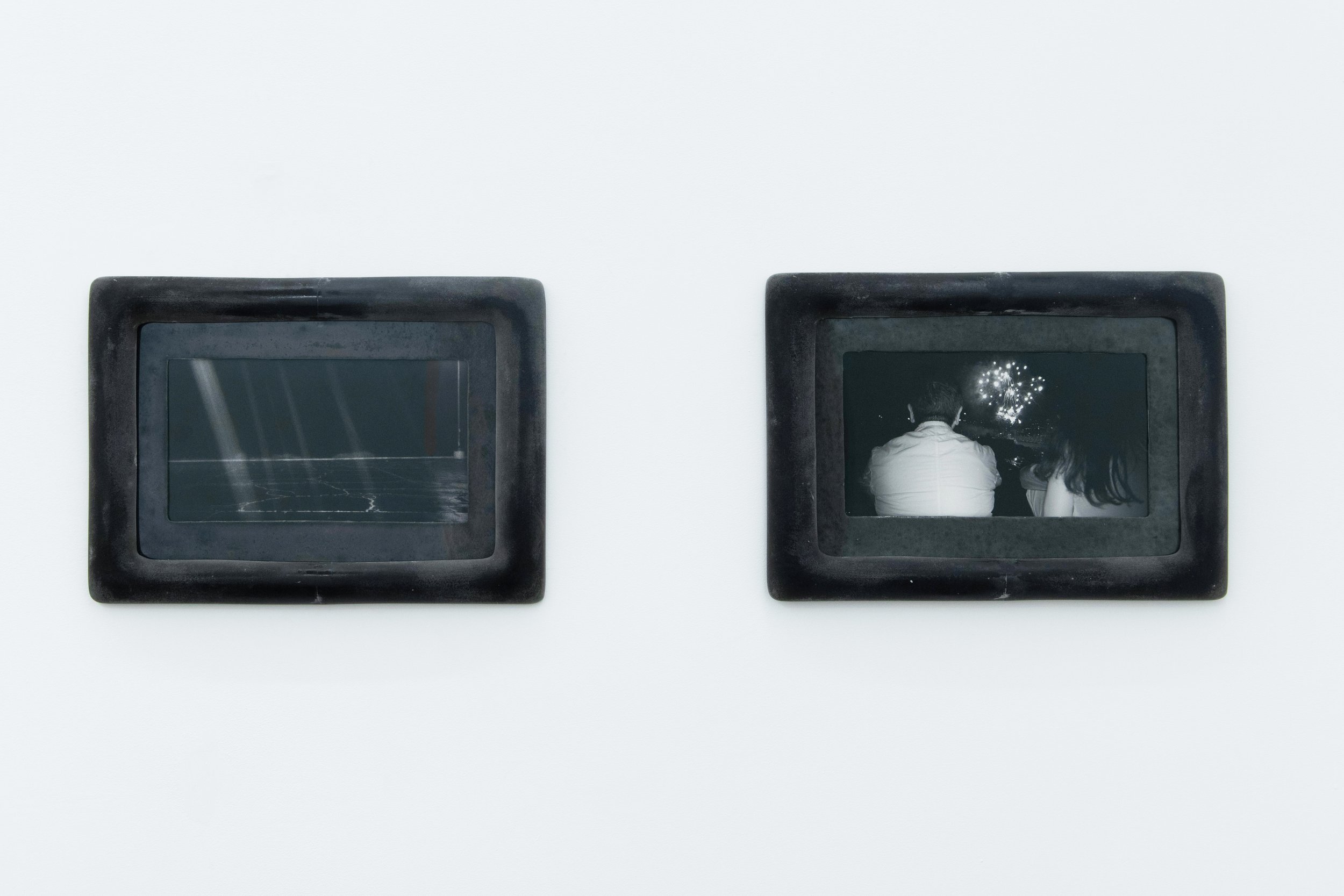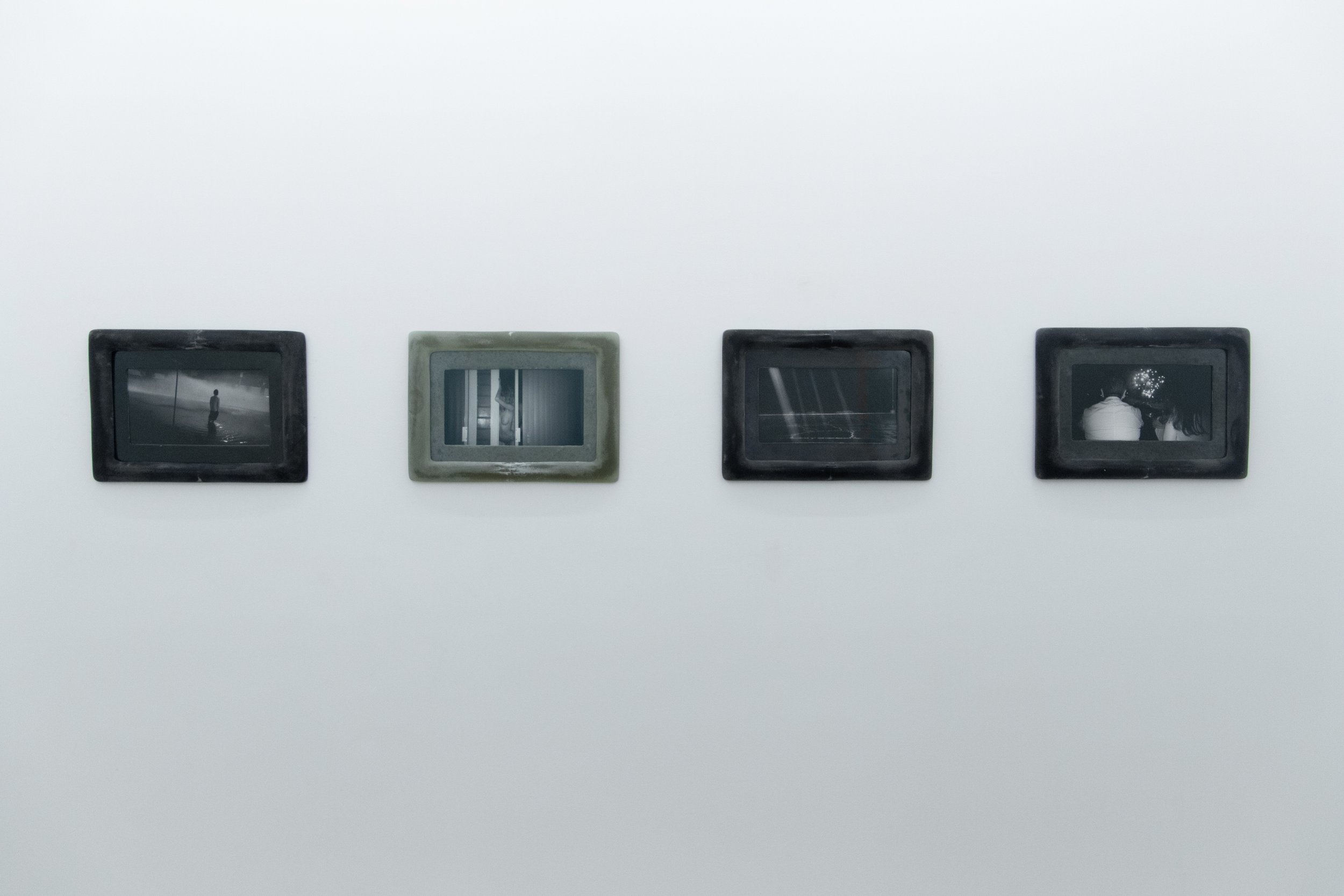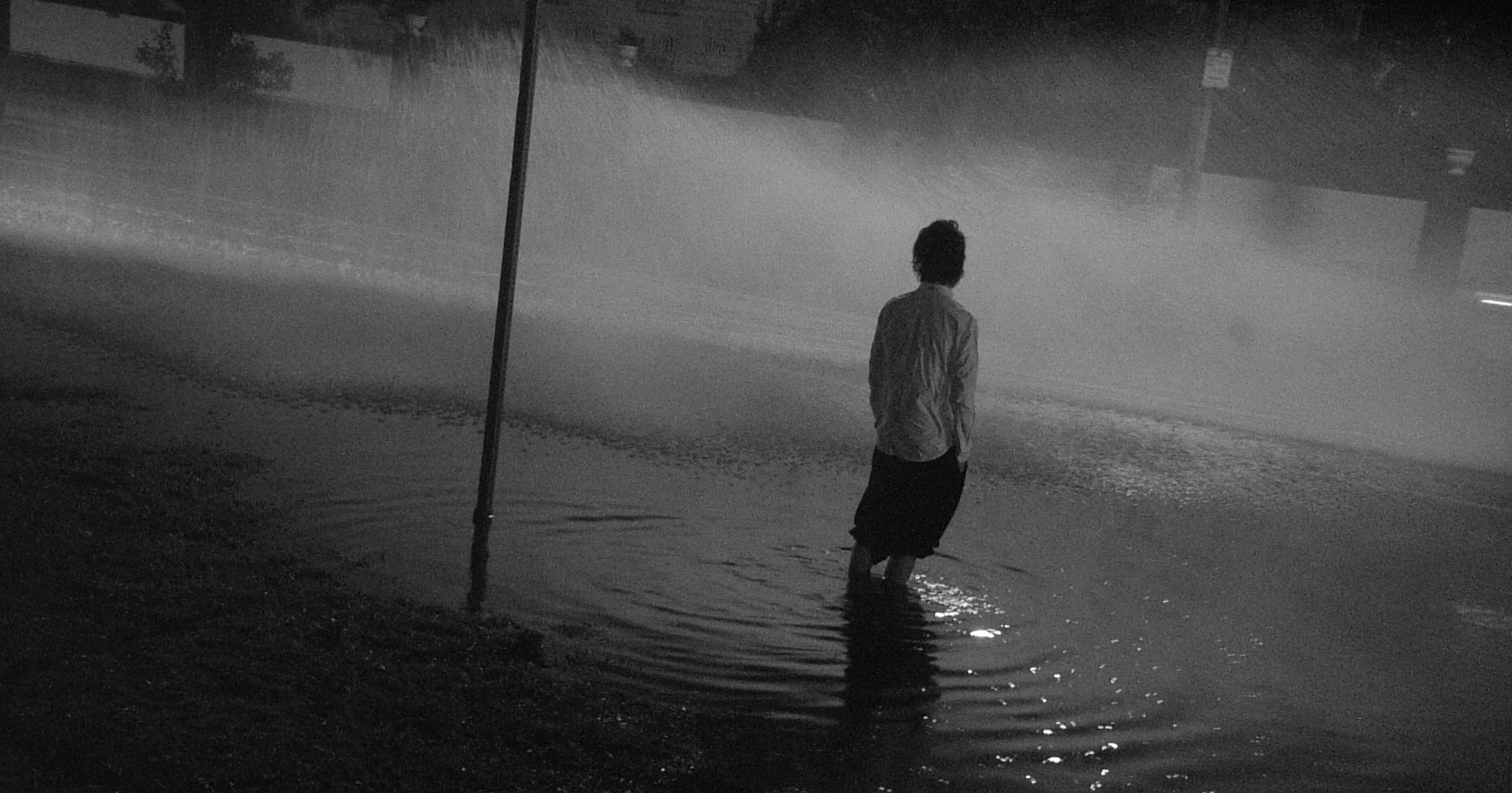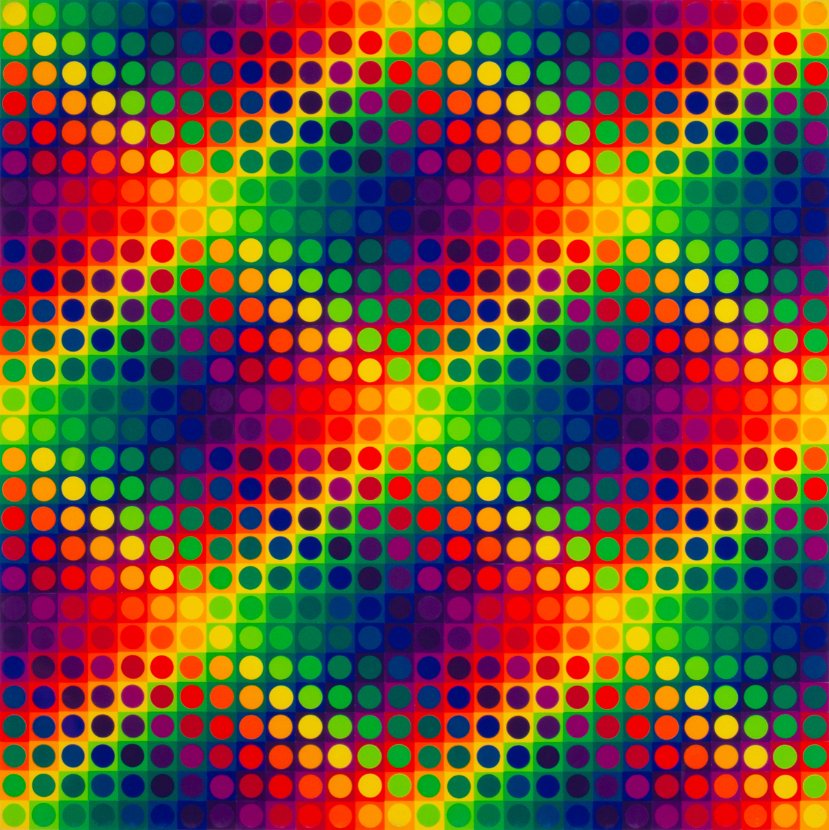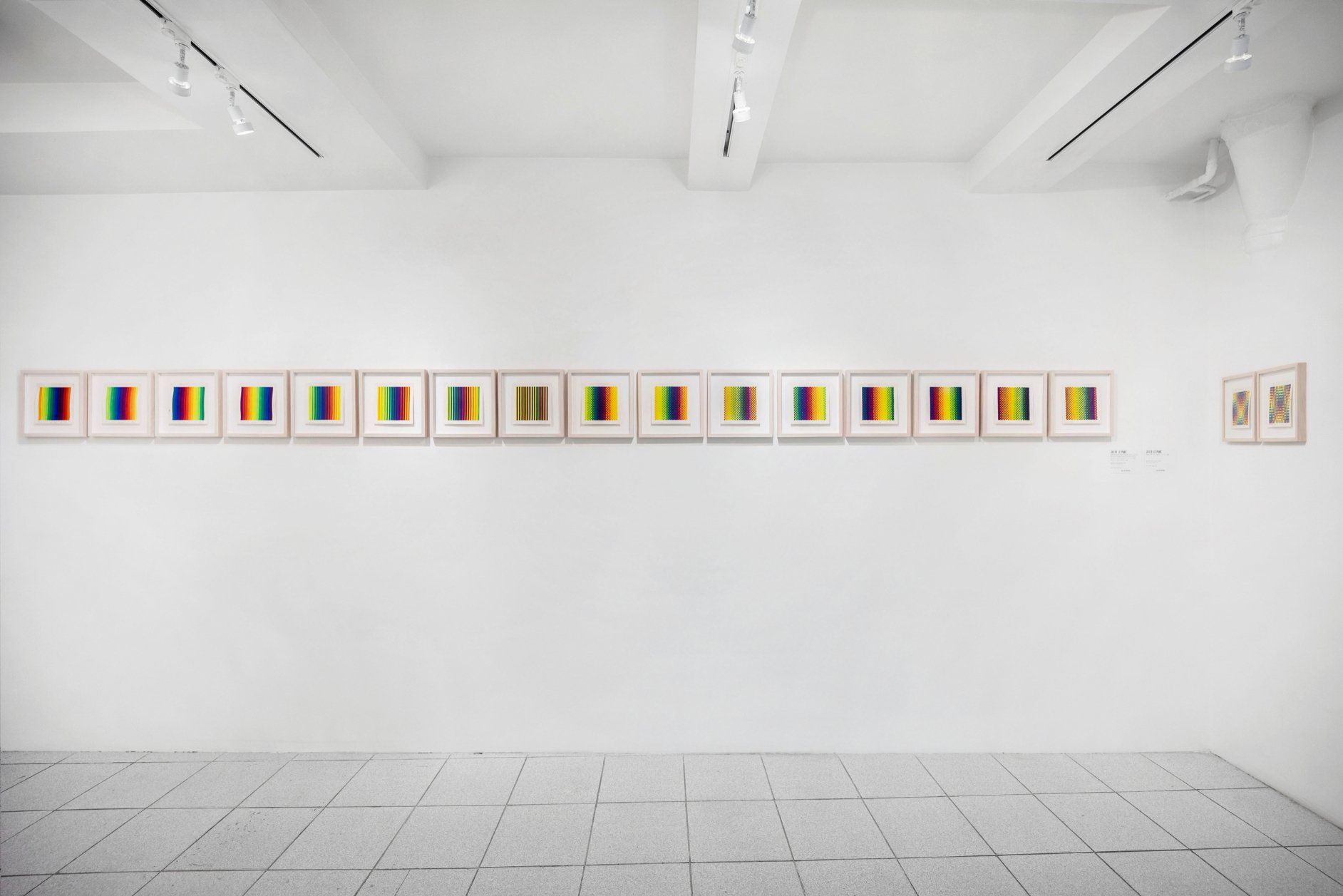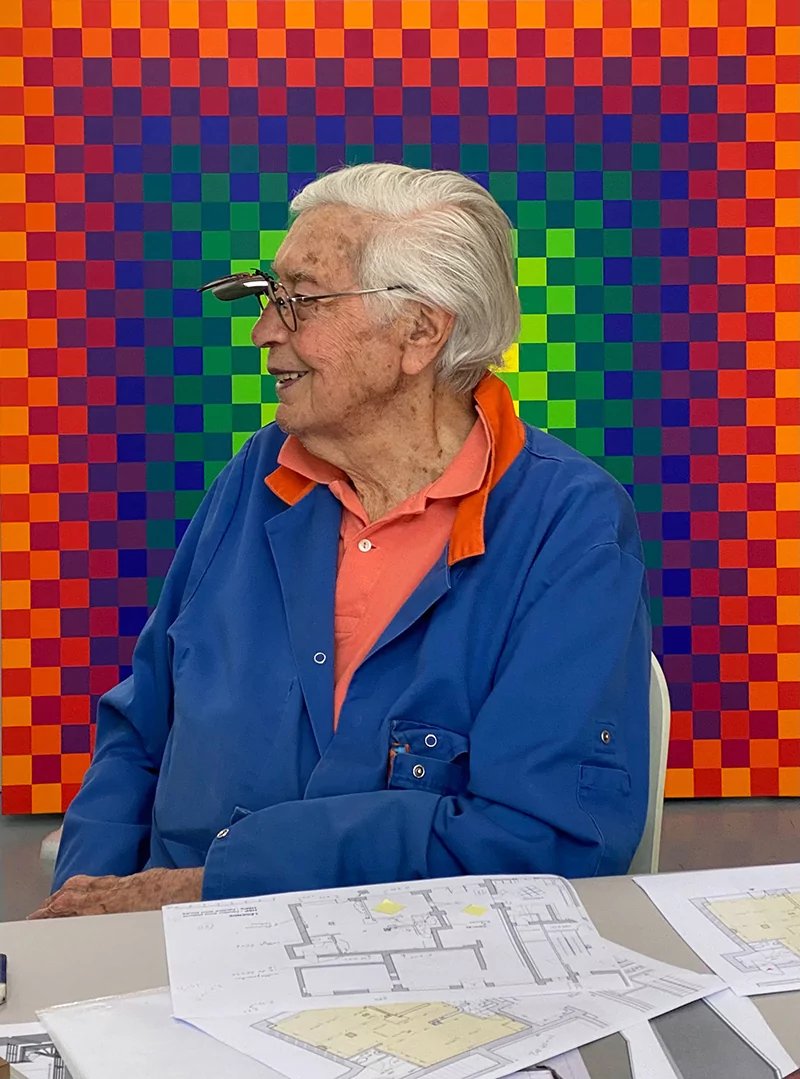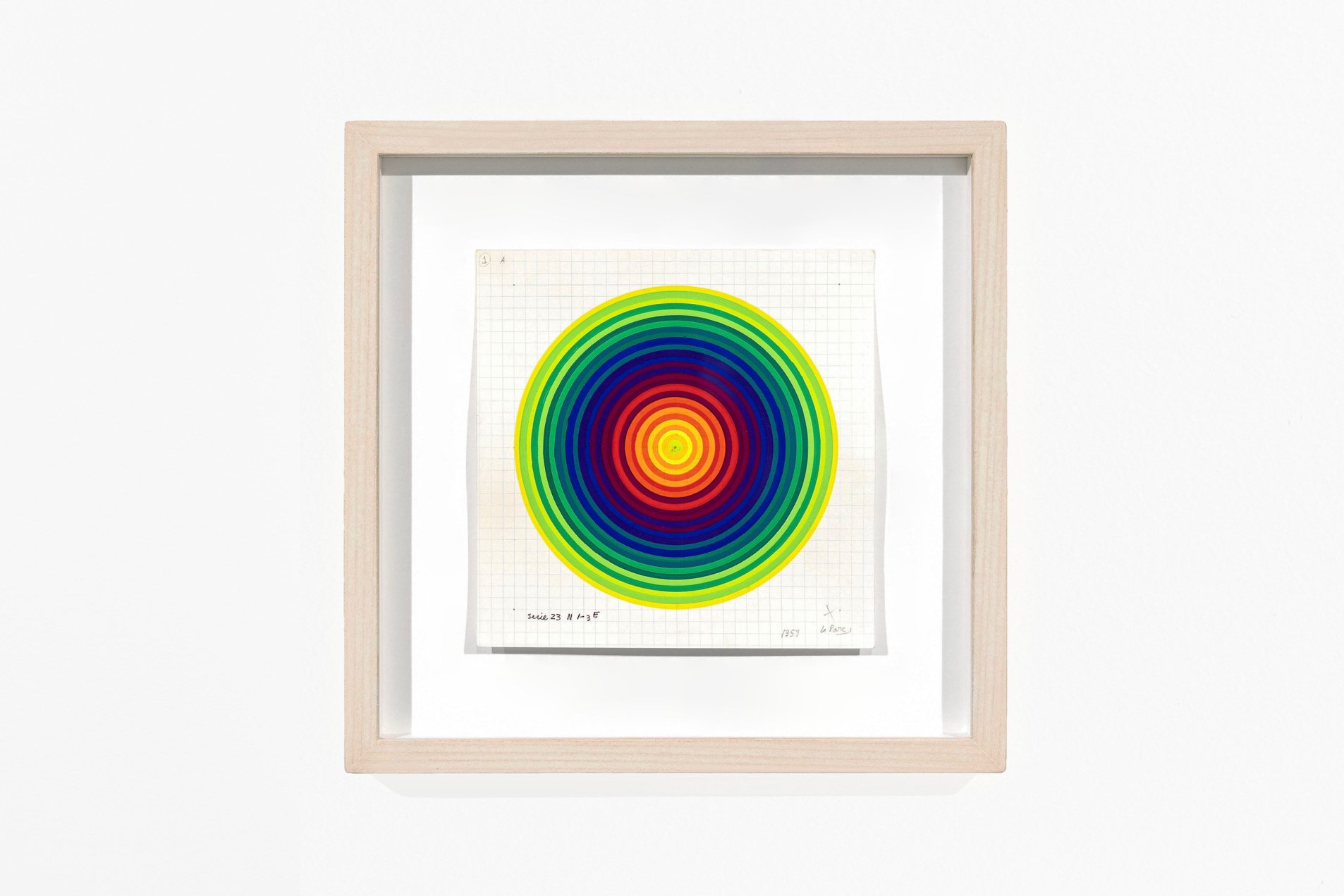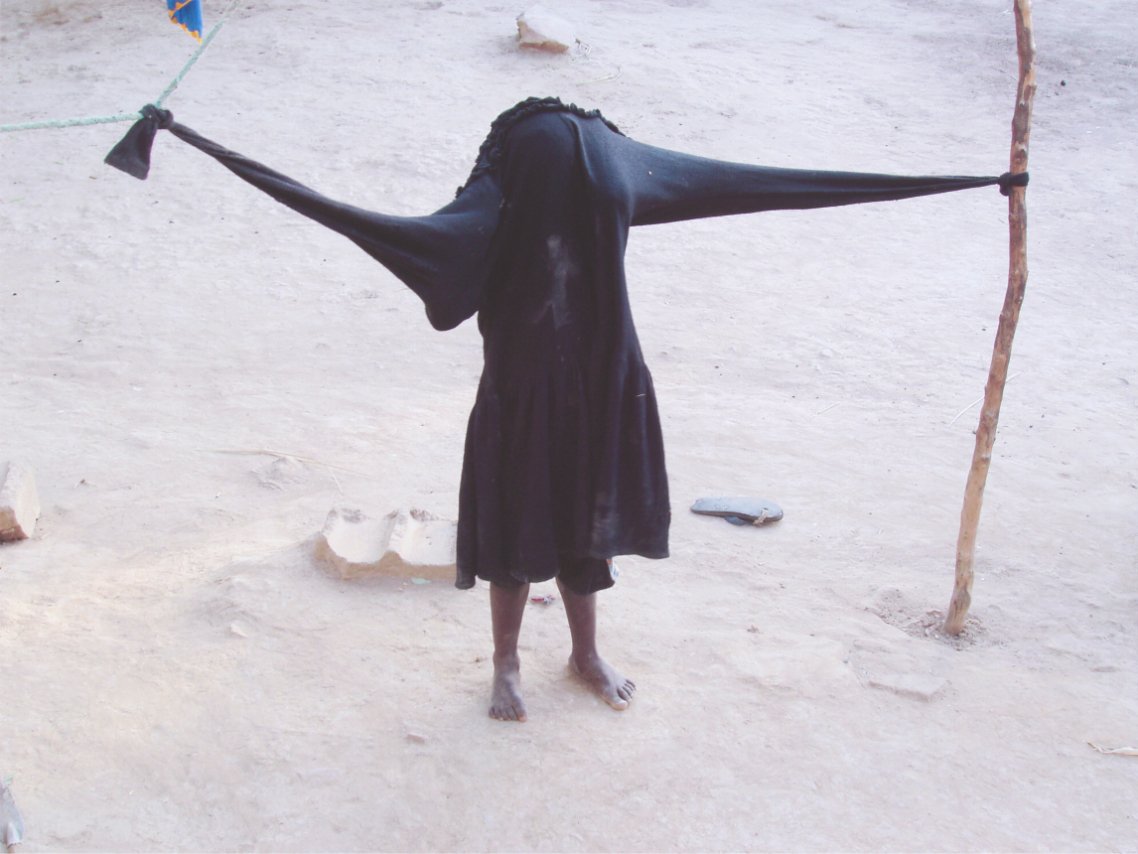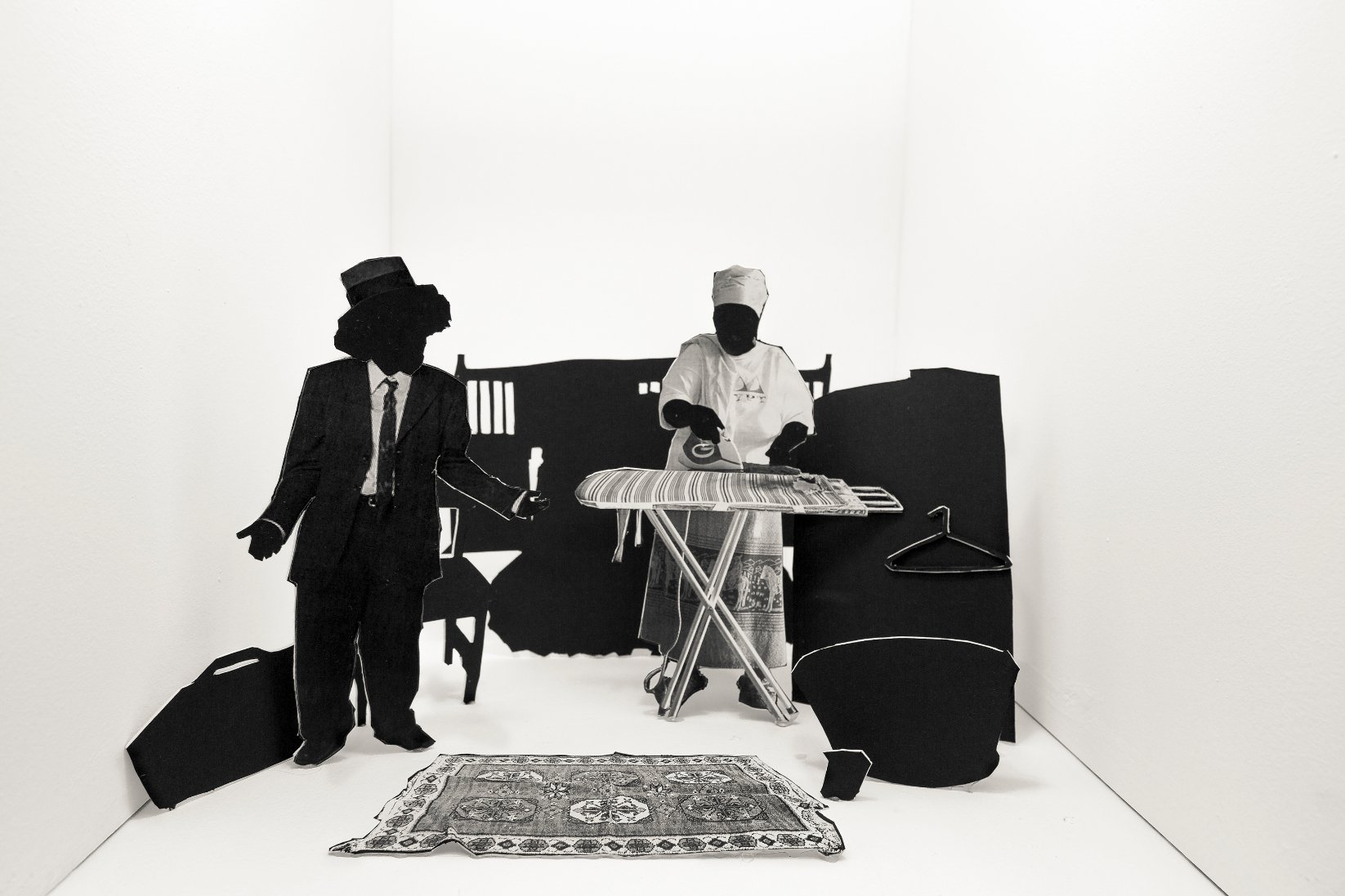Click here to order Autre #17 Fall/Winter 2023: The Instinct Issue
Augustas Serapinas Excavates Nostalgia from Discarded Houses in Roof from Rūdninkai @ Klosterruine Berlin
For his exhibition Roof from Rūdninkai, Augustas Serapinas produces a new expansive sculpture that takes its point of departure in a deserted house in rural Lithuania. The artist continues exploring his interest in questions of how space is constituted, how it reflects lived realities, and what memories are inscribed in it. Serapinas often finds the material for his sculptural interventions through online classified ads, where entire houses are given away on the condition that all materials be removed from the owners’ property. From these discarded materials he reconstructs sometimes recognizable objects such as a roof or a wall, sometimes more abstract artworks that open into a dialogue with the history of minimal art. In contrast to the use of anonymous industrial materials, Serapinas’s wooden elements and shingles bear clear markers of history, place, and use.
Roof from Rūdninkai is on view through September 17th at Klosterruine Berlin, Klosterstraße 73a, 10179 Berlin.
Hidden Gems by Kate Owen & Cathleen Peters
LEFT Eckhaus Latta nylon and wool sweater; Suss Knits alpaca and nylon dress; Araks polyamide and elastane panty; Cartier High Jewelry gold, emerald, rock crystal, onyx and diamond necklace.
RIGHT BITE responsible viscose and recycled polyester dress; Cartier Panthère de Cartier gold watch
photography by Kate Owen
styling by Cathleen Peters
modeling by Whizdom Williams & Zoe Louis
hair by Rei Kawauchi
makeup by Yui Sakamoto
manicure by Stephanie Hernandez
photography assistance by Toby Sprague
styling assitance by Sydney Sullivan
LEFT PRISCAVera polyester shirt
RIGHT Anne Ammarell wool sweater; Araks polyamide and elastane t-shirt
PRISCAVera polyester shirt; Cartier Juste un Clou gold and diamond bracelet
Jack Peters polyester and cotton shirt; Cartier Juste un clou gold tie pin and gold and diamond tie pin
Eckhaus Latta polyester shirt; Araks cotton bralette and panty; Cartier Agrafe gold and diamond earrings
LEFT FFORME viscose rib turtleneck; Cartier Agrafe gold and diamond bracelet
RIGHT Helmut Lang Cotton and polyester shirt; PRISCAVera leather bra and polyester skirt
PRISCAVera viscose dress; Cartier Juste un Clou gold bracelet
Aubrey Levinthal Explores the Absurdity of Existence in Tourist @ M+B Gallery in Los Angeles
Aubrey Levinthal, Airport, 2022. Courtesy of the Artist and M+B, Los Angeles.
M+B presents Aubrey Levinthal’s Tourist, an escapade into the accumulated mundane which breeds an entire life. Levinthal’s paintings take the strangeness of every-day encounters as their muse, cataloging the soft melancholy of a life in transit with a diaristic sense of levity.
At once both insider and outsider, Levinthal’s figures arrest the slippery interplay between the lonely voyeurism of the tourist and the studied absurdity of feeling like a stranger in one’s own home, collapsing any strict distinction between the two and exposing the mutable oddity of being at once both perceived and perceptive of others in public space.
In an almost paradoxical fashion, Levinthal employs restraint as a tool for arresting rich complexity. She deliberately whittles away at charged dynamism and linear storytelling until only the formal structure of the scene itself remains, forcing the space of each painting to turn in on itself with a sense of contemplative surprise. In the absence of heavy-handed action or emotion, the viewer is left to sit with the charming discomfort of a pure exchange of outward gazes, passing back and forth between both Levinthal’s figures and the viewer themself in a quietly kaleidoscopic ricochet of glances.
Tourist is on view through October 7 @ M+B, 612 N Almont Drive, Los Angeles
The Traditional Markers of Success Are Questioned in Failed Transcendance @ Max Goelitz in Munich
On the occasion of Various Others and Open Art 2023, artists Nicolás Lamas (with gallery Messeen De Clercq, Brussels) and Jeremy Shaw join max goelitz’s group exhibition, failed transcendence, together with Haroon Mirza, Helga Dóróthea Fannon and Niko Abramidis &NE. The central theme of the exhibition is author Tom McCarthy’s concept of failed transcendence. The group show focuses on the notion of failure and the questioning of traditional ideas of authenticity while exploring the limits and shortcomings of achieving higher states of consciousness across different time axes. The exploration of altered states in Shaw’s works, Lamas’s investigation of naturalness and artificiality, Mirza’s and Fannon’s merging of technology and spirituality, and Abramidis &NE’s blurring of the physical and virtual, create a rich and multidimensional dialogue revealing different layers of truth and reality.
Failed Transcendence is on view through October 21st at max goelitz, Maximilianstraße 35, Eingang, Herzog-Rudolf-Straße, 80539 Munich
Zephyr by Prissilya Junewin & Maya Lu
full look: Prada
photography by Prissilya Junewin
styling by Maya Lu
hair by Dennis Brandt
make up by Jamal Musa
photographer assistant by Emi Iguchi
modeling by Looloo, Damrasi, Idi
casting by Majin Scouting
production by Kaputt Agency
full look: Miu Miu
top & skirt: Meryll Rogge
tie: Dior
boots: Scarrossa
bag: Jerome Dreyfuss
top: Issey Miyake
dress: Ferragamo
dress: No Faith Studios
jacket & skirt: Annakiki
shoes: Miu Miu
Coat: UGG
Revisiting Summer Dreams: Four Exhibitions in Nordrein Westfahlen, Germany
Illiberal Lives, installation view, Ludwig Forum Aachen, 2023. Photo: Mareike Tocha
text by Lara Schoorl
Once known for its booming post-war mining industry, Germany’s Nordrein Westfahlen region has since developed into a thriving art hub (the last coal mine closed in 2018). With Art Cologne forming out of Kunstmarkt Köln in 1967, a host of academies and contemporary art institutions generating dialogue, and the city cluster (including Düsseldorf, Essen, Cologne, and Wuppertal) taking a central position in West Europe’s post war art world, the Ruhr Region is a hidden cultural oasis. While arguably operating in the shadows of larger art attractions, such as documenta, Manifesta, the Venice Biennale, Art Basel and its satellite fairs nearby, as well as the Berlin art scene, these four exhibitions in the river’s valley were a breath of fresh air during the market driven Basel week and the following summer lull in the commercial art world.
Etel Adnan: Poetry of Colors at K20 (Kunstsammlung NRW), Düsseldorf
Etel Adnan in her studio in Paris, 2014. © Galerie Lelong & Co.
Hot, 1960 Oil on canvas, 51 x 40,5 cm Kunstsammlung Nordrhein-Westfalen, Düsseldorf © VG Bild-Kunst, Bonn 2022 Photo: Galerie Lelong & Co., Paris
It is hard to put into words how much sense the work of Etel Adnan makes, her art and her poetry, and how they are connected. How the lines of letters in her handwriting become the onset of shapes we see in her paintings. How she wrote in multiple languages, alternating between them, in proximity to one another; Adnan shows their perceived differences while keeping them as part of one connected form of expression. As such, the work in its various forms epitomizes the essence of a human life and its multitude of contexts. The unique narrative of an individual and the relationships connected to her, the places she knew both real and imagined, the politics she stood by, and the materials her hands beguiled. And then, there is just the pure beauty of color, often circling out of the squares centered in her paintings that reference the sun: light, the original facilitator of color. Like her work, this exhibition was a lasting gift; it followed a retrospective at the Van Gogh Museum in Amsterdam last summer and hopefully will continue to find future iterations around the world.
Illiberal Lives at Museum Ludwig Forum, Aachen
Illiberal Lives, installation view, Ludwig Forum Aachen, 2023. Photo: Mareike Tocha
Illiberal Lives, a continuation of the 2021 Illiberal Arts at Haus der Kulturen der Welt in Berlin, extends the conversation about present day liberalism in society and questions the freedom of liberal promises of progress, revealing its “unfreedom” instead. It is an exhibition that keeps unfolding, visually and conceptually, post visit, triggering as much thinking as viewing. Upon entering the museum, one enters five large installations by Henrike Naumann and is completely immersed by nationalistic German design. While it initially seemed off-balance to have five installations of such scale by one artist in a group show, this dense core, which also includes works from the museum collection selected by the artist, forms a conceptual map for the exhibition overall. While it is dense, central and arguably local, Naumann’s presentation is so far and wide, it carries the weight and narratives of all other works, reverberating well beyond the museum walls into ancient and current histories. Melika Ngombe Kolongo’s work Nzita Dia Nza (2022), literally spirals out from the edge of Naumann’s installations in the central hall and into another gallery. Small mounds of earth holding metallic sculptures, a cassette recorder, and small plants form a divine route rooted in ancient Congolese geomantic practices that lead us to a video installation, Invisible Gestures (2022), and dovetail Kolongo’s practice as a DJ with her visual art through sound, drawing, the body, and nature. An interdisciplinary practice continues in this same gallery with Bassem Saad’s videos and prints. Concise and beautifully written textual fragments overlay visual landscapes of Beirut in the films and perhaps of Berlin, Marseille, and Eastern Mediterranean places in the prints. The series of prints Suppose that Rome is not a human habitation (2022-23) are poems from anonymous locales, or at least a word from elsewhere that holds the power to influence the future of its destination or recipient by expanding their view. Saad’s video works, Kink Retrograde (2022) and Congress of Idling Persons (2021) rooted in specific events, do not only inform us of what happened––the October 2019 Lebanese uprising, the aftermath of the 2020 explosion in Beirut, the murder of George Floyd––their imagery form the context of the lives of the speakers in the film, how it formed and influenced their personal existence within community and the potential of alternative futures. The exhibition goes into a hundred directions through art from the 20th and 21st centuries referencing multiple wars, murders, and trials. It creates and untangles myths, it is through those myths that love, beauty and hope, an array of ingredients for the future persist, and is precisely as well where freedom can be found or can be narrated into existence, some day.
Jenny Holzer at K21 (Kunstsammlung NRW), Düsseldorf
Exhibition view: JENNY HOLZER, Kunstsammlung Nordrhein-Westfalen, Düsseldorf, Germany, 2023 © 2023 Jenny Holzer, member Artists Rights Society (ARS), NY Photo: Achim Kukulies
Spread across multiple galleries, Jenny Holzer brings information we (may) have heard before right in front of us (again); on a large scale, in speaking colors and materials. In isolated and personal bouts we are confronted with a variety of history’s atrocities. Upstairs we see formerly classified documents from US government institutions––now available, although redacted, through the Freedom of Information Act––about prison camp tortures, crime against civilians, and military operations in Iraq. The size of the works fits the weight of the knowledge they carry. Blown up, Holzer’s Redaction Series (2005-) of paintings and silkscreens not only puts a looking glass on isolated events, but in doing so, they shine light on the information that is kept in the dark. The application of metal leafing onto the silk screens and oil paintings echo an aesthetic of weapons, ballistics, and dog tags; but the munition these works carry is a call to the freedom of knowledge. Downstairs, all walls of the gallery are covered with Holzer’s Inflammatory Essay (1979-82), posters that immerse the viewer in hundreds of the hundred-word manifestos on politics, gender, violence, and, of course, abuse of power. Despite an overwhelming entry of color and messaging, the space conveys a solemn feeling, accumulating with every text that one reads, but instilled instantly and visually through seventeen of the red granite Survival benches, reminiscent of tombstones and placed in a circle holding engraved phrases that float between promise and discomfort. The curatorial decision to place two floors between Jenny Holzer’s earlier work downstairs and more recent work upstairs provides an inevitable but necessary pause in viewing and processing the weight of almost every word in every work.
Protect Protect metal, 2023 24 gold, moon gold, platinum, palladium and red gold leaf and oil on linen 79 x 102.25 in. / 200.7 x 259.7 cm Text: US government document © 2023 Jenny Holzer, member Artists Rights Society (ARS), NY Photo: Sveva Costa Sanseverino
Ruhr Ding: Schlaf, at Urbane Künste Ruhr
Ruhr Ding Schlaf Nora Turato who wants to tell her 2023 c Henning Rogge
The final iteration of the public art exhibition trilogy Ruhr Ding, fittingly, titled Schlaf closed this summer following Ruhr Ding: Territorien (2019) and Ruhr Ding: Klima (2021). The exhibitions, organized out of Urbane Künste Ruhr are the brainchild of Britta Peters, who has brought together artists from all over the world as well as local artists to speak to universally experienced themes in the geographical context of the small but economically, financially, and culturally influential Ruhr Region. The theme of Schlaf (or in English sleep) represents a criticism of the capitalist clock. Through the contradictory and modern idea of the eight-hour night and eight-hour work day, resting itself has become a commodity and is applied in order to maintain productivity. The works in Schlaf are scattered throughout the Southern and more quiet area of the Ruhr Region, in the cities of Essen, Mülheim an der Ruhr, Witten, and Gelsenkirchen-Erle––these were feared to become ghost towns after the closing of the mines. While the previous iterations of Ruhr Ding were connected to the soil and the air, Schlaf brings us to the body. Of course, the body is inherently connected and dependent on both soil and air, and so, dialogues with the locale and its political and environmental crises continue in Schlaf as well—to such a degree that connections to sleep are at times far-fetched. Often, instead of sleep, however, we encounter a response to its absence, the night, or in a broader understanding, acts of (self-)care. And, often the angles were utopic, providing a “dream” for an alternative future. Sleep thus came into the conversation via its various interpretations and associations that arose in the particular public spaces where the works found a temporary home. Nora Turato created an ASMR-like audio installation in Witten’s Schwesternpark, a former hospital garden, that encouraged listeners to not “just do something, [but] stand there,” for example. While the reversal of meaning of this well-known phrase initially makes one smirk, upon hearing it several times it begins to lose its meaning altogether. Only the monotone but inviting voice of the artist remains, the sound becoming a mantra. Elsewhere in Witten, in a cultural center, Melanie Manchot showed a new film, Liquid Skin; the viewer closely follows multiple people, one at a time, at night, always with their back towards the camera, as they walk through distinct yet unrecognizable buildings. It is as if they are sleepwalking and we are in a state of submission, following them in a near trance, glued to the screen and in anticipation of the end of this dream or nightmare. But, there are instances in which sleep is very literally present, such as in the must-see idiosyncratic Museum für Fotokopie in Mulheim. For Schlaf, the museum opened the exhibition We’re Closing. Taken from the advertising slogan often used by competing mattress stores to drive up sales, the show presented bed linens, pillows, and pajamas onto which various artists had copied their art, including copy artist Klaus Urbons and David Hockney.
Ruhr Ding Schlaf Melanie Manchot 2023 Liquid Skin c Henning Rogge
Ruhr Ding Schlaf Melanie Manchot 2023 Liquid Skin c Henning Rogge
The Gelatinous Abjection of Mire Lee's Black Sun @ New Museum in New York Invariably Turns Us On
“Mire Lee: Black Sun,” 2023. Exhibition view: New Museum, New York. Courtesy New Museum.
Photo: Dario Lasagni
text by Hannah Sage Kay
Entering Mire Lee’s installation at the New Museum—passing through plastic strip curtains into a moist, greenhouse-like environment—seems, I can only imagine, like a trip up a vaginal canal. It recalls one time that, in warm, sud-less water, I looked down to see a brownish-red gelatinous mass emerge between my legs. With an ovular center and porous, mane-like tentacles, it moved, not in a bloody mess, but as a neatly self-contained collection of blood clots and uterine lining. The wet porous fabric that lines the plastic walls of Lee’s installation recalls this same murky, brown fluid that accompanies the expulsion of an egg and, not at all coincidentally, overlarge egg sacks dangle from the ceiling, entwined with rope, metal chains, and what looks like a prematurely formed exoskeleton.
Strange whirring, rotating devices—simultaneously technological and organic—churn in mud-filled recesses of the grated metal floor below. One such contraption wound with sodden, fleshy cables rotates over a pool of dense brown liquid: a loose member makes a distinctly phallic flop; an art handler man-handles the entrails; a viewer becomes a casualty of the splash impact—its localization on the front of his pants unveiling the very male shame at the heart of all female subjugation. A cum shot to the patriarchy? A territorial spraying? A cyborgian golden shower? However you spin it, I like to think the installation staked its claim, via a forced confrontation with those bodily functions and oft-taboo fluids that make up the stuff of all life and sex, feces and death.
This pseudo-maturation chamber, in all its arousing repulsiveness, posits the female body as the original site of body-horror as a genre and sexual stimulant—not because any real violence has occurred, but rather because violence is inextricably associated with the female experience: vaginas tear in childbirth, babies emerge as purple as eggplants, walking down the street is a physical liability. And yet, the genius of Lee’s installation is its unabashed admission that depravity is sexy. It recalls those paraphiliac misadventures recounted in Georges Bataille’s The Story of the Eye, where omorashi fetishism and corporeal mutilation are the result of adolescent musings; it simultaneously transports you inside an episode from Star Trek: Enterprise, wherein Captain Archer develops an obsessive interest in the unhatched Xindi-Insectoid eggs hanging from the ceiling of an abandoned ship after one sprays him with a neurotoxin. What is, there, a simple illustration of the chemically-induced power of maternal instincts and the resulting shame when those same instincts are displayed by a man, here manifests as a voracious unease: the uncanny pleasure and discomfort of an unfulfilled orgasm.
Titled after Julia Kristeva’s Black Sun, Lee’s installation extends Kristeva’s characterization of melancholia to the asshole and all its attendant forms as another forbidden, shameful, non-speakable void in which language and symbology no longer function, but that same characterization can, it seems, engulf our prescribed and highly shielded perspectives of the female body. So, while many may simply be disgusted by Lee’s exhibition and what it stands for, I instead see a feminist refusal to quiet those life-giving functions that in the secret recesses of the mind invariably turn us on.
Artist Mario Ayala Curates 176 Artists For Group Shoe 3 At House Of Seiko in San Francisco
Image courtesy of House of Seiko.
House of Seiko is currently presenting Group Shoe 3, a group exhibition curated by Mario Ayala featuring work by 176 artists from his community of friends and collaborators.
This is the third iteration of Ayala’s group show series (the last occurring at Public Access in New York, opening the same week as his solo show at Jeffrey Deitch), and features artists working in various mediums, scales, and at various points in their careers.
Ayala writes that “it's been important to me to highlight my community and the people who have been alongside me during my time as an artist, whether they are childhood friends or new acquaintances. It's been a steady reason to celebrate and gather together in new spaces.”
An additional layer of personal importance comes from the fact that San Francisco is where Ayala began to focus as an artist, where he completed his undergrad degree at SFAI and had some of his first exhibitions, and now, his first institutional show.
Group Shoe 3 is on view through September 17 @ House of Seiko, 3109 22nd Street, San Francisco, CA
Read Our Interview of Artist Emma Webster Ahead of Her Upcoming Exhibition @ Jeffrey Deitch →
Emma Webster
The Rehearsal (Harvest Moon) (2023)
60 x 84 in
Oil on linen
How does one go about staging a stage? Emma Webster’s upcoming exhibition, Intermission at Jeffrey Deitch, answers this question by erasing the line between prop and (back)stage. This boundary erasure is nothing new for Webster, whose work combines the supernatural, unnatural, and natural realms, merging this paradoxical triad into a cohesive, uncanny space that reflects the inescapable presence of human viewership on nature and art. Her landscapes exist in a variety of intermediary spaces: between heaven and horror, nature and technology, fiction and reality, and theater and visual art. In Intermission, she gives physicality to these liminalities while highlighting previously behind-the-scenes sculptural stages of her process, creating an environment of borderless voyeurism that invites us, the viewers, into her creative world, while reminding us of our separation from it, reinforcing our roles as witnesses. Read more.
Photographs by "Kids" Lensman Eric Alan Edwards Exhibited for the First Time in Tokyo
Whippets marks the first solo exhibition by photographer Eric Alan Edwards on view at the Galerie Hideout at Mustard Hotel Shibuya. For the first time, ten of Edwards’ photographs, taken during the production of Kids in the late ’90s, are shaped into a non-linear photostory and presented as part of a larger installation documenting that era and Edwards’ process.
Edwards worked as the lensman on Larry Clark’s debut feature narrative film, Kids. As Edwards was filming the movie, he simultaneously captured and chronicled the unfolding history, scene by scene.
In the golden age of independent cinema, Edwards took it upon himself to intuitively photograph the world in front of him, an act he has carried on since age ten. What is uncanny about the artworks is how they question what is cinematic, what is real, or what actually took place during the making of this storied American film.
Accompanying the exhibition is various ephemera including movie artifacts, as well as documents of the creative process of Edwards’ involvement in the film-making process that work alongside the artwork to offer a new glimpse into both the subculture and his artistic process, reflecting life, passion, and craft.
Whippets is on view through September 11 @ Galerie Hideout at Mustard Hotel Shibuya
1 Chome-29-3 Higashi, Shibuya City, Tokyo
Moki Cherry: Here and Now @ Institute of Contemporary Arts In London
Here and Now displays over 30 artworks and archival material of Moki Cherry including works that have never been shown in the UK. The exhibition celebrates her exploration of where art and life meet, her collaborative and interdisciplinary practice, and her inventive resolve in the face of gendered challenges working both as an artist and mother – issues which remain pertinent to artists and audiences today. Drawn entirely from the Estate of Moki Cherry, this exhibition presents a rare chance for the public to view these privately held works, which remain preciously cared for by her family.
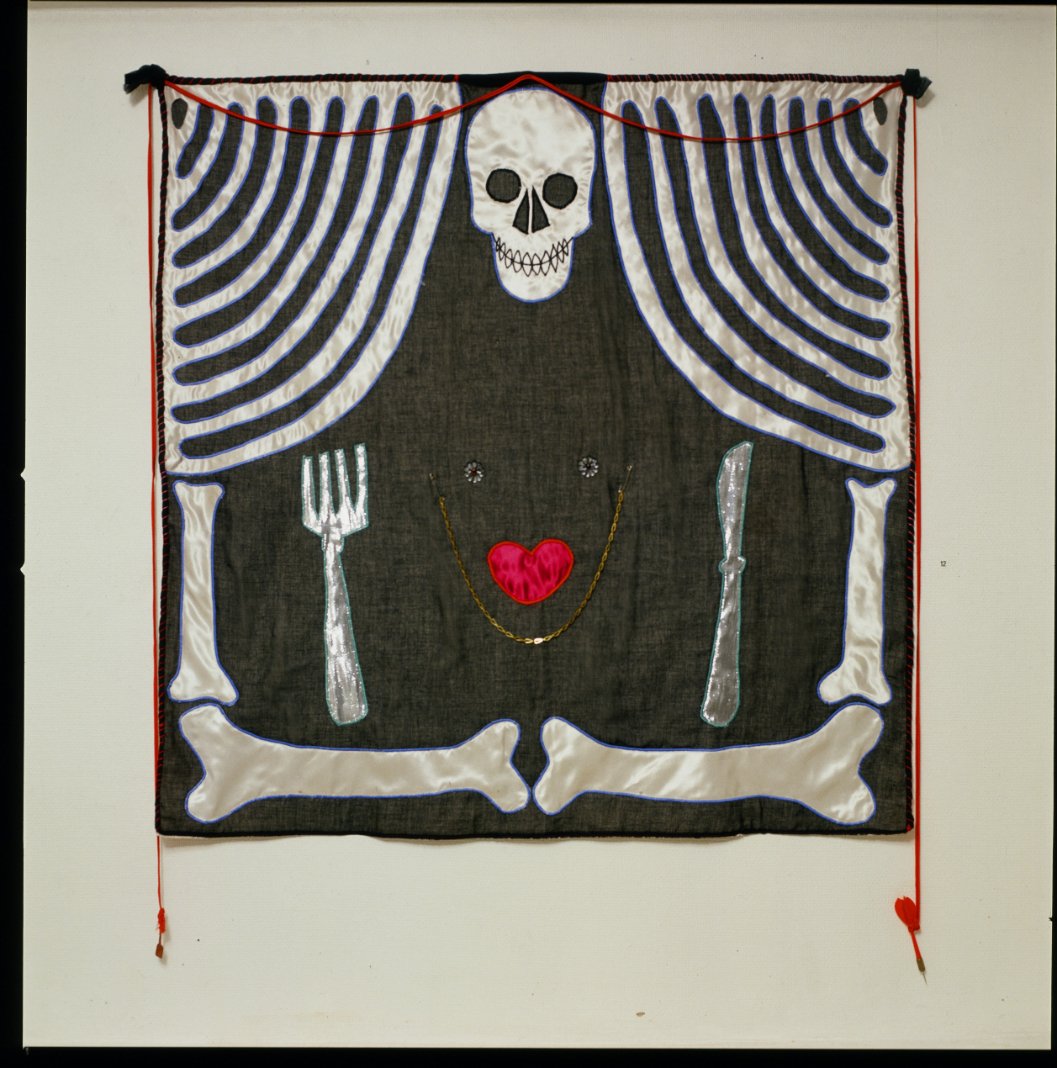
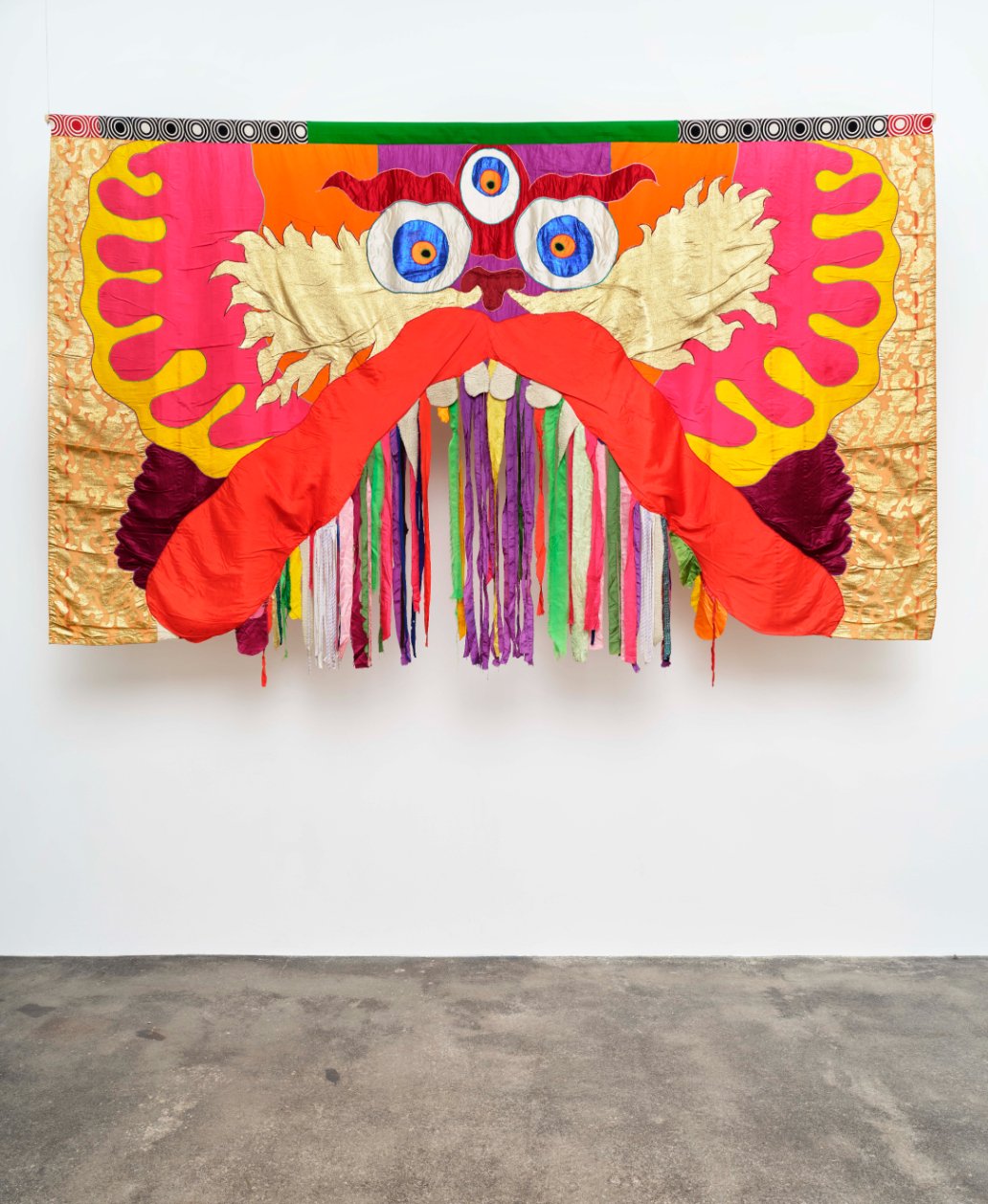
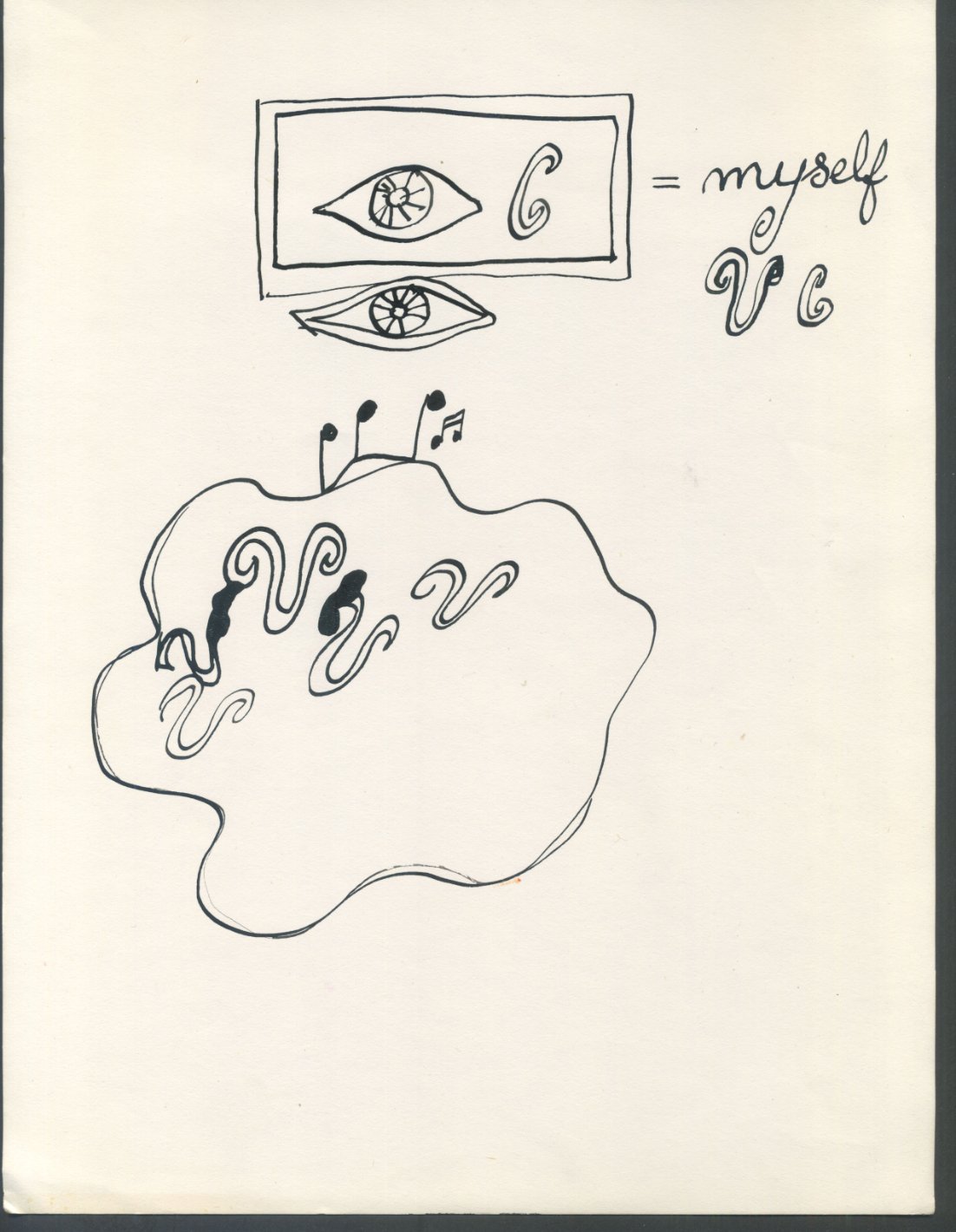
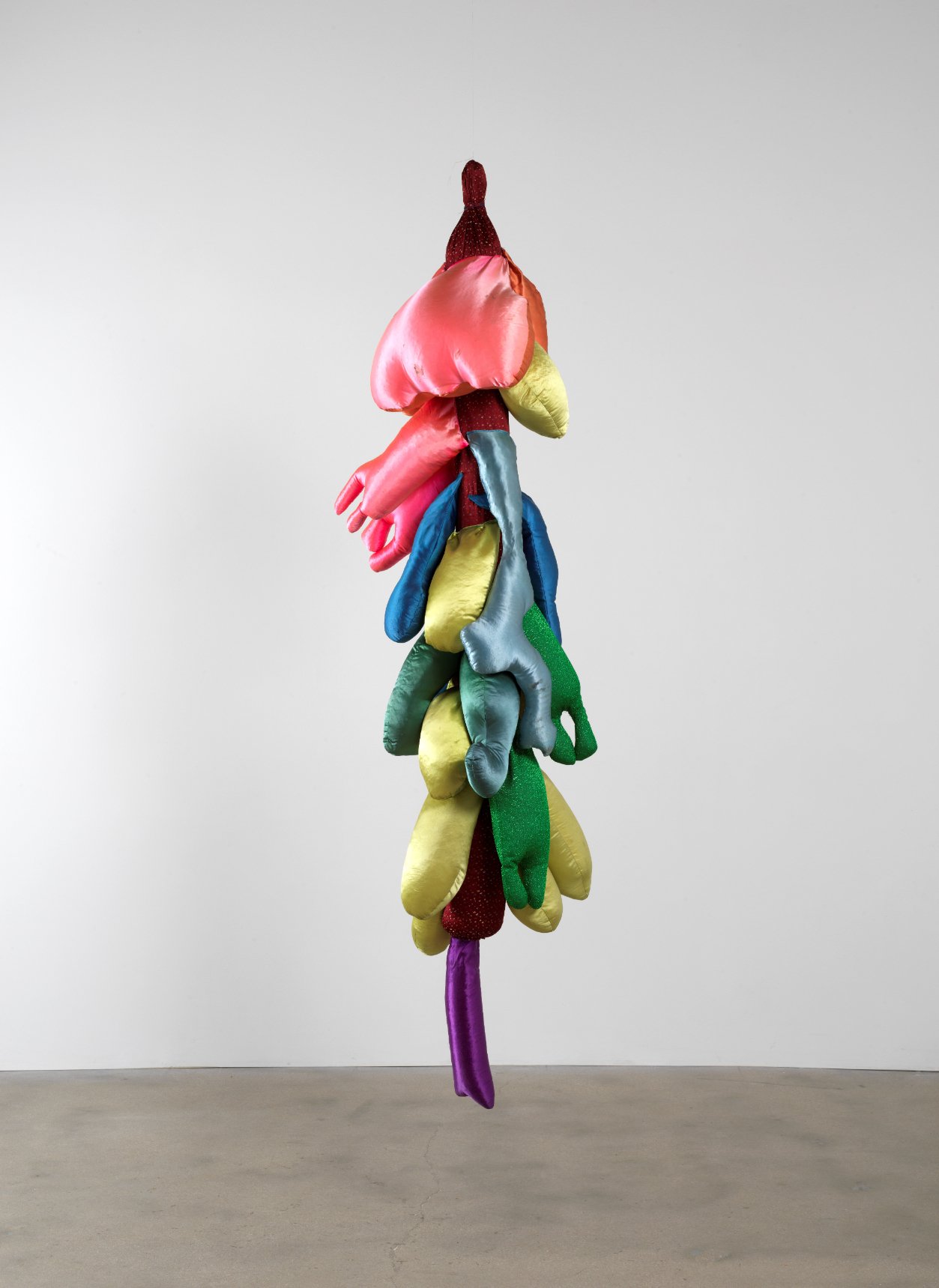
The title of the exhibition is inspired by an untitled drawing, an abstracted figure with arms outstretched embracing the words ‘Here & Now’ against a cloudlike landscape alongside a star and birds. It reflects the artist’s longstanding study and practice of Buddhism and its teachings which focus on being in the present, rather than dwelling on the past or speculating on the future. Characteristic of Moki’s playful use of language, it recalls her jazz musician husband Don Cherry’s 1976 album Hear & Now, for which Moki designed the cover using appliqué and collage.
Moki Cherry: Here and Now is on display through September 3rd at the Institute of Contemporary Arts at The Mall, St. James's, London
The Corporeal Grotesque Proposes A New Relationship to Social Justice In Gil Yefman's "It Ain't Necessarily Soft" @ Shoshana Wayne Gallery in Los Angeles
All images courtesy of the artist and Shoshana Wayne Gallery.
In his debut solo exhibition It Ain’t Necessarily Soft at Shoshana Wayne Gallery, Gil Yefman exhibits sculptural and two-dimensional installations created over the past decade. Yefman’s practice explores a unique artistic language defined by brightly colored knitted sculptures of grotesque, fluid, multi-organ beings. The knitted work becomes an extension of the body, and felting becomes a memorialization of the experiences held within that body. Though knitting and felting are commonly associated with female, queer, and domestic tasks that would traditionally fall into a strictly decorative category, Yefman redefines them into works that honor a memory within the individual to provide a sense of justice and new presence in the world. These soft objects that were once read as defense mechanisms representing a vulnerable or threatened body are transformed into a new relationship with social injustices.
It Ain’t Necessarily Soft is on view through September 15 @ Shoshana Wayne Gallery, 5247 W Adams Blvd, Los Angeles, CA 90016
Tomás Saraceno In Collaboration: Webs Of Life @ Serpentine In London
From 1 June to 10 September 2023, Serpentine will present Web(s) of Life, the first major exhibition in the UK of artist Tomas Saraceno and collaborators, including spider/webs; the communities of Salinas Grandes and Laguna de Guayatayoc, Argentina; spider diviners in Somit\ Cameroon; the ongoing research-driven community projects Aeroceneand Arachnophilia initiated by the artist; as well as the life forms of the Royal Parks.
Tomas Saraceno will create a porous environment where Serpentine's building and operations will respond daily to the immediate landscape of the surrounding park and weather conditions. It will bring together new and recent interactive works to propose how it is possible to take a more responsible, and responsive, approach to one's actions in relation to other people, interspecies co-habitation, and the climate injustices unfolding across the world. Challenging the ways in which exhibitions are conceived and enacted, Web(s) of Life will become a 'living organism' that responds to the weather outside and the gallery's unique location in the biodiverse habitat of the park and beyond.
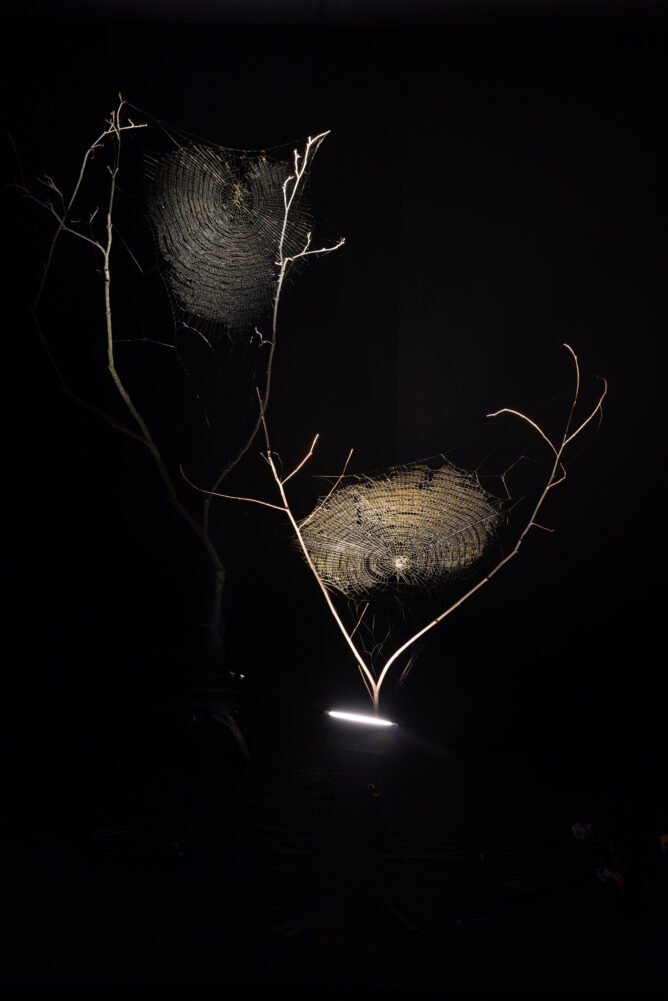
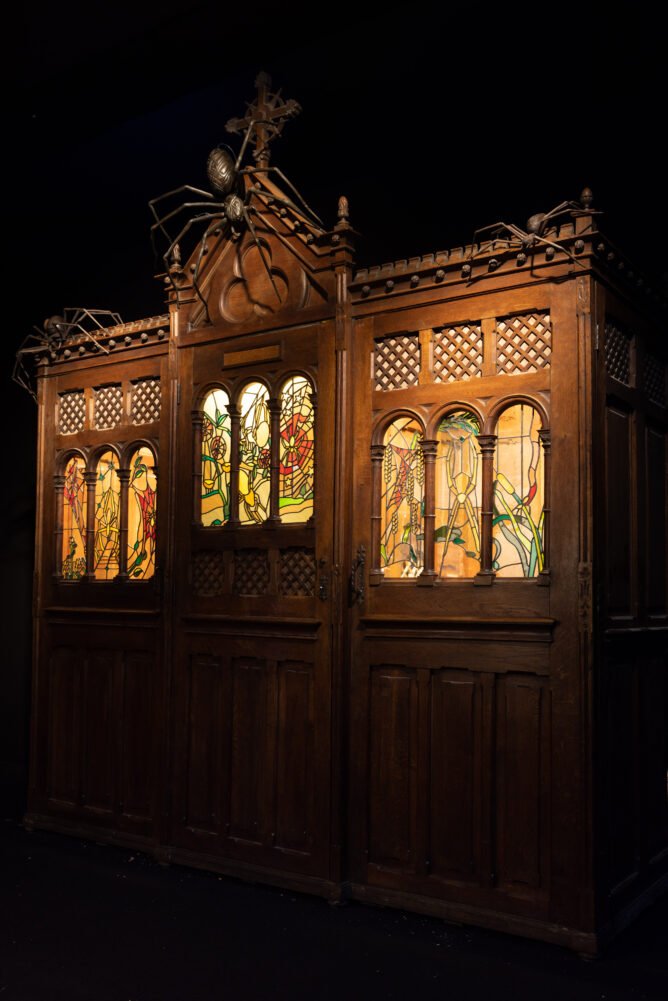
Saraceno is a multimedia artist, who for more than two decades has produced a body of work that draws attention to our role in a complex network of relationships that make up an ecosystem. Web(s) of Life at Serpentine will delve into the many ways in which life forms, extractive technologies, and energy regimes are inextricably linked to climate injustice.
Tomás Saraceno In Collaboration: Webs Of Life is on view until September 10th at the Serpentine at Serpentine South Gallery, Kensington Gardens, London W2 3XA
Niki de Saint Phalle's Tableaux éclatés Is a Posthumous Ballad to Her Beloved Jean Tinguely
text by Barbara Norton
"Hymn of love. Cannibalism. Communion.
Jean - I devour you. I absorb your strength. Your soul joins mine.
Breakdown, movement, now belong to me too.
Waiting for the breakdown, waiting for Godot, waiting for the mishap, life.
I am even looking forward to the breakdown (perhaps to experience the infinite joy of things working again).
Through my new works, Jean, we continue to collaborate. You are present even if these paintings don't look like you.
ORDER. CHAOS. CONCRETE. ABSTRACT. COMPOSITION. DECOMPOSITION. ETERNAL RETURN.
These ideas took shape in my mind through intuition.
My first subject was Hindu deity Ganesh, bearer of luck and happiness.
The 'tableaux éclatants' have become my pals, my companions.
A photoelectric cell activates them, so someone walking by is enough to animate them.
If I go down in the middle of the night to eat a banana, I am accompanied by a light show, sound, movements and soft noises.
I have taken down all my older paintings and live only with them."
Niki de Saint Phalle, Letter to Jean Tinguely, 1993
Addressed to her artistic partner and second husband who died two years prior, Niki de Saint Phalle’s Letter to Jean Tinguely was written in 1993 to accompany her new series of works, Tableaux éclatés. Thirty years later, and over sixty years since de Saint Phalle first met Tinguely, Tableaux éclatés is on display at Galerie Georges-Philippe & Nathalie Vallois in Paris. The title can be roughly translated to “burst paintings” or “shattered paintings”—both of which embody the fragmentary heartbreak and movement of the exhibition.
Technically, Tableaux éclatés draws on Tinguely—activated by photoelectric cells, the paintings move as the viewer approaches, similar to Tinguely’s own work. Skulls are cut open, bodies are ripped apart, and the moon rises. Then, all is put back together again. Through photoelectric sensors and hidden motors, de Saint Phalle engineers the chaos of visual death and mechanical reincarnation.
She herself says, “I am even looking forward to the breakdown (perhaps to experience the infinite joy of things working again).” Here is the crux of Tableaux éclatés: breakdown, and in its wake, strange joy. Niki de Saint Phalle’s paintings burst and shatter and then, loyally, they work again.
Though the form may draw heavily from Tinguely, the works themselves are unabashedly de Saint Phalle’s. Her thick, famous Nana figures sunbathe among multicolored elephants. Pink skies and pink breasts cavort while a golden-trunk Ganesh, “bearer of luck and happiness,” is flayed open, then slid back into one.
There is a jumbled chaos to Tableaux eclatés—as if Niki de Saint Phalle’s grief itself engineered the wires and motors. The image of a widowed Niki de Saint Phalle eating a banana in the dark with only the company of her gently whirring paintings is as dystopian as it is comfortingly domestic. In Niki de Saint Phalle’s own words, none of her older paintings remain. Tinguely is also gone. Now, she lives with Tableaux éclatés; inevitable, mechanical death and then a masterful putting-together—perhaps not of the one who left this world, but of the one who remains.
Tableaux éclatés is on view through October 28th at Galerie Georges-Philippe & Nathalie Vallois in Paris, 36 rue de Seine
14 Artists Question the Possibility of Human Benevolence & Ecology in Ce que nous donne la terre @ Afikaris in Paris
text by Barbara Norton
Much like nature itself, Ce que nous donne la terre (What the earth Gives Us) is an exhibition comprised of many disparate parts: resin, beads, and acrylic are to the show what beetles, silt, and chlorophyll are to our natural world. Also like the natural world, Ce que nous donne la terre is undeniably united. With fourteen different works on view, each artist challenges what it is to be a human who is both part of that precious, quivering equilibrium of the Earth and a disruptor of it.
While the human is centered throughout the show, we are always in our most early context—nature. In doing so, the relationship between us and world is reimagined countless times, a testament to its eternal loamy dynamism. In Beya Gille Gacha’s haunting Lady Mirror, a blue Mother Nature bathes in black water and algae. She is tranquil, but perhaps not kind—humid anger billows from her like steam from a bath. Though she is a humanoid figure, her lapis lazuli-colored skin is jarring and unnatural against the dirty porcelain.
A blue-bodied figure also appears in Omar Mahfoudi’s Hidden behind the sun. Shielding his visage from the violent, lone smear of sunlight, Mahfoudi’s blue man is blurry with cool, wet anguish beneath the red-yellow light.
The people of L’Eden are—perhaps—more at peace with their world. Blending into the foliage entirely, their jewelry, clothing, and hair are the only denotation of where the leaves end and their bodies begin. Maybe they have returned to the earliest beginning among the lush, green leaves. But there is also a more sinister possibility: are the figures making a return to their roots, or are they trapped behind the rapidly encroaching leaves? Will the foliage continue to grow and twist across the canvas until it blots them out entirely?
This tenuous relationship winds itself through each work in Ce que nous donne la terre, on view through 23rd September at AFIKARIS Gallery. What is our place in a world where we are both the product and demise of natural creation?
Ce que nous dans la terre is on view through 23rd September at AFIKARIS Gallery 7 Rue Notre Dame de Nazareth.
Color Becomes an Agent of Transmutation in Shaping Color @ VSF in Los Angeles
VSF’s exhibition Shaping Color, conceived by LA-based textile artist Diedrick Brackens, brings together six artists to explore the relationships between color and process in their respective practices. Many works in the exhibition are monochromes or utilize a restricted palette. Historically monochromes often signal an intent to emphasize mastery and skill; also, in parting with all information save the essential, artists attempt to access the ineffable and the spiritual.
Color, as employed by these makers, is intrinsically tied to their mediums and modes of production. Color becomes an agent of transmutation, not just a mere surface or mask for form; these objects are altered in ways that inform their subjects radically and color is treated as material rather than surface or ornamentation.
Shaping Color is on view through September 16 @ VSF, 812 N HIGHLAND AVE, LOS ANGELES
Noah Dillon New Works Is A Beautiful REM-State Dream
Pio Pico, LA presents New Works, a solo exhibition by Los Angeles based artist Noah Dillon curated by Noemi Polo. Noah’s unique trajectory as an artist is key to understanding his perspective and mission. Dillon spent his formative years in Durango, Colorado, a town situated upon the ‘ four corner’ of Colorado, Arizona, New Mexico and Utah. His upbringing in a rural environment, liminally positioned both nowhere and everywhere, inspired a fascination with the American imagination and landscape; how our internal landscapes are cathected onto the material world. Contrasted by his cosmopolitan career as a fashion photographer in Los Angeles, his perspective tensions the old west and the new gods of Americana. New Works explores the corporeal body and its relationship to the engineered landscape. Featuring a series of photographs captured from trail cameras installed across disparate parts of Los Angeles— a Whole Foods, Griffith Park, and MacArthur intersection— Dillon has amassed nearly 1 million images, of which a selection of ten are featured. The anonymous, mechanized capture of the trail cameras is imbued with a delicate attentiveness, one that Dillon uses to construct a non-linear narrative of space and time in the City of Angels. Within this microscopic attention to detail, there’s a discrete pathos in the imbuement of human touch to a camera that functions without it. Moments where the camera had been covered by someone’s thumb have been compiled to form “Untitled - Red Collage”, an experiment in color and form. Centered in the middle of the exhibition is “Untitled - White Dome” that acts as a gravitational center—turning the god-sized hole of late modernity into a reflective pool in which ‘the self’ is simultaneously implicated and alienated. On view until August 26 at Pio Pico.
Le Début Surveys Over 50 Works Dating Back to the Early '70s by Julio le Parc @ Galleria Continua in Paris
text by Barbara Norton
Le Début, on view through September 21st at Galleria Continua in Paris, is a triumph of both artist and movement. Bringing together over fifty works by Argentinian-born artist Julio le Parc, Le Début celebrates illusion and artistry through the canvas of le Parc, a hugely influential figure in the early beginnings of what would become the Op Art and Kinetic Art movements.
The abstract images of le Parc’s work assuredly reject frivolity—instead, every stroke, line, and curve hums with purpose. Some of these works are rendered on canvas, while others are in three dimensions, such as Sphère Bleue, a large mobile that physically embodies much of the visual movement of le Parc’s 2D pieces.
Mesmerizing in its mathematical precision and color, le Parc’s canvases glow. His visual dynamism walks along a thin, taut tightrope, baseless but undoubtedly balanced. Le Parc, who moved to Paris in 1958, imbues a deep movement into his abstract and geometric forms. He further liberates this movement with his rainbow of mercury-vapor color. Together, these elements create Le Début—a faithful survey of over fifty years of an artist’s unique visual language.
Le Debut is on view through 21st September at Galleria Continua 87 Rue du Temple.
Lost Narratives Are Excavated As A Form of Restitution in The Struggle of Memory @ PalaisPopulaire in Berlin
As Milan Kundera writes in The Book of Laughter and Forgetting (1979), “the first step in liquidating a people is to erase its memory. Destroy its books, its culture, its history… The struggle of man against power is the struggle of memory against forgetting.” The artists in this exhibition are concerned with remembering, reconstructing, reimagining, and restoring. Part 1 of The Struggle of Memory focuses on how memories are embodied, presenting artworks that probe in different ways how the body absorbs, processes, stores, and recalls experiences. Part 2 explores how memories are inscribed, bringing together artworks that draw our attention to the traces of history in the natural and built environment while proposing alternative, sometimes subversive strategies of looking at the past. The show, curated by Kerryn Greenberg, features work by Wangechi Mutu, Kara Walker, Samuel Fosso, Anawana Haloba, Mohamed Camara, Berni Searle, Lebohang Kganye, Toyin Ojih Odutola, and Mikhael Subotzky.
Part 1 is on view through September 18th; part 2 is on view October 6th through March 11th at PalaisPopulaire, Unter den Linden 5, 10117 Berlin.

